

No More Border Closure in Japan After Covid Downgrade on May 8, 2023
End of covid border control brought forward to april 29.
Last January , Katsunobu Kato the Japanese Minister of Health, Labour and Welfare announced the government was thinking of reconsidering its pandemic measures. The next easing on the anti-Covid measures in Japan has been confirmed on Friday March 10 , with an implementation first announced for May 8, 2023, but finally starting from Saturday April 29, 2023 .
Some excellent news for international visitors, who were allowed in Japan for sightseeing since October 11, 2022, but with specific entry procedures.

🦠 Sanitary rules lifted after downgrade
In the wake of South Korea since January 30 , and thanks to a favorable and rather stable epidemic context, Japan downgraded the new Coronavirus 🦠 from Class II to Class V, that is to say at a common infectious disease level such as the seasonal flu , incurring fewer risks for the population.
This new categorization also implies that Covid-19 cannot be used anymore as a reason to:
- Declare a state of emergency (the local version of the lock-down);
- Order isolation of contact cases for 5 days and patients for 7 days;
- Implement specific sanitary measures at Japan’s borders (such as quarantine); or,
- Close the borders to international visitors.
The last restrictions are gradually being phased out to shift back to a pre-Covid situation. The only event that could jeopardize the return to normal is the advent of a major new variant.
This announcement is made at the same time as the relaxing of face mask 😷 wearing guidelines in effect from March 13 . As a matter of fact, indoor mask wearing mandates are lifted and the decision to cover nose and mouth is now left to each individual’s judgment, by assessing how crowded is the place and according to one’s health condition. In fact, and probably at least until Covid is actually downgraded to a common disease status, the Japanese are still wearing a face cover indoor and outdoor.

✈️ End of pandemic border restrictions
The Japanese government has therefore decided to wait until the end of the 1st touristic spring 🌸 after Covid, but to anticipate the national holidays of the Golden Week and the G7 summit at the end of May in Hiroshima to implement these long-awaited measures.
Thus, from Saturday April 29, 2023 on, the current borders restrictions will be lifted for all international visitors arriving in Japan (except travelers coming from China), namely:
- End of the 3 vaccine doses to prevent the spread of the Coronavirus;
- End of the mandatory negative PCR Test for travelers who are not fully vaccinated.
Travelers entering Japan will therefore only be required to have a valid passport and abide to the usual custom and immigration procedures to enter the archipelago. A major change that is likely going to impact the Visit Japan Web app, currently used by travelers to register their health status before arriving in Japan.
For comparison purpose, in early April the United States’ anti-COVID measures to enter American territory by air have been extended until 2023, May 11 : the only travelers allowed must be fully vaccinated and their vaccine status controlled before boarding the plane ✈️ .
🏥 Support to public healthcare
Most of the announcements detailed by M. Kato on March 10 relate to the care of Covid patients in the future. Summer 2022’s uptick of Omicron variant contamination has shed a light on some major weaknesses of the Japanese healthcare system, especially a lack of cohesion and solidarity between the medical facilities, most of them being private hospitals. Ambulances were sometimes made to wait for hours in the street before their patients could be accepted in a designated hospital willing to take them in.
In an effort to provide better access to treatment , the government has decided that all healthcare professionals and hospitals in the country must admit and look after Covid patients. In theory, from May 8, a Covid contact-case or patient should not be refused anymore ; but it remains to be seen how this measure will actually be implemented.
Other significant change: as the Covid-19 health risks are considered lower, a larger part of the medical bills will be left to the patients. A "financial shield" set for a few months in 2023 is limiting the treatment costs to the same amount as the flu’s . Consequently, the patient has to pay for a Covid detection test, but the treatment cost would be subsidized. The hospital fees will be calculated according to the symptoms’ severity and the patient’s age; patients 75 years and older will benefit from a larger coverage.
Lastly, vaccination against Covid-19 remains free and Japan launched a new roll-out in 2023 for the elderly and people with fragile conditions can be vaccinated twice a year: in May and in September .
Hopefully this article is the last pertaining to Covid-19 and its impacts on travel to Japan on Kanpai. A return to normality combined with individual awareness seems to be the best development, encompassing both tolerance and responsibility. It is about time to go (back) to Japan!
- Flights and Airports
- Accommodation
- Transportation
- Internet & Phones
- Budget and money
- Japanese Food
- Visit with Kids
- Seasons: spring / summer / autumn / winter
- Weather forecast
- Time in Japan
- Holidays & Festivals
- Natural Disasters
- Customs and Duties
- Works and Closures
- From April 29 to 5 May -- Japanese Golden Week
- May 12 -- Mother's Day in Japan
- June 6 -- Beginning of the rainy season (Tsuyu) in Japan
- June 21 -- Summer starts in Japan
- From July 1 to 31 -- Gion Matsuri Festival in Kyoto with float processions on July 17 and 24
- July 1 -- Season start for climbing Mount Fuji
- Tokyo : Shinjuku , Shibuya , Harajuku , Asakusa , Akihabara , Odaiba , Ikebukuro , Ueno , Roppongi , Chiyoda , Ryogoku ...
- Around Tokyo: Kamakura , Nikko , Hakone , Mount Fuji , Mount Takao , Yokohama ...
- Kansai: Kyoto , Nara , Osaka , Mount Koya , Himeji , Kobe , Kinosaki , Kumano Kodo , Ise ...
- Japanese Alps: Kanazawa , Matsumoto , Takayama , Shirakawa-go , Nakasendo ...
- West: Hiroshima , Miyajima , Shikoku , Onomichi , Naoshima , Izumo , Kurashiki , Matsue ...
- South: Kyushu , Okinawa , Yakushima ...
- North: Hokkaido , Tohoku ...

- Temples and Shrines
- Gardens and Parks
- Hiking and Trekking
- Observation Decks
- Public Baths (Onsen and Sento)
- Festivals (Matsuri)
- Amusement Parks
- Visit on a Budget / Luxury

Keikaku is a travel agency specialist of Japan and providing different kind of services:
- Japan Rail Pass
- English speaking Guides
- Pocket Wi-fi
- Japan Nightlife
- Working in Japan
- Religion and Spirituality
- Arts and History
- Movies / Animated Movies
- Japanese Music
- Studio Ghibli
- Photos / Videos
- Weird Japan
- Translations
- Kana & Kanji
- Japanese Swear Words
- Honorific Suffixes (san, kun, chan...)
- Introducing yourself
- Thank you / Apologize
- Count / Say Your Age
- Say the Date / Tell the Time
- Happy birthday
- Enjoy Your Meal
- Writing your name

Kanas are the much-needed basic characters of written Japanese language. Memorize them at a fast pace with our method.

Ask any kind of question and share your knowledge about Japan in Kanpai’s community space, our Q&A section Kotaete.

Isshoni means "together" in Japanese: share your trip details (dates, places you would like to visit) and find companions to travel in Japan.

Create your Kanpai account to manage your profile and view your participation history (questions, answers).
Select your language
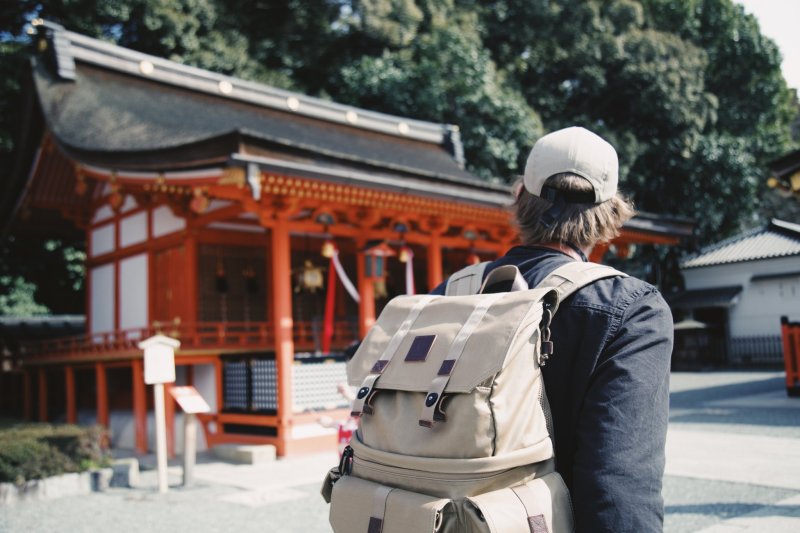
Japan Dropping COVID Entry Requirements This May
No more vaccine requirements or pcr tests needed before travel as of may 8th.
There are plenty of logistical considerations that come with travel planning, from where to stay to what sights to see. When Japan reopened borders to independent foreign travelers on October 11th, 2022, there was another item to add to that list – either three doses of an approved COVID vaccine, or a negative PCR test within 72 hours of travel. Understandably, these extra requirements have seen some potential visitors hold off from solidifying plans.
There's good news on the horizon, though, with the Japanese government moving to scrap those entry requirements as of May 8th, 2023. On the same day, COVID is set to be declared as a common disease, hopefully heralding a return to something resembling pre-pandemic times.
Obviously, it's important to note that if you do visit before May 8th, you'll still need to adhere to the existing entry requirements.
To start mapping out your travel adventures, take a look at May events on our website here.

Explore nearby
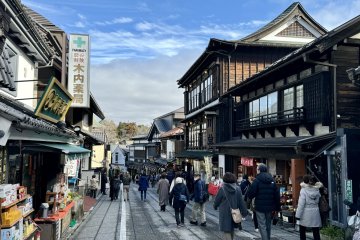
Narita City: More Than Just the Airport
By Veronica Carnevale
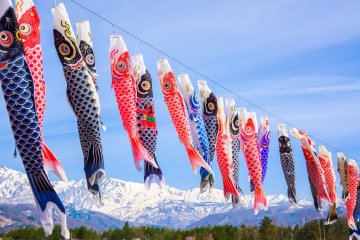
Guide to Golden Week

Valley of Witches: a New Ghibli Park Attraction

2024 Grand Sumo Tournaments
Top articles.
- Recommended

CRAFT SAKE WEEK 2024

King Tacos in Kin Town
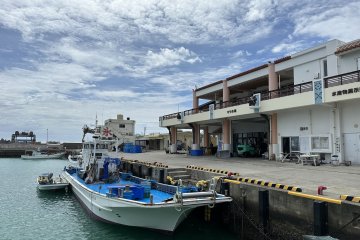
Uminchu Shokudo in Yomitan

Mikasa Matsuyama in Naha
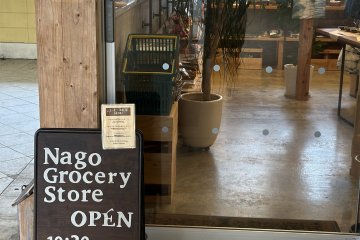
Nago Grocery Store

Mount Omuro

Night Walking in Azabudai Hills

M&C Cafe, Marunouchi

How to Easily Set-up Your Holafly eSIM

Internet Access for Travelers in Japan

12 Reasons to Visit Sapporo

When to Go to Sapporo

Top Ten Travel Tips Before Visiting Japan

Holafly: The Best eSIM for Your Trip to Japan

Useful Smartphone Apps for Japan
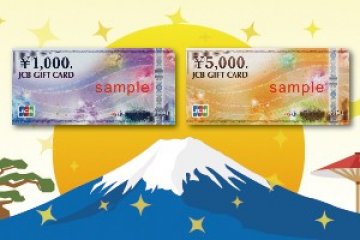
JCB: A Credit Card for your Travels in Japan and Beyond

First Time to Sapporo

Visiting Hiroshima with Kids
More from this category.

Currency Conversion & Exchange Rates
By Tom Roseveare

Beppu Makes Booking.com's Trending Destinations List

Two More Sakura Drinks Hit Starbucks Japan
- Tours & Experiences
- Tailor-made Trips
- Bahasa Indonesia
We are happy to see you again!
Continue with
Or use email.
No Account? Create one
Create account
Already have an account? Sign in
Quickly Sign up with
I agree to Japan Travel's Terms of Service and Privacy Policy . Terms of--> and acknowledge that Japan Travel's Privacy--> applies to me.-->
Email reset password link
Please check your inbox and click the link we will send to you.
Japan Dropping COVID Entry Requirements This May
No more vaccine requirements or PCR tests needed before travel as of May 8th

There are plenty of logistical considerations that come with travel planning, from where to stay to what sights to see. When Japan reopened borders to independent foreign travelers on October 11th, 2022, there was another item to add to that list – either three doses of an approved COVID vaccine, or a negative PCR test within 72 hours of travel. Understandably, these extra requirements have seen some potential visitors hold off from solidifying plans.
There's good news on the horizon, though, with the Japanese government moving to scrap those entry requirements as of May 8th, 2023. On the same day, COVID is set to be declared as a common disease, hopefully heralding a return to something resembling pre-pandemic times.
Obviously, it's important to note that if you do visit before May 8th, you'll still need to adhere to the existing entry requirements.
To start mapping out your travel adventures, take a look at May events on our website here.
- Share on Facebook
- Share on Twitter
- Copy link to share
Japan Travel Staff

Top Articles
- Recommended

Mount Omuro

Haneda Airport Ranked World's Cleanest

Tokyo One of the World's Most Walkable Cities

2024 Grand Sumo Tournaments

Kurobe Unazuki Canyon Route to Link with Tateyama Kurobe Alpine Route

Guide to Golden Week

Tokyo Takes 2nd Place on Top Coffee Cities List

Valley of Witches: a New Ghibli Park Attraction

Sapporo Beer Opens New Brewery in Tokyo’s Ebisu

Guide to Bringing Medicines Into Japan

Your Name: Real-Life Locations in Tokyo

Hachiko Statue in Shibuya

Iwatayama Monkey Park

Shibuya Crossing

Daikoku Car Meet

Kanamara Penis Festival

Guide to Suica Cards

Japanese Urban Legends

Guide to PASMO Cards
More from this category, guide to bringing medicines into...
By Japan Travel

Money in Japan
By Tom Roseveare

Guide to Earthquakes in Japan
By Edward Yagisawa

Getting a Tattoo in Japan
By Serena Ogawa
Leave a comment
Let us know how we can help.
Help us improve JapanTravel.com
We welcome any suggestions regarding this content. Your feedback is confidential and will be used to help improve this page.
Suggest an edit
https://en.japantravel.com/news/japan-dropping-covid-entry-requirements-this-may/69737
Thank you for your support!
Your feedback has been sent.
- Subscribe Digital Print

- LDP funds scandal
- Latest News
- Deep Dive Podcast
Today's print edition
Home Delivery
- Crime & Legal
- Science & Health
- More sports
- CLIMATE CHANGE
- SUSTAINABILITY
- EARTH SCIENCE
- Food & Drink
- Style & Design
- TV & Streaming
- Entertainment news
Japan to end COVID-19 border measures on May 8

Japan will end the current border control measures on travelers from overseas on May 8 in line with its decision to categorize COVID-19 as a common disease the same day, the government said Monday, in a major shift toward normalizing social and economic activities.
Currently, all entrants are required to present certification of three COVID-19 vaccinations or a negative coronavirus test taken within 72 hours prior to departure.
The end of the COVID-19 border controls, first introduced in February 2020 and considered by some the most stringent among the Group of Seven industrialized nations, is expected to help revive inbound tourism to Japan, where spending by foreign visitors in 2021 plunged to a fraction of the record ¥4.8 trillion ($36 billion) in 2019.
In November 2021, Japan tightened border controls by barring the entry of nonresident foreigners and requiring returning Japanese nationals and foreign residents to quarantine at designated facilities as the country began seeing cases of the omicron variant of the coronavirus.
Initially implemented for a month, the control measures were later extended, sparking protests from foreign exchange students and business people. The country started gradually easing the daily entry cap in March 2022 before completely lifting it in October of that year.
Travelers arriving at five major airports — Narita, Haneda, Chubu, Kansai and Fukuoka — will be subject to the new framework, which is set to start when the legal status of COVID-19 is downgraded to the same category as seasonal influenza early next month.
It takes a few weeks for genomic test takers to get the results, according to government officials.
Ahead of the across-the-board lifting of border control measures, Japan will ease those on all arrivals from mainland China from Wednesday and give them the option of entering the country by presenting proof of being inoculated with three doses of a COVID-19 vaccine.
Currently, visitors from mainland China must present proof of a negative coronavirus test taken 72 hours or less before departure.
"We have decided to alter the tentative measures currently in place in light of the infection status at home and abroad, as well as border control steps taken by other Group of Seven nations," Chief Cabinet Secretary Hirokazu Matsuno said in a news conference, adding the government will continue its sample testing for arrivals from mainland China at airports.
In late December, Japan introduced blanket COVID-19 testing for all arrivals from mainland China amid an explosion in infections in the country after Beijing drastically relaxed its stringent "zero-COVID" policy that had involved lockdowns and quarantines.
In early January, it further tightened border controls for visitors from the region by requiring proof of a negative test.
In March, however, the government ended the blanket testing for such visitors but started random testing at airports after finding that the number of those testing positive for COVID-19 had dropped.
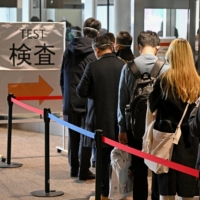
In a time of both misinformation and too much information, quality journalism is more crucial than ever. By subscribing, you can help us get the story right.
- Things to Do
- Food & Drink
- Shopping & Style
- Coca-Cola Foodmarks
- Restaurants & Cafes
- Music & Nightlife
- Neighborhoods
- Los Angeles

Here’s what to expect when Japan downgrades Covid-19’s classification status on May 8
The reclassification will lead to an ease in Covid-19 prevention rules, including on mask wearing and quarantine measures

Just last week, Prime Minister Fumio Kishida confirmed that Japan would be downgrading the Covid-19 disease classification status to the same level as the seasonal flu. As reported by The Japan Times , this change will now go into effect on Monday May 8 , right after Japan’s stretch of Golden Week holidays.
As explained in the report, Covid-19 will be officially downgraded from the Class 2 category, which includes diseases such as tuberculosis, to the less severe Class 5, which includes the seasonal flu. Previously, Japan announced it would even consider relaxing its recommendation on wearing masks indoors if the classification of Covid-19 was lowered.
If you’re curious what else will change when the downgrade goes into effect, here’s a short summary of what you can expect this coming spring.
- Those infected with Covid-19 will no longer be required to isolate and quarantine
- Close contacts to those infected will also no longer need to isolate
- The government will no longer be able to issue a state of emergency if Covid-19 infections rise
- Restaurants and bars will not be encouraged to shorten business hours or close
- More hospitals and clinics will be allowed to treat Covid-19 infected patients
- Wearing face masks will become optional and up to your own judgement
- Border restrictions to likely further ease (no further details have been given on this, but we will keep you posted as more information is released)
More from Time Out Tokyo
The 2023 Japan cherry blossom forecast is here
There’s now a Yayoi Kusama robot in Tokyo
Two Japanese carriers are in the world’s top 3 most on-time airlines in 2022
Kyoto and Sapporo ranked among the top 25 destinations in the world for 2023
5 new Japanese films and series coming to Netflix in February 2023
Want to be the first to know what’s cool in Tokyo? Sign up to our newsletter for the latest updates from Tokyo and Japan.
- Kaila Imada Associate Editor, Time Out Tokyo
Share the story
Discover Time Out original video
- Terms of use
- Work for Time Out
- Time Out Group
- Advertising
- Modern slavery statement
- Manage cookies
Time Out Tokyo
- Magazine subscription
- Digital edition
- Buy the guide to Tokyo
Time Out products
- Time Out Worldwide
Top 12 Things to Do in Japan in May
Best Things to Do and Places to Visit in Japan in May
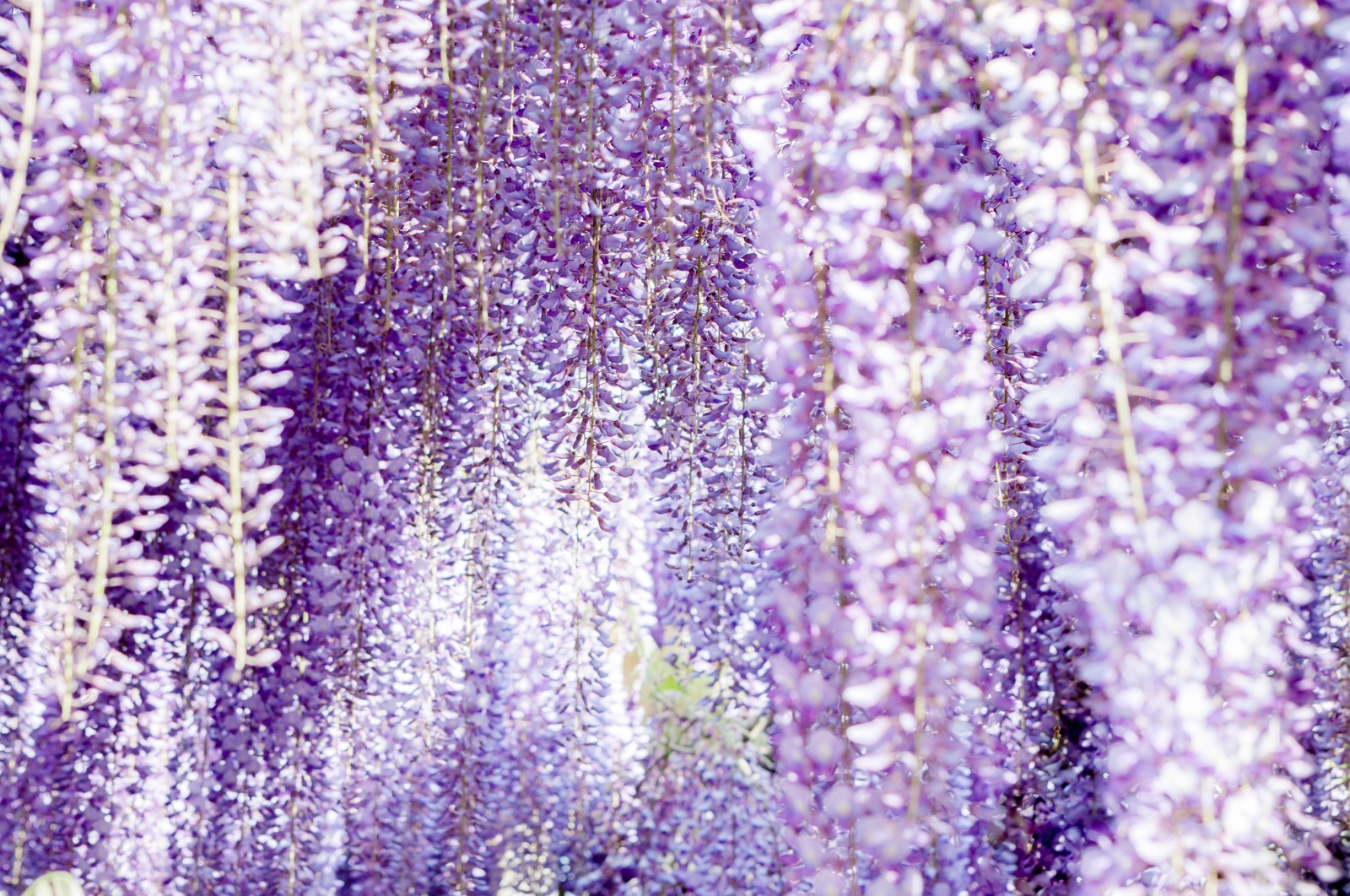
May is an absolutely delightful month to visit Japan and enjoy outdoor activities with warm and comfortable weather. As spring arrives, the country gets colourful with spring flowers and green.
From the end of April to the beginning of May is holiday season in Japan, which is called Golden Week and every touristic spot gets extremely packed. So if you wish to avoid the crowds, better to visit Japan from mid May.
Related article: Best Things to Do during Golden Week in Japan
*Please note that this article contains affiliate links.
Japan in May
May in Japan is the end of spring and the entrance of summer, offering various tourist attractions around the country. You can view late blooming cherry blossoms in colder areas as well as other seasonal flowers such as wisteria and nemophila. As winter snows melt in mountain districts, the season for Kamikochi and the Tateyama Kurobe Alpine Route comes.
Please note that some places are more crowded for Golden Week, series of national holidays in the beginning of May, than usual. Rainy season begins as early as the end of May, depending on the year. Average temperatures in Tokyo in May range between 16°C (60.8°F) and 20°C (68°F).
1. Mt. Fuji and Green Tea Field

It’s the best season for the iconic view of Mt.Fuji and green tea plantations. The best season to visit tea plantations in Japan is in May, before leaves are picked and Mt.Fuji stands beautifully with remaining snow on the tip of the summit. Imamiya in Fuji city is highly recommended!
more info ▶ Obuchi Sasaba and Imamiya: Best Green Tea Plantations in Shizuoka
2. Late Blooming Cherry Blossoms
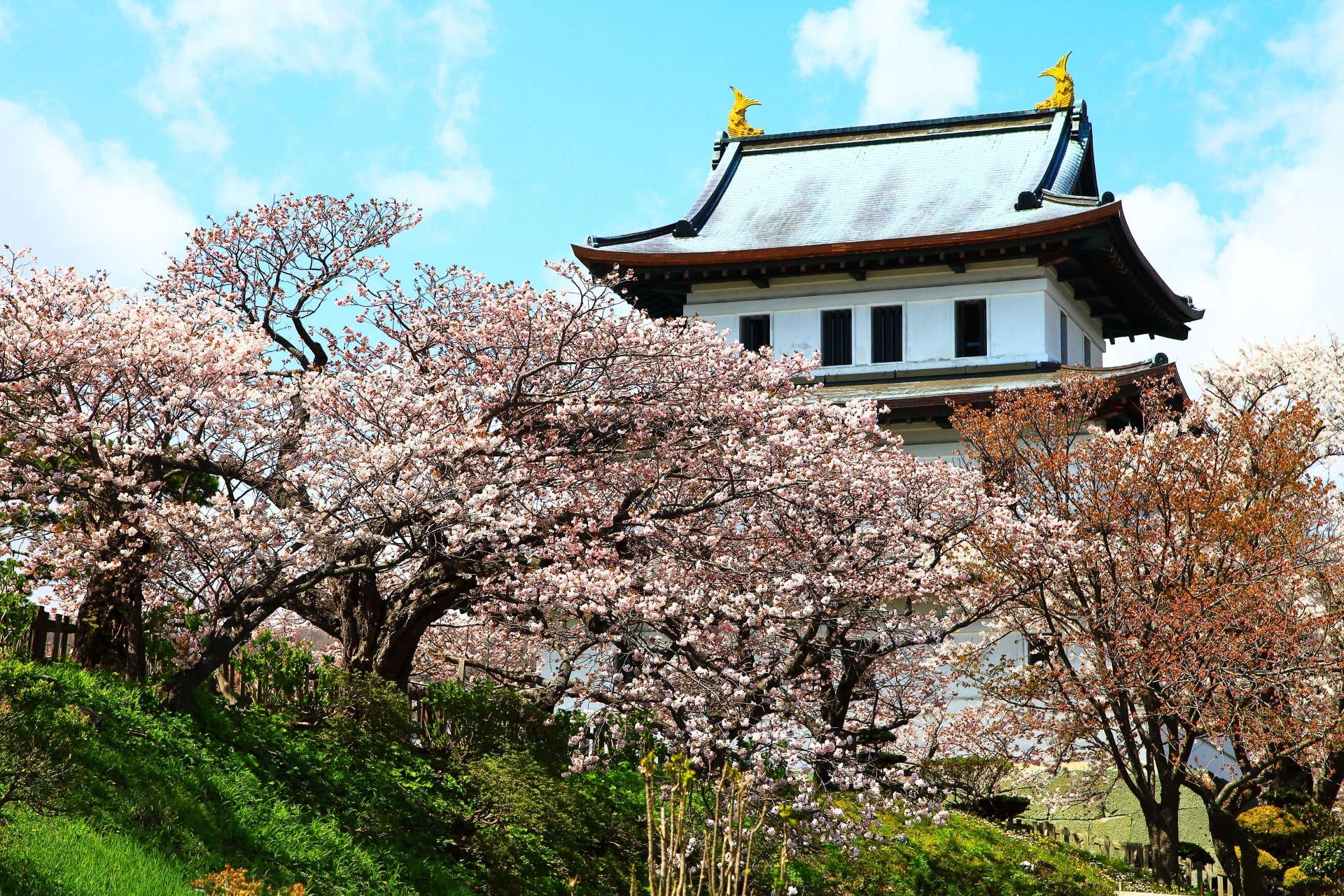
If you think cherry blossoms are only available in April, it’s absolutely wrong! There are some places which has late blooming cherry blossoms especially in northern part of Japan!
more info ▶ Amazing Spots for Late Blooming Cherry Blossoms from mid-April ▶ Best Cherry Blossom Spots in Tohoku Area
3. Wisteria
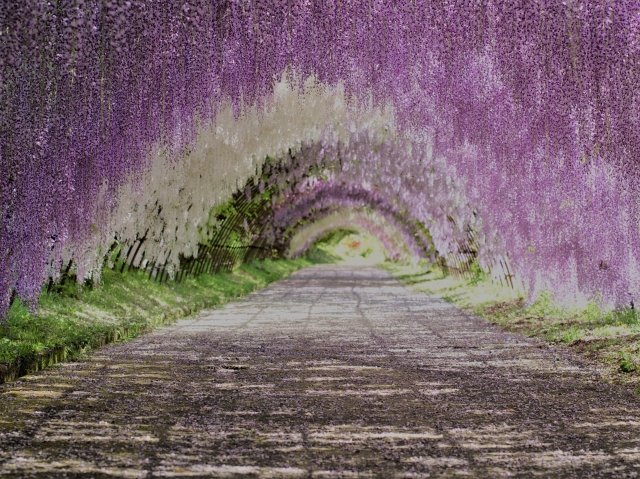
Wisteria (Fuji in Japanese) is popular spring flower in Japan and becoming a huge attraction for foreign visitors every year. The most famous wisteria garden in Japan is Kawachi Fujien Garden in Fukuoka Prefecture, but there is also another great garden near Tokyo, Ashikaga Flower Park in Tochigi Prefecture.
Related article ▶ Kawachi Wisteria Garden: The Most Beautiful Tunnel in the World ▶ Great Wisteria Festival at Ashikaga Flower Park ▶︎ Best Places to See Wisteria in Japan
4. Tokyo Grand Sumo Tournament

Discover the world of Grand Sumo Tournaments, held six times a year in odd-numbered months across Japan. Experience the thrilling matches in Tokyo, Osaka, Aichi, and Fukuoka. Notably, in May, the tournament takes place at Tokyo’s Ryogoku Kokugikan, the heart of sumo wrestling. Immerse yourself in Japan’s vibrant history and culture as you witness the power, skill, and tradition of these iconic events during your visit. Don’t miss this unique and unforgettable experience that showcases the essence of Japanese heritage. You can join a Tokyo Sumo Tournament Tour (Tickets Included) below!

5. Join Festivals
The festival season kicks off on April and continues through summer in Japan. There are numbers of big events in May such as Tokyo’s biggest festival, Sanja Matsuri . Join energetic and lively festivals in Japan to feel the traditional vibes. One of Kyoto’s three greatest festivals, Aoi Matsuri is also held in mid May, featuring a traditional parade with people in Heian-era costumes.
Related article ▶ Japan’s 3 Biggest Festivals in May
6. Pink Moss
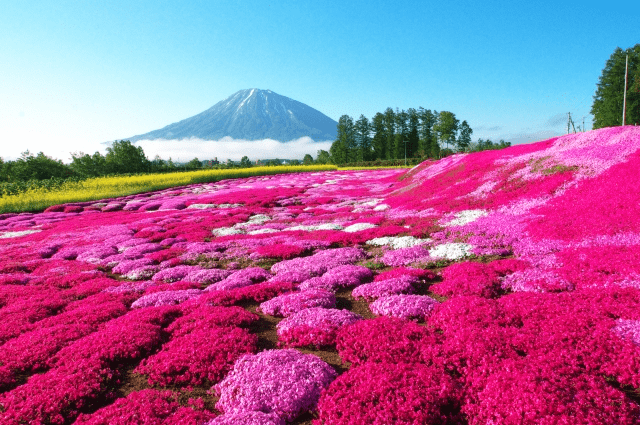
Pink Moss (Shibazakra in Japanese) is popular spring flower along with cherry blossoms. There are numbers of Pink Moss fields and festivals in Japan. The most popular one is Fuji Shibazakura festival which is located on the base of Mt.Fuji.
Related article ▶ Best Shibazakura Festivals in Japan
7. Hitachi Seaside Park
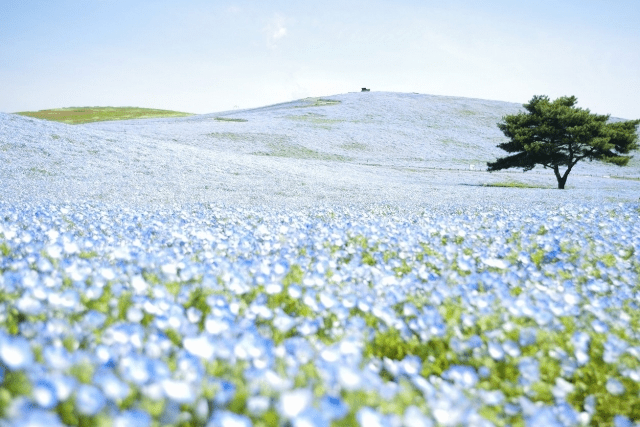
Hitachi Seaside Park (ひたち海浜公園) is the famous flower park located in Ibaraki prefecture. The magnificent hill covered by 4.5 million Nemophila (Baby blue eyes) flowers can be seen at the park till mid of May.
Related articles ▶ Nemophila Harmony at Hitachi Seaside Park ▶ Best Places to See Nemophila in Japan
8. Tateyama Kurobe Alpine Route
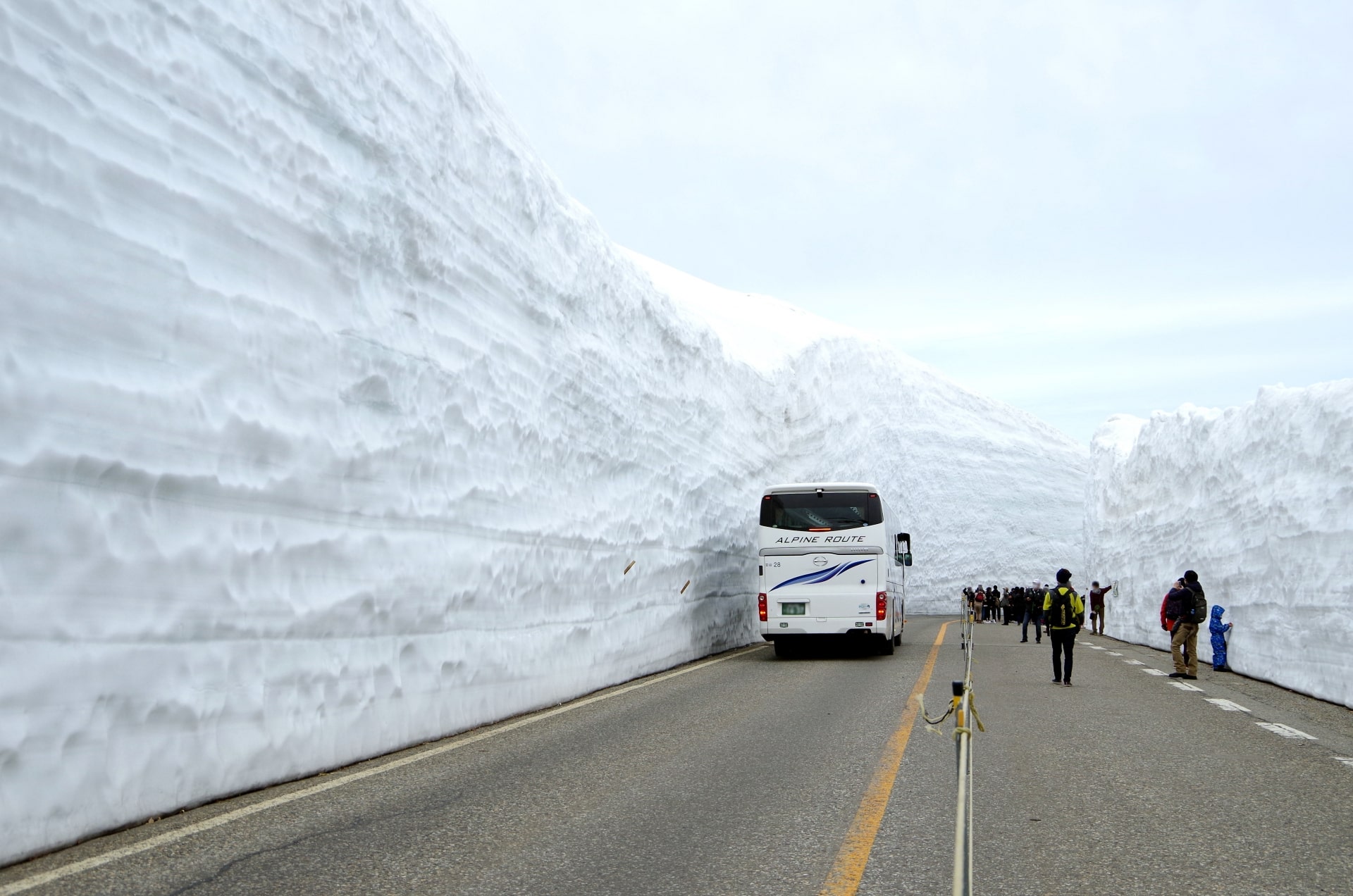
The popular tourist route, Tateyama Kurobe Alpine Route is open through spring and summer time. But the best time to visit there is before June, when the great snow wall “Yuki no Otani” can be seen before it melts.
Related article ▶ Guide to Tateyama Kurobe Alpine Route
9. Yamanakako Hanano Miyako Park
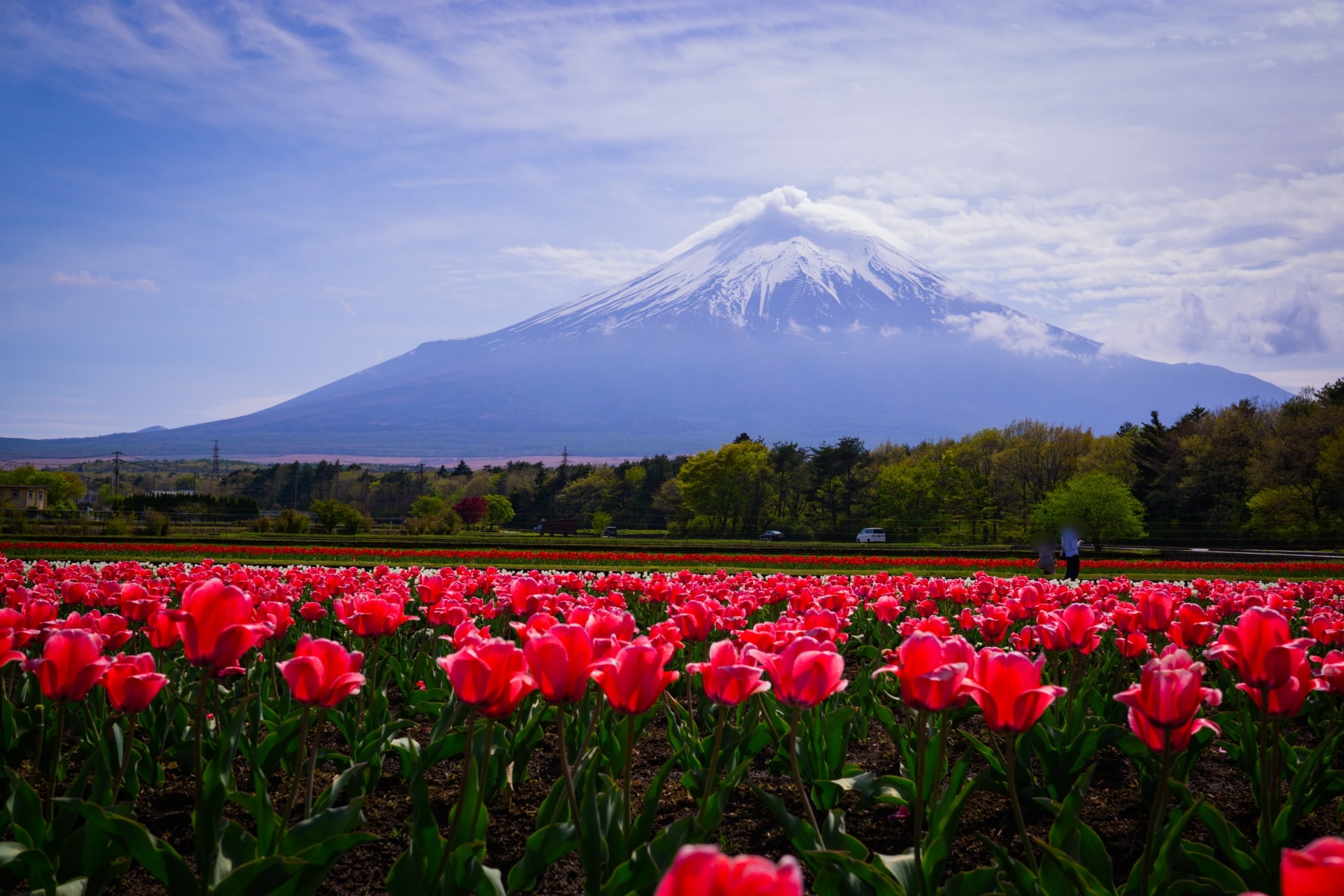
Yamanakako Hanano Miyako Park (山中湖 花の都公園) is a flower park located near Lake Yamanaka, one of Fuji Five Lakes, a group of lakes at the foot of Mt Fuji. The park displays a variety of seasonal flowers in each month, offering an astonishing scenery against a backdrop of Mt Fuji. In May, tulip and nemophila are in season. Visitors can enjoy the view of beautiful flowers and glorious Mt Fuji in a warm and comfortable weather.
Related article: Yamanakako Hanano Miyako Park
10. Blue Pond
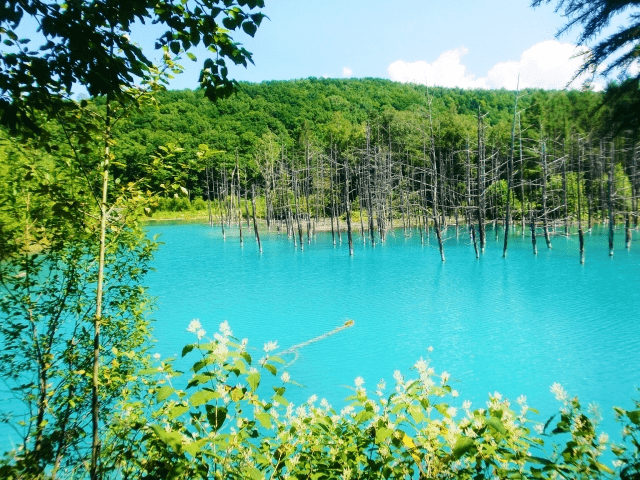
The famous Blue Pond in Hokkaido can be enjoyed all year around but accordingly, the best time to visit is in May. The water of the pond gets most transparent and the colour turns to beautiful cobalt blue.
Get a travel idea for travelling to Blue Pond and around ▶ 1 Week Itinerary in Japan: CENTRAL HOKKAIDO
11. Shiroyone Senmaida
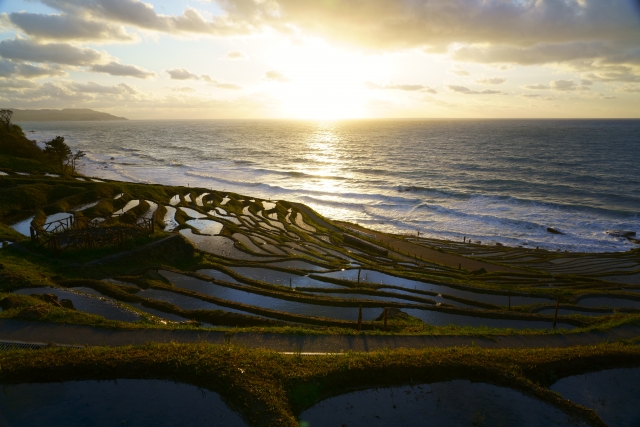
There are numbers of rice terraces in Japan as rice is the country’s main food products. Shiroyone Senmaida (白米千枚田) is a rice terrace in Ishikawa prefecture (located near Kanazawa city) and known for its exceptional landscape. In May, the terrace is watered before the plantation starts and the superb view of sunset reflecting on the terrace’s surface can be enjoyed.
Article article ▶ Shiroyone Senmaida: A Thousand of Terraced Rice Fields in Ishikawa Prefecture
12. Matcha Sweets

Late spring to early summer is the best time to enjoy Matcha products in Japan, and numbers of shops, cafes and restaurants release Matcha flavour food and drinks for the limited time. Matcha dessert buffet is one of the most anticipated food events of the year, which is held at several luxury hotels in Tokyo. See the links below for more details about Matcha food and drinks in Japan!
Related articles ▶ Best Matcha Food and Drink in Japan ▶ 4 Best Matcha Dessert Buffets in Tokyo
▽Check out this Japan Bucket List of 30 Best Things to Do throughout the year!▽
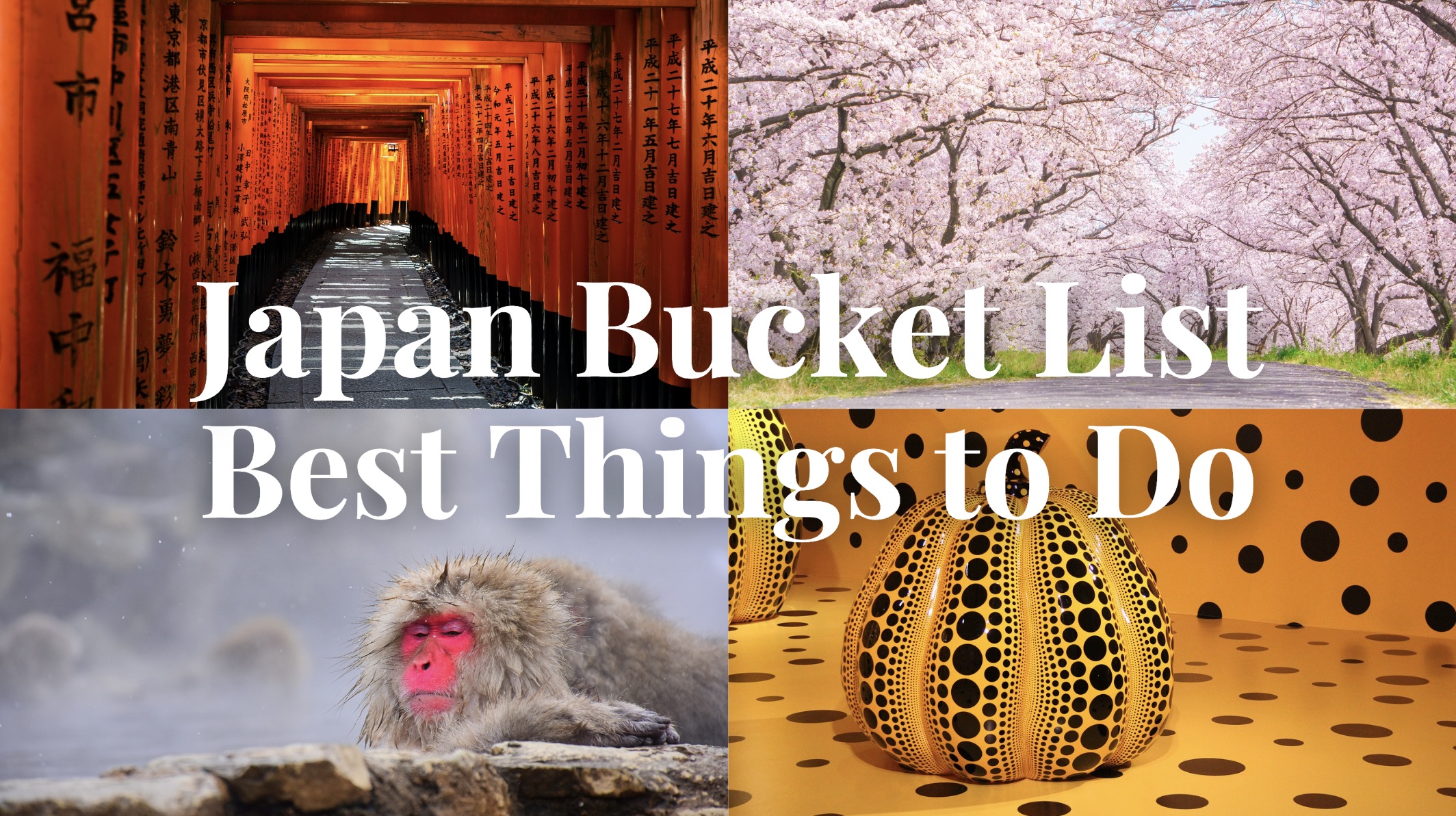
▼Check out the Travel Info in Japan in June!▼
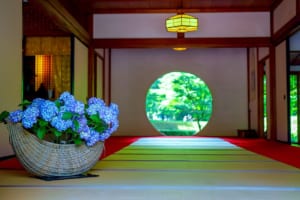
▽How to Get Internet Connection during traveling in Japan▽ ▶︎ Perfect Guide to Get WiFi Connection in Japan ▶︎ Which Pocket WiFi Rental is the Best in Japan? ▶︎ Which SIM card Option to Choose in Japan? ▶︎ How to Find and Use Free WiFi in Japan
Did you enjoy the list? For more idea about travelling in Japan in spring, please check out these articles, too!

▽ Related Articles▽
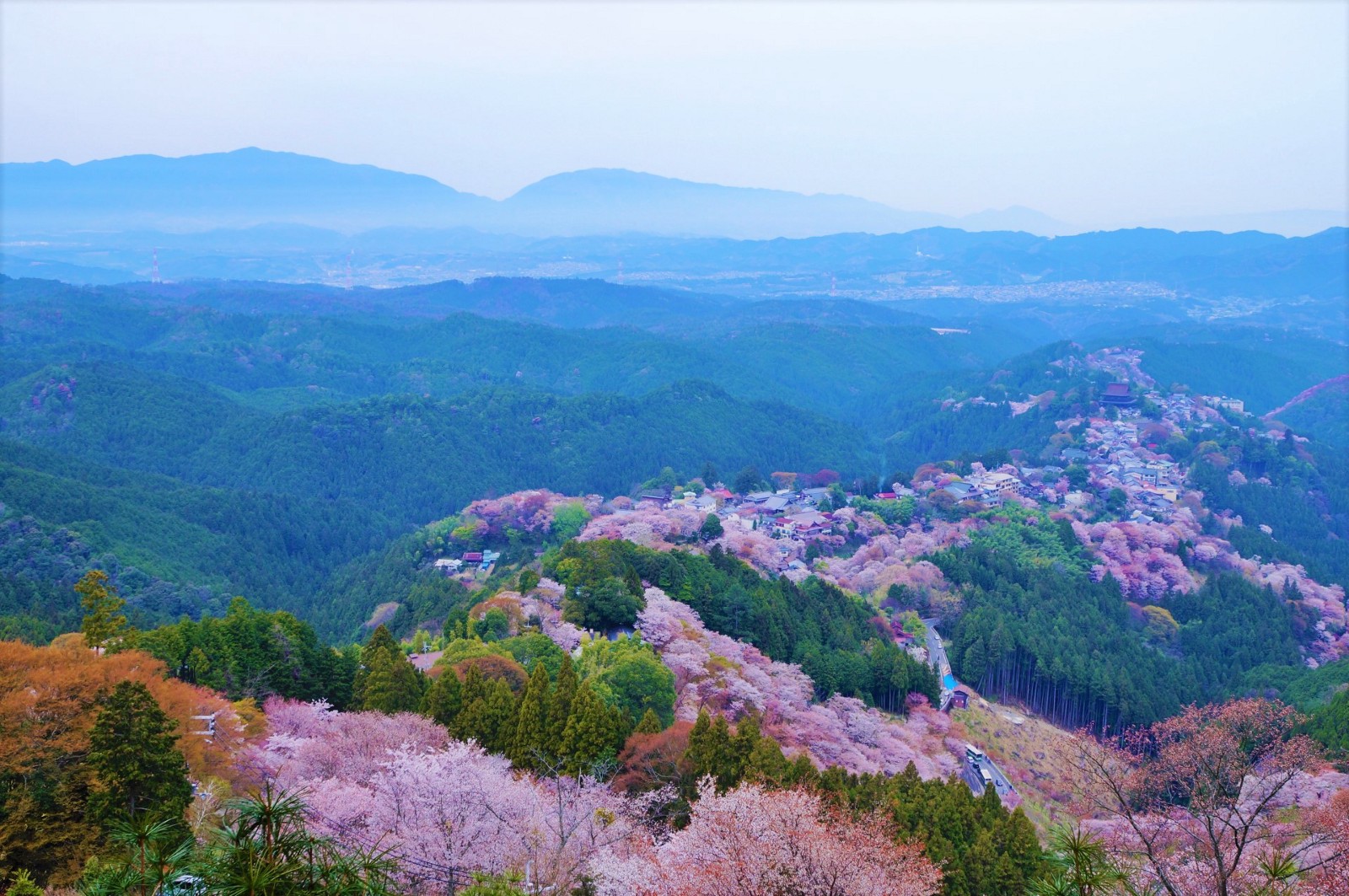
▼Editor’s Picks▼
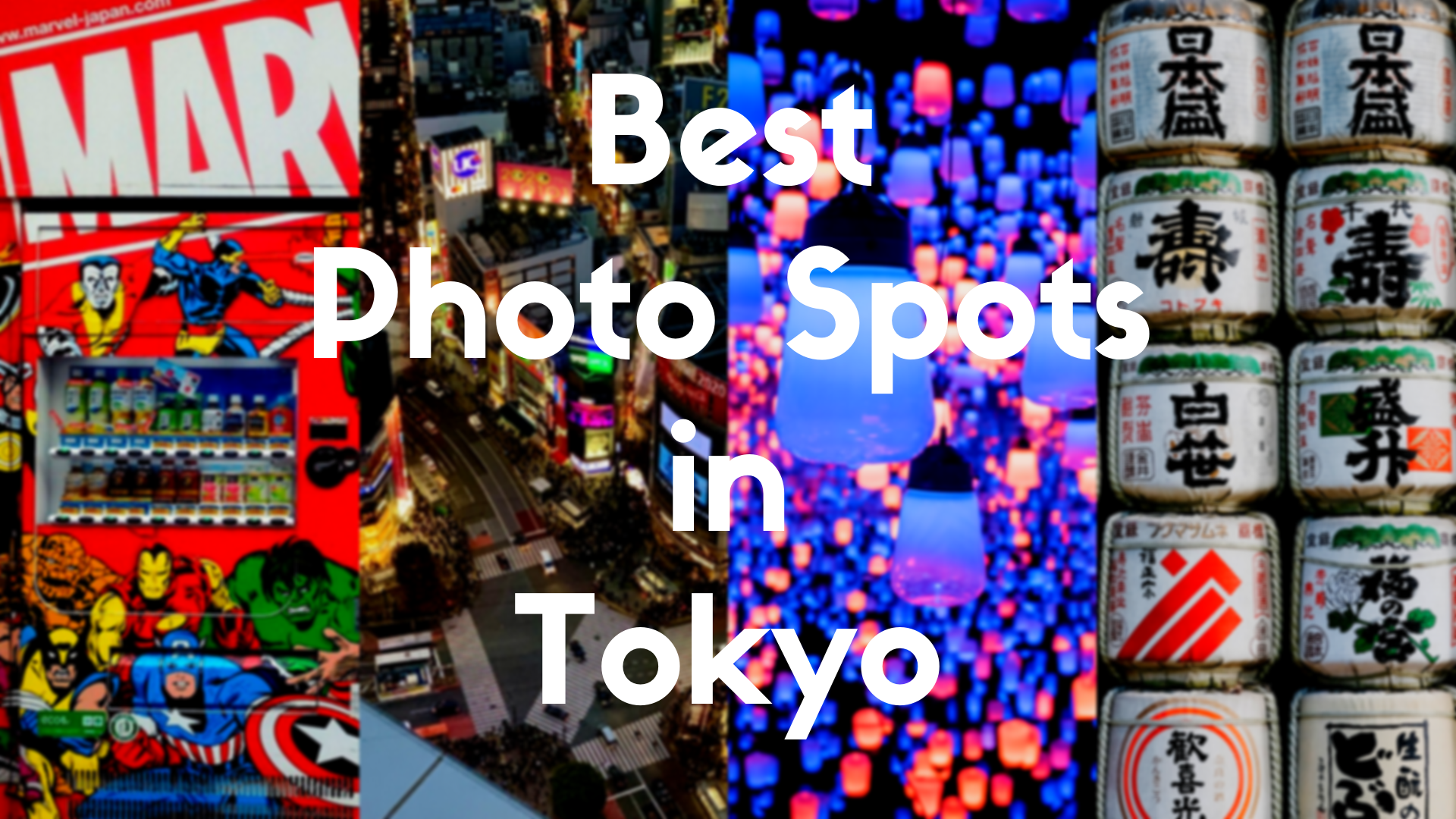
"The world is my oyster" A globetrotter 🌎 and hammock lover 🌞 who loves taking adventures to fuel wanderlust. Born and raised in Japan, I have lived and explored countries around the world. As a resident of Japan and based on my travel experience, I'd love to share my knowledge and tips for travelling Japan with my readers. I hope my story will help you plan your trip and have a great time in Japan 🌈
- Things to Do
- Japan Tourism
- Japan Hotels
- Japan Bed and Breakfast
- Japan Vacation Rentals
- Flights to Japan
- Japan Restaurants
- Things to Do in Japan
- Japan Travel Forum
- Japan Photos
- All Japan Hotels
- Japan Hotel Deals
- Last Minute Hotels in Japan
- Things to Do
- Restaurants
- Vacation Rentals
- Travel Stories
- Rental Cars
- Add a Place
- Travel Forum
- Travelers' Choice
- Help Center
New entry procedure after May 8, 2023 - Japan Forum
- Asia
- Japan
New entry procedure after May 8, 2023
- United States Forums
- Europe Forums
- Canada Forums
- Asia Forums
- Central America Forums
- Africa Forums
- Caribbean Forums
- Mexico Forums
- South Pacific Forums
- South America Forums
- Middle East Forums
- Honeymoons and Romance
- Business Travel
- Train Travel
- Traveling With Disabilities
- Tripadvisor Support
- Solo Travel
- Bargain Travel
- Timeshares / Vacation Rentals
- Asia forums
- Japan forum

Just read on this article (which references another article in Japanese) that after May 8, a blue quarantine screen may no longer be required. And other restrictions will be lifted.
I expect lines for immigration might take longer with less prescreening.
https://www.kanpai-japan.com/japan-travel-guide/visit-japan-web-online-registration
2 replies to this topic
I was planning to fill out VJW forms in a few weeks. But since my arrival is post May 8, I went ahead to see if it would work.
Got blue screen for customs, yellow for immigration and my vaccination card was confirmed in a matter of minutes (blue screen).
I did print screen for all but I imagine the quarantine blue screen will no longer be checked after May 8.

- Fukuoka buses. Or stick with subway? 6:39 am
- One day in Kyoto. Please suggest on my itinerary 6:37 am
- Express bus to Oshino Hakkai 6:31 am
- Pick up train passes 6:01 am
- Itinerary help! 5:59 am
- Osaka Duck Tours 5:42 am
- Spending Money 13 days (Australia family) 5:37 am
- Day trip to Takayama worth it 5:19 am
- Highway Bus email id 5:04 am
- Kanazawa to Takayama and back 4:59 am
- kyoto hotel recommendations 4:49 am
- Buying a Kindle in Yokohama 4:44 am
- Getting to Hakone 4:42 am
- Hase Dera Autumn Light-up 4:38 am
- 'semi double' rooms 5 replies
- Pocket WiFi Rental Experience? 315 replies
- kyoto-takayama JR or Lmtd express??? 6 replies
- Best Japan travel guide book? 29 replies
- Best/cheapest time of year to visit?? 3 replies
- Radiation danger in Tokyo? 37 replies
- Best Skiing in Japan? And When? 3 replies
- Japan in 10 days 3 replies
- How far is Nara from Kyoto 8 replies
- how to get to Hokkaido from Tokyo? confused..pls HELP. 5 replies
- 2024 public holiday chart in East Asian countries
- Where can I find more onsen in Japan?
- Driving Information
- Catholic mass in English and other languages
- How can we access tourist attraction from cruise port?
- Pocket WiFi Rental Experience?
- Halal Information
- Tokyo trip report here
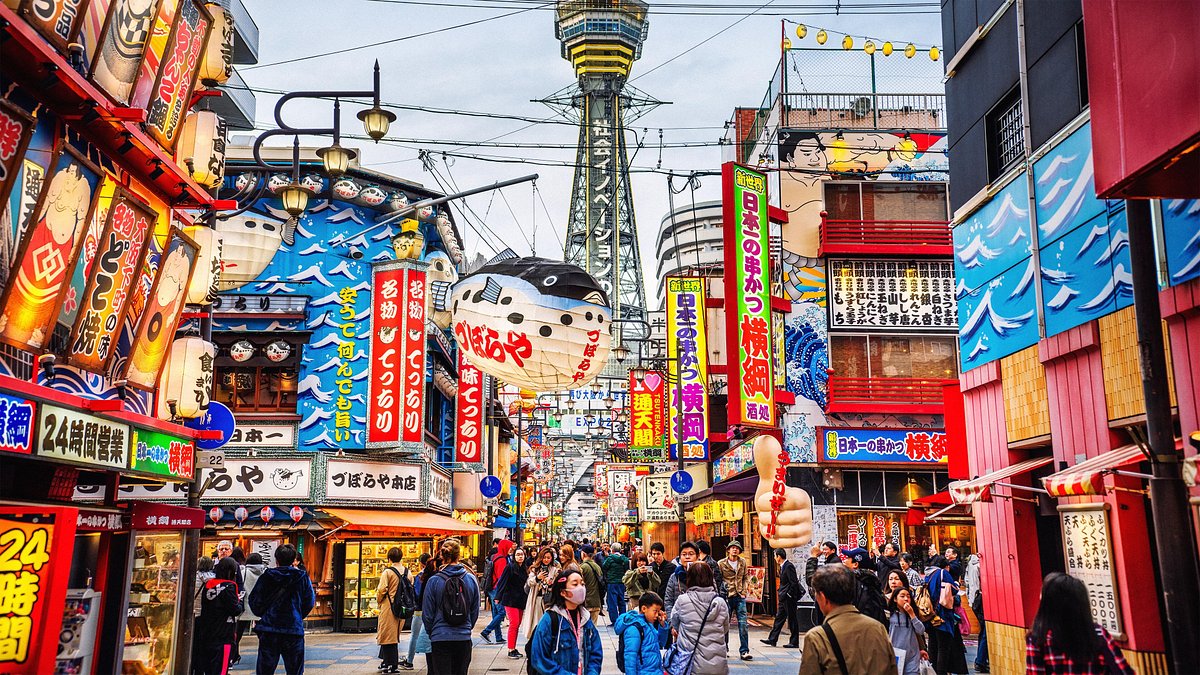
Nomadic Matt's Travel Site
Travel Better, Cheaper, Longer
The Perfect 7-Day Japan Itinerary for First-Time Visitors

Japan captured my heart from the moment I firs visited. The delicious food, the rich culture, breathtaking landscapes, vibrant history, and the very friendly and polite people – it all blew my mind.
But Japan often feels impenetrable, especially to first-time visitors. While I think Japan deserves a minimum of 10 days, I get that some people might only have a week, so I wanted to write this, my ideal seven-day itinerary for Japan for a first-time visitor.
With only a week, there’s not much you can see unless you really rush it. And I don’t think you should do that.
So this itinerary only focuses on Tokyo and Kyoto (the most popular destinations) as well as some day trips from each. If you wanted to rush things a little, you could add in Osaka (more on that at the end).
(Note: If you purchased a Japan Rail Pass , activate it on arrival. That way, you can take advantage of the free JR trains throughout the city.)
Table of Contents
Japan Itinerary Day 1: Tokyo
Japan itinerary day 2: tokyo, japan itinerary day 3: tokyo, japan itinerary day 4: kyoto, japan itinerary day 5: kyoto, japan itinerary day 6: nara, japan itinerary day 7: tokyo, an alternative itinerary.

Tsukiji and Toyosu Fish Markets Cure your jet lag with some food! In 2018, Tokyo’s main fish market moved to Toyosu. It is now twice the size of Tsukiji (the old one), making it the largest such market in the world. Here you can eat fresh sushi for breakfast, just a few feet from where it was hauled in from the sea, while marveling at the chaotic atmosphere.
You can still head to the old market in Tsukiji to eat, shop, and wander as well. I like it a lot, because there are more food options! Food and drink tours of the Tsukiji Outer Market are available for around 15,000 JPY.
Toyosu Fish Market is open Monday-Saturday 5am-5pm, though most shops don’t open until 7am. Admission is free, but you have to pick up a visitor’s pass when you enter. Tsukiji Fish Market’s hours vary by shop (usually 5am-2pm). Admission is free.
teamLab Planets This digital art installation is a multi-sensory and immersive experience in which you become part of the artwork, walking barefoot through the four exhibition spaces and gardens as you interact with the installations’ elements in unique ways. It’s really fun! TeamLab is generally sells out in advance, so I recommend getting your tickets online ahead of time .
Take a walking tour Walking tours are a great way to get the lay of the land while connecting with a local guide. I always go on one or two when I arrive somewhere. Tokyo Localized offers many free tours, including a classic overview and ones of both the famed Harajuku and Shinjuku neighborhoods. Its Imperial Palace tour would be the most convenient one after teamLab.
The Imperial Palace Formerly Edo Castle, the Imperial Palace was built in the 15th century, and some of the walls and moats from that time are still in use to this day. When the emperor moved from Kyoto to Tokyo in 1869, he took Edo for his new palace and renamed it. While you can’t go inside, it is surrounded by beautiful grounds, a moat, and a park worth wandering through. You can also see the changing-of-the-guard ceremony (though it’s relatively low-key and unassuming). Admission to the grounds is free.
Shinjuku Gyoen National Garden This park is over 144 acres and home to some 20,000 trees. Most of the original park was destroyed in World War II but was rebuilt and reopened in 1949. During spring, it is one of the best places to see cherry blossoms. My favorite area is the landscape garden, which has several ponds with bridges and islands. It’s a peaceful oasis away from the urban hustle and bustle.
Depending on how you feel relative to your jetlag, you could fit a few more activities before you end your day. Check out this post for suggestions .

- Senso-ji – This is Tokyo’s most popular and famous temple. Beautifully painted, it sits in a scenic spot near a pagoda and the lovely Kaminari Gate. There’s a huge statue of Kannon, the goddess of mercy, inside the main hall. It’s very busy during the day, so maybe check out the grounds in the evening.
- Asakusa Shrine – This nearby Shinto shrine is much more peaceful, with fewer visitors, but with people praying, meditating, or performing traditional rituals. It was built during the Edo period (1603–1868) and survived the air raids of World War II.
Afterward, head to Ueno Park . Spanning over 133 acres, Ueno Park was established in 1873 on land formerly owned by a 17th-century Buddhist temple. It gets super busy in cherry blossom season, as there are over a thousand trees here. Throughout, you’ll find various stalls and vendors selling snacks, drinks, and souvenirs. On weekends, there are usually cultural events or festivals showcasing traditional arts, music, and dance. Four of Tokyo’s main museums are here:
- Tokyo National Museum – Established in 1872 on the north end, this massive building is the oldest and largest art museum in Japan. It houses one of the world’s largest collections of art and artifacts from Asia, particularly Japan.
- Tokyo Metropolitan Art Museum – This museum showcases rotating exhibitions of contemporary and traditional Japanese art.
- National Museum of Nature and Science – This museum features a wide range of permanent and temporary exhibitions covering natural science and history.
- Tosho-gu Shrine – This beautiful 17th-century Shinto shrine has carved gold doors and other ornate carvings. It’s worth seeing up close!
Afterward, walk down to Akihabara to explore the video game parlors, arcades, and anime shops. This very buzzy area is ground zero for all things electronic, and it’s fun to play many of the games. This is where you’ll find the famous maid cafés, where servers dress up as maids and serve you food and drinks. These range from big touristy ones to holes-in-the-wall (the girls on the street are promoting the latter, which are a lot more culturally fun). They aren’t cheap, though, as you have to buy drink packages and pay a fee, but they’re kitschy and fun.
In the evening, visit Shinjuku and then drink in Golden Gai . In Shinjuku, you’ll find a plethora of cool bars, bright lights, and tiny hole-in-the-wall eateries. Be sure to wander down Memory Lane (aka Piss Alley) for tiny izakaya joints and bars. Afterward, head over to Golden Gai, a warren of narrow alleyways with a bit of a red-light-district feel, flanked by diminutive backstreet bars. It’s quite touristy but also a lot of fun. I’ve had some wild nights here!
With Arigato Tours , you’ll learn about the neighborhood while stopping to sample Japanese classics like sushi, yakitori, and ramen. The 23,900 JPY cost includes a drink and dishes at four stops.

Kamakura Here you can see a 13-meter (43-foot) bronze statue of Buddha that was built in 1252. It was initially constructed within Kotoku-in Temple, but that has since been washed away by several storms, so it now sits in the open air. Admission to enter the temple grounds is 300 JPY, while it’s 20 JPY to go inside the statue. The journey there — around an hour — is free with a Japan Rail Pass .
Tokyo Disneyland I’m a sucker for Disney. You’ll find many of the same classic rides from Disney World here, like Splash Mountain, Big Thunder Mountain, The Haunted Mansion, and everyone’s favorite teacup ride, The Mad Tea Party. But there are several unique attractions as well, like Pooh’s Hunny Hunt and Journey to the Center of the Earth.
Ticket prices vary depending on the day and time, but full-day admission begins at 7,900 JPY for adults and 4,400-6,200 JPY for children. It’s best to book in advance .
Mount Fuji Mount Fuji is located an hour outside of Tokyo. An active stratovolcano (which last erupted in 1708) and covered in snow for almost half of the year, it stands an impressive 3,776 meters (12,389 feet) and provides one of the most iconic views in the country. One of the Three Holy Mountains of Japan, Mount Fuji is both a Special Place of Scenic Beauty and a UNESCO Cultural Site. In the summer, the mountain is open to hikers, who take 5-12 hours to reach the summit (traditionally, they depart at night to arrive at the top for the sunrise).
If you don’t want to hike, you can simply visit on a day trip. There are buses that can take you partway up, where you’ll be offered sweeping vistas of the surrounding area. Guided day tours from the city cost around 12,000 JPY.

Wander the Bamboo Forest For a relaxing break, head to Arashiyama and let the dense and towering stands of bamboo envelop you. Located near the famous Tenryu-ji temple, it’s one of the most beautiful places in the entire country. It’s not that big, but there are some hidden areas to explore. Just make sure to arrive early if you want to enjoy it without the crowds (it fills up fast after sunrise).
While there, I would also recommend visiting the Okochi Sanso Garden, which (along with the home) belonged to the famous Japanese actor Denjir? ?k?chi (1898–1962). It’s not free (it’s 1,000 JPY), but it’s really nice and has some wonderful views.
Visit the Golden Pavilion Originally built in the late 14th century as a retirement villa for the shogun (military governor), this iconic structure was later converted into a Zen Buddhist temple. The present-day edifice dates only to the 1950s, however, when a monk attempting to kill himself burned the historic original to the ground. The rebuilt temple is covered in brilliant gold leaf, symbolizing purity and enlightenment. Each of the three stories exhibits a different architectural style. Completing the scene are the serene reflecting pool and traditional Japanese gardens that contain lush foliage, manicured trees, and scenic walking paths.
1 Kinkakuji-cho, Kita-ku, Kyoto-shi, Kyoto, +81 075-461-0013, shokoku-ji.jp. Open daily 9am-5pm. Admission is 500 JPY.
Admire Ryoan-ji Temple This is my favorite temple in Kyoto. Originally established in 1450 as a residence for a high-ranking samurai, it was soon converted into a Zen temple and is now a UNESCO World Heritage Site, with a mausoleum that houses the remains of seven emperors. Its traditional rock and sand garden is considered one of the best in the country. There’s also a teahouse where you can experience the traditional Japanese tea ceremony ( chanoyu ) as you overlook the Kyoyochi reflecting pool.
There are other temples in the area to check out as well:
- Daitoku-ji Temple – This massive complex dating back to 1315 covers almost 60 acres. It contains several dozen temples and is a good place to see a variety of Zen gardens and architectural styles. It’s also deeply linked to the Japanese tea ceremony, as several of the country’s most noteworthy masters studied here.
- Toji Temple – This is home to Japan’s tallest pagoda (five stories high). Founded in 796, just after Kyoto became the capital, it was one of only three Buddhist temples allowed in the city.
Go on a sake brewery tour Kyoto has a sake (rice wine) brewing tradition going back 400 years and is known for some of the best in the world, due to using the area’s pure natural spring water in the brewing process. Arigato Tours offers an excellent three-hour tour of Fushimi (the brewing district) for 23,320 JPY, including stops at several breweries, a guided tour of the Gekkeikan Okura Sake Museum, and tastings.

See the Fushimi Inari Shrine This mountainside Shinto shrine, dating back to 711, is dedicated to Inari, the god of rice and prosperity. It’s known for its thousands of vibrant orange torii gates that form a network of trails leading up Mount Inari. You can hike the trails on your own while enjoying panoramic views of Kyoto below or join a guided hiking tour , on which you’ll get off the paved paths and into hidden bamboo groves. Get here as early as possible to avoid the crowds.
68 Fukakusa Yabunouchicho, +81756417331, inari.jp. Open 24/7. Admission is free.
Walk around Higashiyama Spend an afternoon walking along the narrow streets of one of the oldest and best preserved districts on your own or on a walking tour . The traditional machiya buildings (traditional wooden townhouses) are filled with small shops selling local specialties and handicrafts, as well as restaurants and teahouses. It’s a popular area in which to participate in a tea ceremony . Another nice place to stroll in this neighborhood is the Philosopher’s Path, which follows a cherry-tree-lined canal that’s beautiful and meditative even when the blossoms aren’t in season.
Visit Kiyomizu-dera One of a number of UNESCO sites in ancient Kyoto, Kiyomizu-dera (meaning “pure water temple”) is located in the foothills of Mount Otowa in the eastern part of the city. It’s one of the most famous temples in all of Japan. It was established in 778, but most of the existing buildings date to the 17th century. There’s not a single nail used in the construction, which becomes all the more impressive once you see how large the temple is, which is best known for its wooden terrace that juts out over the hillside. The temple’s name comes from the nearby waterfall whose waters (from which you can still drink today) are said to have wish-granting and healing powers.
1 Chome-294 Kiyomizu, +81 75-551-1234, kiyomizudera.or.jp. Open daily 6am-6pm. Admission is 400 JPY.
Explore Shorin-ji Temple This small temple dates back to the 16th century. What makes it worth visiting is its meditation classes. You’ll get to tour the temple and then be instructed in zazen , the Japanese style of meditation. It’s a very unique experience and something that I think will add a lot of depth and nuance to your visit (especially if you’ve seen a lot of temples). Just make sure to dress comfortably.
15 Chome-795 Honmachi, +81 75-561-4311, shourin-ji.org. Open daily 10am-4pm. Admission is 800 JPY.
Wander the Nishiki Market Nishiki Ichiba is now one of the biggest indoor markets in town. Known as “Kyoto’s Kitchen” and spanning over five blocks, it is full of vendors selling traditional dishes from the region, classic Kyoto souvenirs, and really just about anything else. There are over a hundred stalls here, many of which have been in the same family for generations. Opening hours depend on the shop but are typically from 9am to 6pm.
To dive deeper into Japanese food culture, you can take a food tour of the market . It’s the best way to learn about all the food you’ll see, as well as the market’s history.
Explore Gion Gion, the historic geisha district, is renowned as being one of the most iconic and atmospheric areas of town. It’s known for its traditional wooden machiya houses, narrow alleyways, cobblestone streets, and preservation of geisha (known locally as geiko) culture. Lining the main street are ochayas (teahouses where geishas entertain), small shops, and many restaurants, ranging from upscale kaiseki restaurants serving traditional Kyoto cuisine to casual eateries.
To really learn more about this amazing party of town and its past, take a walking tour of Gion . You’ll learn a ton and get a lot of context. They cost around 1,800 JPY.
At night, go to the Pontocho Row , a narrow street lined with restaurants, hole-in-the-wall bars, and jazz clubs. It’s one of the more lively areas in Kyoto.

Nara was the capital of Japan in the eighth century, so there are lots of buildings and temples here that are upwards of a thousand years old (which is rare in Japan, due to the prevalence of fires and earthquakes, as well as World War II). Some things to do:
- Frolic with deer – The real draw in Nara are the deer. Since the 17th century, those in and around the city have been considered sacred. You can buy crackers to feed them or just watch them stroll around carefree.
- See the Buddha – Don’t miss a visit to Todai-ji, the world’s largest wooden building, home to a 16-meter (52-foot) Buddha statue. It was built in 738 and is now a UNESCO World Heritage Site.
- Take a walking tour – This guided half-day walking tour for 11,500 JPY includes all of Nara’s highlights as well as a traditional lunch.

Ryogoku Kokugikan, Japan’s most famous sumo wrestling arena, hosts tournaments three times each year, in January, May, and September. Tickets sell out quickly, so book online in advance. Prices vary but start around 3,200 JPY for arena seats. You can book a ticket online here (you’ll be accompanied by a guide too, so you can learn more about the tradition as it unfolds before your eyes).
To learn more about the sport in in the off-season, book a tour of a sumo stable .

So, if you want to add another city to this itinerary you can follow this breakdown:
- Days 1 & 2: Tokyo
- Days 3 & 4: Kyoto
- Day 5: Nara
- Days 6 & 7: Osaka
Tokyo, Kyoto, and Nara are all covered above. As for Osaka, some of my favorite things to see and do:
Take a food tour Known as “the Kitchen of Japan,” Osaka boasts a diverse culinary scene. Mouthwatering sushi and sashimi, Kobe beef and Japanese BBQ, and flavorful ramen can all be found here in abundance. Plus, there are local specialties like okonomiyaki (a savory pancake with egg and vegetables) and kushikatsu (kebab skewers). You can take a food tour for around 13,000 JPY, a ramen and gyoza cooking class for 9,500 JPY, or just wander and eat.
Osaka Castle One of the most famous landmarks in the country, the castle was originally built in the late 16th century by Toyotomi Hideyoshi and played a pivotal role in the unification of Japan during the Sengoku period (1467-1615). Over the centuries, it has been destroyed and rebuilt multiple times due to wars, fires, and natural disasters. The current version dates to 1931. The castle is situated amid sprawling grounds and surrounded by a moat. It’s also home to a small but insightful museum and an observation deck that offers some picturesque urban views.
Dotonbori This is arguably Osaka’s most iconic district, known for its vibrant nightlife (bars, clubs, theaters, and music venues), colorful signage, and delicious food. It’s best seen at night due to the plethora of huge neon lights and signs lining both the canal and streets, which have become symbols of Osaka’s nightlife. A guided walking tour that includes Dotonbori as well adjacent neighborhoods is 6,500 JPY.
Shitennoji Temple This temple is one of the oldest Buddhist temples in Japan, founded in 593. The architecture is a blend of traditional Japanese and East Asian styles, featuring impressive pagodas, gates, and shrines set amid serene gardens. Stroll through the tranquil grounds, admire the beautiful architecture, and learn about the temple’s historical and cultural significance at the museum. The temple is 300 JPY to enter, the garden is 300 JPY, and the museum is 500 JPY.
Japan is one of my favorite countries. While it’s relatively small, it offers an amazing array of things to see and do (as well as some of the best food in the world). With seven days, you can easily see a good number of the main highlights and get a taste for the incredible history and culture. It will be a busy week, but this itinerary ensures you’ll still have some time to slow down, relax, and take in the local pace of life.
Just make sure you get a Japan Rail Pass before you go. While it’s not as cheap as it used to be, it will likely save you time and money!
Book Your Trip to Japan: Logistical Tips and Tricks
Book Your Flight Find a cheap flight by using Skyscanner . They are my two favorite search engines, because they search websites and airlines around the globe, so you always know no stone is being left unturned!
Book Your Accommodation You can book your hostel with Hostelworld as they have the most comprehensive inventory so they are best for booking a hostel. If you want to stay in a hotel or guesthouse in Japan, use Booking.com as it consistently returns the cheapest rates for guesthouses and hotels.
Don’t Forget Travel Insurance Travel insurance will protect you against illness, injury, theft, and cancelations. It’s comprehensive protection in case anything goes wrong. I never go on a trip without it, as I’ve had to use it many times in the past. My favorite companies that offer the best service and value are:
- Safety Wing (best for everyone)
- Insure My Trip (for those over 70)
- Medjet (for additional evacuation coverage)
Looking for the Best Companies to Save Money With? Check out my resource page for the best companies to use when you travel! I list all the ones I use to save money when I travel — and I think they will help you too!
Be sure to check out the Japan Rail Pass if you’ll be traveling around the country. It comes in 7-, 14-, and 21-day passes and can save you a ton of money!
Looking for More Travel Tips for Japan? Check out my in-depth Japan travel guide for more ways to save money, information on costs, tips on what to see and do, suggested itineraries and reading and packing lists, and much, much more!
Got a comment on this article? Join the conversation on Facebook , Instagram , or Twitter and share your thoughts!
Disclosure: Please note that some of the links above may be affiliate links, and at no additional cost to you, I earn a commission if you make a purchase. I recommend only products and companies I use and the income goes to keeping the site community supported and ad free.
Related Posts

Get my best stuff sent straight to you!
Pin it on pinterest.
10 Best Festivals in Japan in May 2024
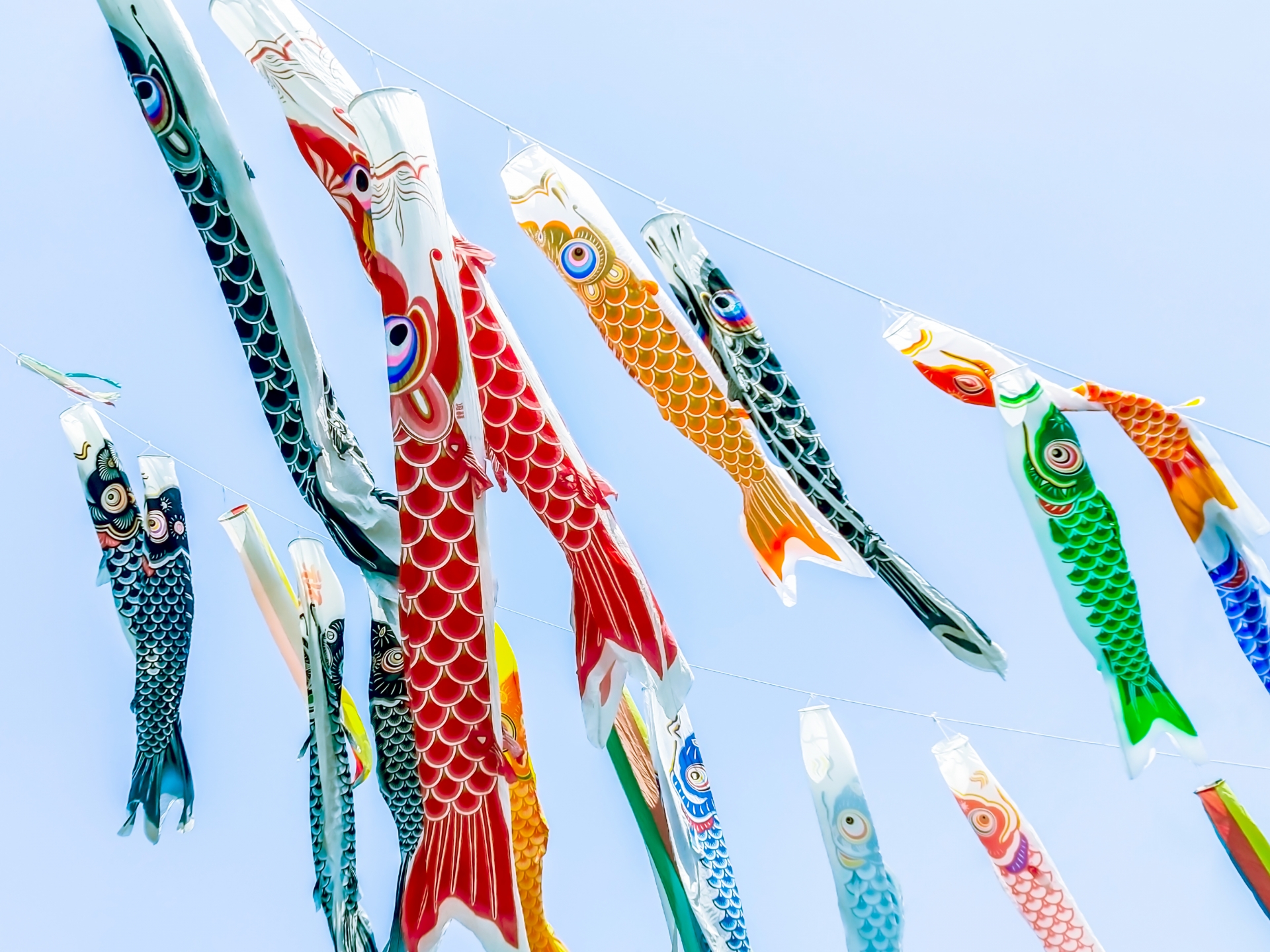
Misty Fujii is a Canadian who moved to Osaka, Japan, in 2019 and married her Japanese sweetheart. In 2022, they had a baby and moved to Fukui for the clean country air. She is a DJ who teaches English part-time and writes to share Japan with the world. She gets excited about collecting vintage vinyl records, food from all countries, travelling, and renovating her traditional Japanese house.
This post may contain some affiliate links. When you click through and make a purchase we may receive some commission, at no extra cost to you.
Golden Week kicks off in May, making Japan a busy and bustling place. Golden Week is a national holiday when many Japanese people go on vacation. The weather is also perfect; not too hot or too cold with gorgeous, sunny days. It only makes sense that there would also be festivals happening, so let’s look at some of the best ones this month.
1. Koinobori Festivals
2. aoi matsuri, 3. kanda matsuri, 4. naha hari festival, 5. sanja matsuri, 6. hakata dontaku, 7. hirosaki cherry blossom festival, 8. spring fujiwara festival, 9. mikuni festival, 10. hamamatsu festival, japan wonder travel tours , other articles you might be interested in.
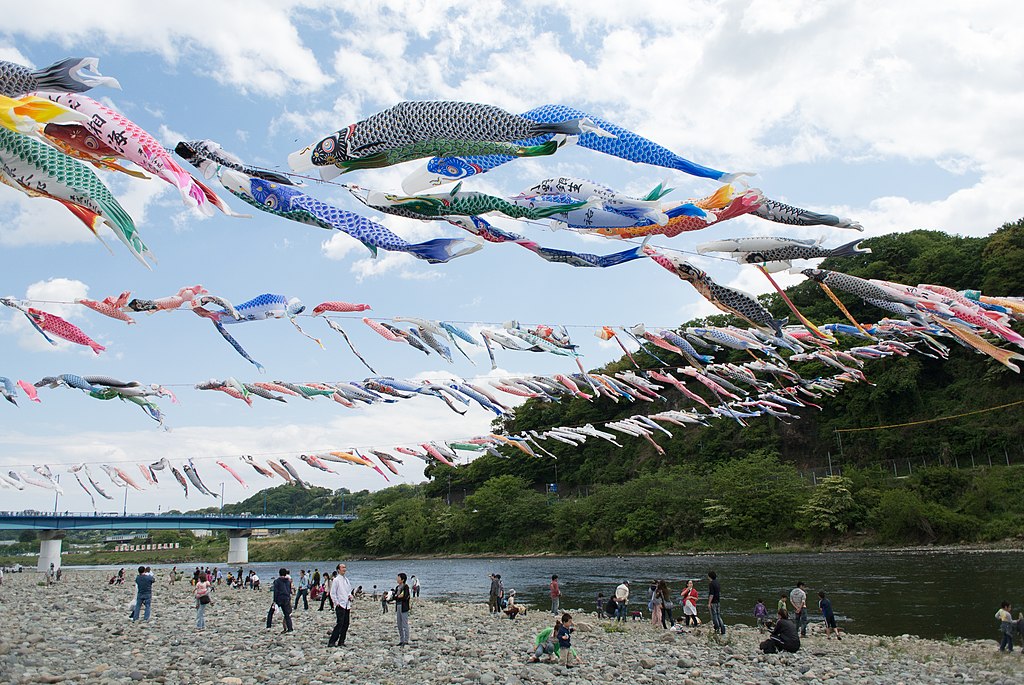
The month begins with children’s day , celebrating boys across Japan. Like Hinamatsuri (Girl’s Day), which happens in March, Koinobori is when parents pray for their sons’ strength and good health. The name ‘Koinobori’ comes from the colorful streamers of fish hanging outside homes representing the fish and the children’s resilience. There are also festival events held all over the country to celebrate. Some include Kawakami Gorge in Kyushu , where 600 koi streamers hang over the river, and Tokyo Tower , which hangs 333 streamers representing each meter of the tower. It’s well worth finding a spot showing off their streamers, as it is quite a sight to behold.
When: May 5

This is one of Kyoto ‘s most important festivals and oldest, dating back over 1400 years. An annual celebration of Shimogamo Shrine and Kamigamo Shrine, the ceremony prays for a good harvest and safety during bad weather. It is also known as the “Hollyhock Festival,” named after the leaves believed to protect against natural disasters like earthquakes and thunder. Events occur throughout the month, with the most important event on May 15. This is when the royal parade marches through the city with people wearing noble outfits from the Heian period . If you want to feel like royalty yourself, you can book a paid seat beside the Kyoto Imperial Palace for a guaranteed great view.
When : May 15, 2024
Website: Aoi Matsuri

One of the three great Shinto festivals in Tokyo , this event is so significant that it only happens in odd-numbered years. Starting during the Edo period , it was to celebrate the new regime and the country’s prosperity with it. Based out of the Kanda Myojin Shrine, the three deities inside represent things like good harvest, business, and the wealth and good fortune of the Japanese people. It takes place in the middle of Tokyo and has events spanning a whole week, with the main parades happening on the weekend closest to May 15. That’s when a day-long procession makes its way through central Tokyo on Saturday, and portable shrines weave their way through smaller neighborhoods on Sunday. The weekday events consist of performances, tea offerings to the gods, and praying for prosperity and peace in Japan.
When : Next will be in May 2025
Website: Kanda Matsuri Festival
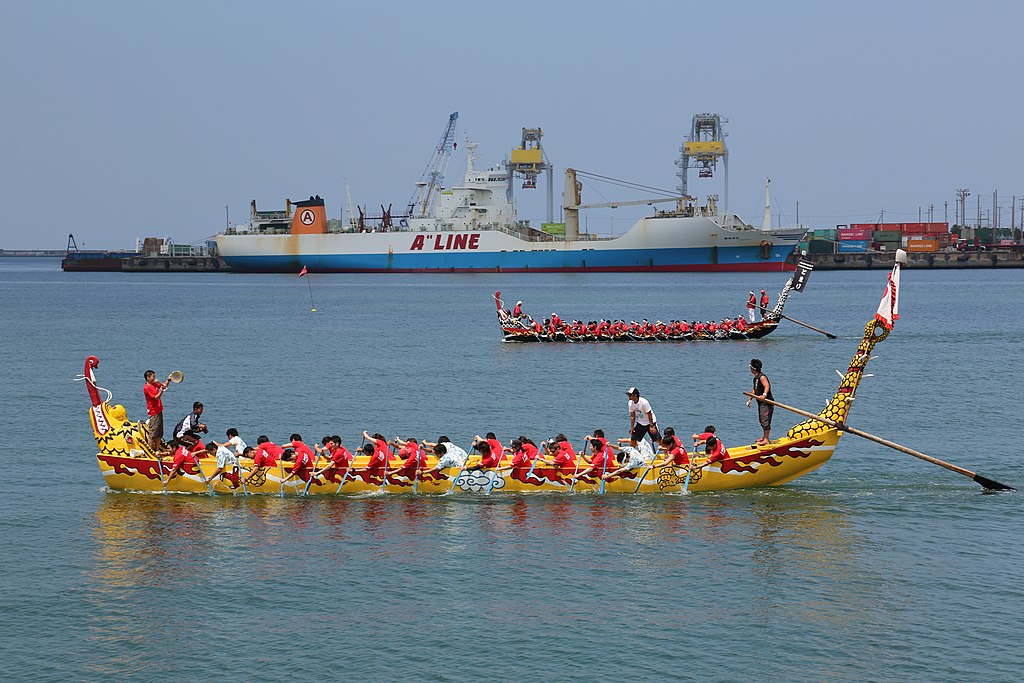
Also known as The Naha Dragon Boat Race, this Okinawan festival is full of excitement! Pray for rich fishing and safety at sea while cheering for boats of different sizes and colors as they battle on the water for first place. The boats, decorated with traditional Japanese creatures and their teams, represent local schools and companies. You can even challenge yourself to ride on a boat! Since this lively festival gets around 180,000 visitors, you can also expect plenty of entertainment and good food on Japan’s southern island.
When : May 3-5, 2024
Website: Naha Hari

There are the three great Shinto festivals, one of which is the Kanda Matsuri, but then there is the Sanja Matsuri – one of Tokyo’s three LARGEST Shinto festivals. And of those three, this is the largest and by far wildest. Held in Asakusa , the festival honors the three men who established the Sensō-ji Buddhist temple . You can expect to see portable shrines covered in gold leaf that cost 40 million yen each. Naturally, this draws a considerable crowd, attracting up to 2 million tourists and locals annually. Other events include taiko drumming and Geisha performances, including one of Japan’s best Geisha shows.
When : May 16-18, 2024
Website: Sanja
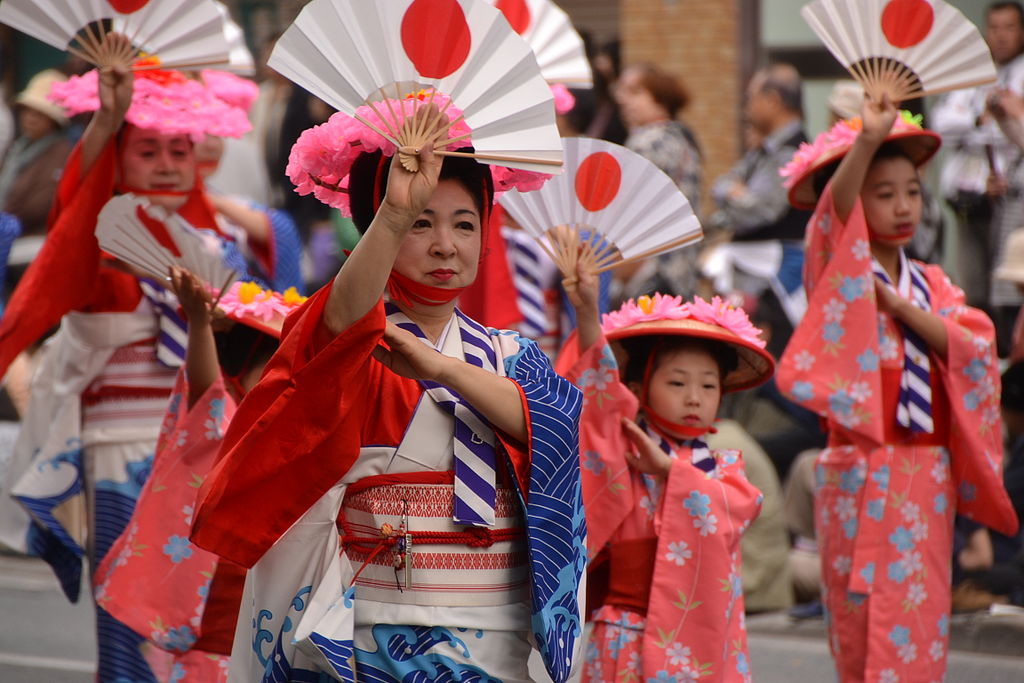
Another Golden Week festival happens in Fukuoka , with over 30,000 performers at this enormous event. Initially, people dressed as the three gods of good fortune and paraded to music, and now the festival has become one of the largest in Japan. You can expect a parade, performances across 30 different stages, and even the crowning of Miss Fukuoka. You don’t want to miss the brilliantly dressed dancers or decorated floats as they make their way down Meiji-dori street, renamed “Dontaku Street.” The festival closes by inviting spectators to take part in the Dontaku dance and with a spectacular fireworks show.
When : May 3-4, 2024
Website: Hakata Dontaku

While cherry blossoms peak through most of Japan in March and April, never fear if you happen to be in Japan in May. Witness 2600 cherry trees in bloom at Hirosaki Park in Aomori Prefecture during this festival that is well worth waiting for. The trees surrounding the castle are breathtaking, especially at night when they are all illuminated. One of the park’s highlights is seeing the oldest living Somei Yoshino cherry blossom tree, first planted in 1882. You can even take a dreamy boat tour admiring the blossoms or rent a rowboat to sightsee yourself.
When : April 12-May 5, 2024
Website: Hirosaki Cherry Blossom Festival
Head to the World Heritage town of Hiraizumi in Iwate Prefecture and celebrate the Fujiwara lords responsible for bringing prosperity there. You’ll see traditional folk entertainment, the famous children’s parade, and unique events like the Benkei strongman contests. The festival’s climax happens on the third day with Minamoto no Yoshitsune’s Eastern Flight Processional. Watch an exciting reenactment of Fujiwara no Hidehira welcoming the arrival of Yoshitsune in Hiraizumi following an escape from his brother. A famous performer plays the part of Yoshitsune, adding to the buzz from the attendees who pack the parade route.
When : May 1-5, 2024
Website: Fujiwara Festival
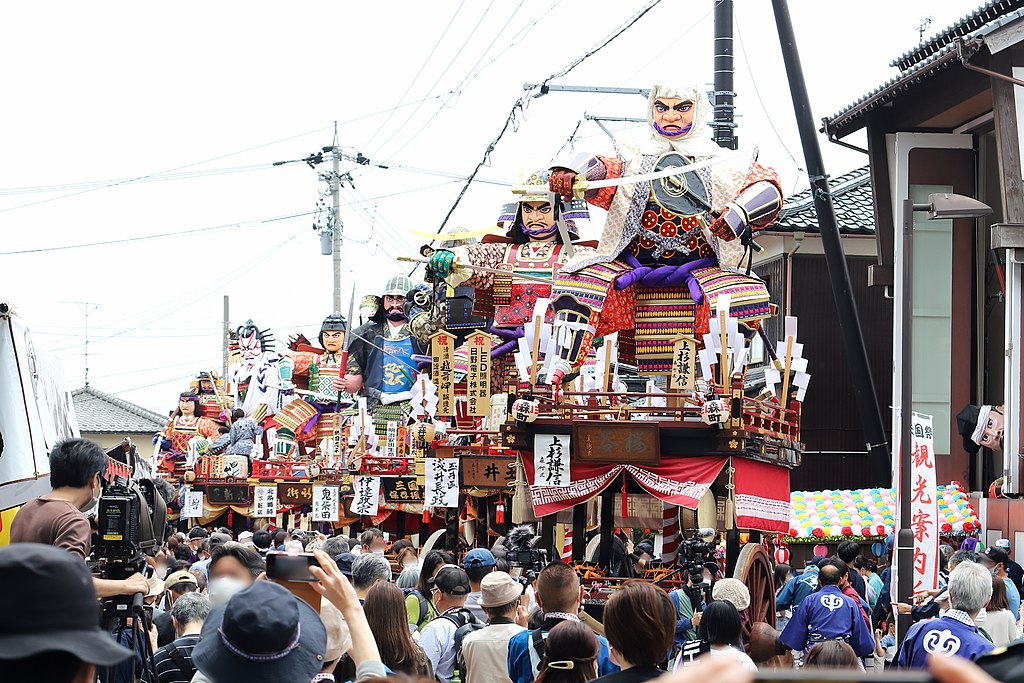
The coastal town of Mikuni in Fukui was once one of the most important ports in Japan, and every year this is celebrated with a cheerful festival that is full of fun. The highlight is a parade featuring giant warrior floats and portable shrines that weave their way through the narrow streets. In the evening, onlookers are excited to see volunteers spinning the giant floats in circles outside of Mikuni Station, each one a display of neighborhood pride for the area. The festival is also a fabulous opportunity to eat delicious street food like yakisoba and takoyaki while enjoying music and the high spirits of this historic port town in the present day.
When: May 19-20, 2024
Website: Mikuni Festival
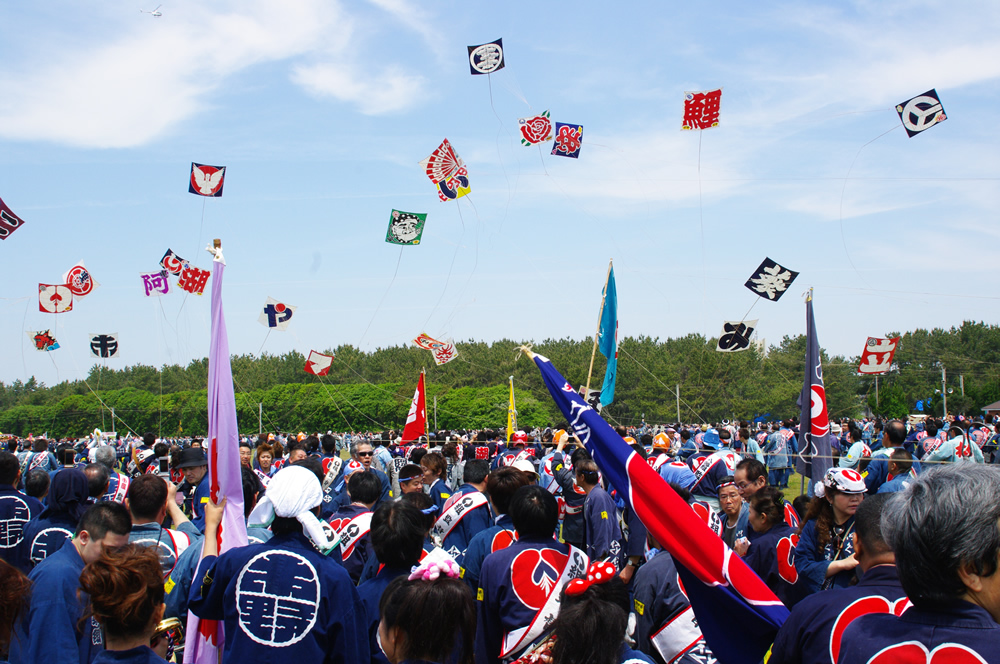
Is it a bird? Is it a plane? No, It’s a kite! During this exciting festival, watch dozens of kites battle it out overhead at the Hamamatsu Kite Festival in Shizuoka Prefecture . First celebrating Yoshihiro, the first son of the Prince of Hikuma Castle, it used to be called “Boy’s Festival” when people flew kites with the family coat of arms and baby’s name. The festival now celebrates all children, with several hundred people flying their kites high and a parade with floats, geisha, and music. It’s a colorful and fantastic way to learn about Hamamatsu’s history and traditions.
When: May 3-5, 2024
Website: Hamamatsu Festival
Thanks to the excellent weather and the Golden Week holiday, May is a splendid month, with so much going on. You can be part of so many rich cultural traditions and have a great time in your Japan travels. Where will you be headed?
Japan Wonder Travel is a travel agency that offers guided tours throughout Japan. From private walking tours to delicious Food and Drink tours, we can help you organize the best tours just for you! If you want to explore Japan and learn more about the history and backstories of each area you are visiting, our knowledgeable and friendly English speaking guides will happily take you to the best spots! In addition, we can provide you with any assistance you may need for your upcoming trip to Japan, so please feel free to contact us if you have any questions or need some help!
▶ Tokyo Tsukiji Fish Market Food and Drink Tour Explore the most lively and popular fish market in Tokyo and try some of the local’s favorite street foods and sake with one of our friendly and knowledgeable English speaking guides!

▶ Tokyo 1–Day Highlights Private Walking Tour (8 Hours) There’s no better way to explore an area than taking a tour with a knowledgeable local guide. You will have the chance to learn about the history and interesting background stories of Tokyo, as well as discover some hidden gems which can be hard to do without a guide.

▶ Mt. Fuji Day Trip Bus Tour from Tokyo Experience the breathtaking views of Mt. Fuji by visiting the highlights of the area on our guided sightseeing bus tour! Departing from Shinjuku in central Tokyo, you can travel comfortably to all of the best spots in the area by bus.

▶ Kyoto Private Full Day Walking Tour On this full-day private tour of Kyoto, you will be able to see the highlights of Kyoto in just one day and at the same time develop a deeper understanding of both the culture of the area and Japan as a whole.

Follow us on Instagram , Facebook , Twitter , and TikTok for more travel inspiration. Or tag us to get featured!
Happy traveling!
Stay informed of the best travel tips to Japan, the most exciting things to do and see, and the top experiences to have with the Japan Wonder Travel Newsletter. Once every two weeks we will introduce you to our latest content.

- Popular destinations
- Hidden places in Japan
- Tours and workshop
- Food and drink in Japan
- Itinerary in Japan
- Places to visit in Tokyo
- Food and drink in Tokyo
- Seasonal events
- Tours & workshops
- Tokyo This Week
- Day trip from Tokyo
- Itinerary in Tokyo
- Places to visit in Kyoto
- Food and drink in Kyoto
- Itinerary in Kyoto
- Day trip from Kyoto
- Travel tips
- Accommodation
- Cultural tips
- Transportation
- Tokyo Tours
- Kyoto Tours
- Kimono Rental
- Fukushima Tours
- Mount Fuji Tours
- Tour Package
- Media Kit(English/日本語)
- Skip to main content
- Skip to primary sidebar

Destinations
- Plan Your Trip

The Low-Key Best Month to Visit Japan
March 8, 2023 by Robert Schrader Leave a Comment
Like many frequent visitors to Japan, I sing the praises of country’s cherry blossom and autumn color seasons. And rightly so: Japanese cityscapes simply look their most beautiful under colorful billows of flowers and leaves.
Visiting Japan at these times of year isn’t without its problems, of course. First among them? The sheer number of other tourists who come to enjoy seasonal spectacles, which can often be downright overwhelming, especially in top tourist destinations.
While you won’t see any sakura if you visit Japan in May, you’ll also have the country much more to yourself. (This is to say nothing of the warmer weather you’ll enjoy—and the fact that you might nonetheless see some seasonal flowers !).
Why May Gets Overlooked by Foreign Visitors to Japan
If you’ve never thought of spending May in Japan, you’re not alone. The vast majority of foreign visitors come to Japan during two windows: Between late March and mid-April for sakura , and during the peak autumn color season , which lasts between mid-November and early December. Another sizable peak comes between about mid-December and mid-February, aka Japan’s ski season.
It’s not just omission that explains why foreign tourists overlook May as a month for visiting Japan. Some believe that the Golden Week holiday (which only lasts until a few days into the month) makes the whole country unbearable to visit for all 31 days of May. Others wrongly assume that May will be too hot or too wet, or that “just missing” the cherry blossoms would make their trip sad.
My Favorite Reasons to Visit Japan in May
The “new” green of spring.

I don’t remember where I was when I first noticed how green Japan’s greens are in May—maybe at Adachi Art Museum ? In any case, this is one of my favorite reasons to visit Japan during this month. Whether you’re looking at a traditional garden or a bamboo forest on a hillside, the hues of chartreuse, jade and emerald will enchant you.
Warm days, mild nights
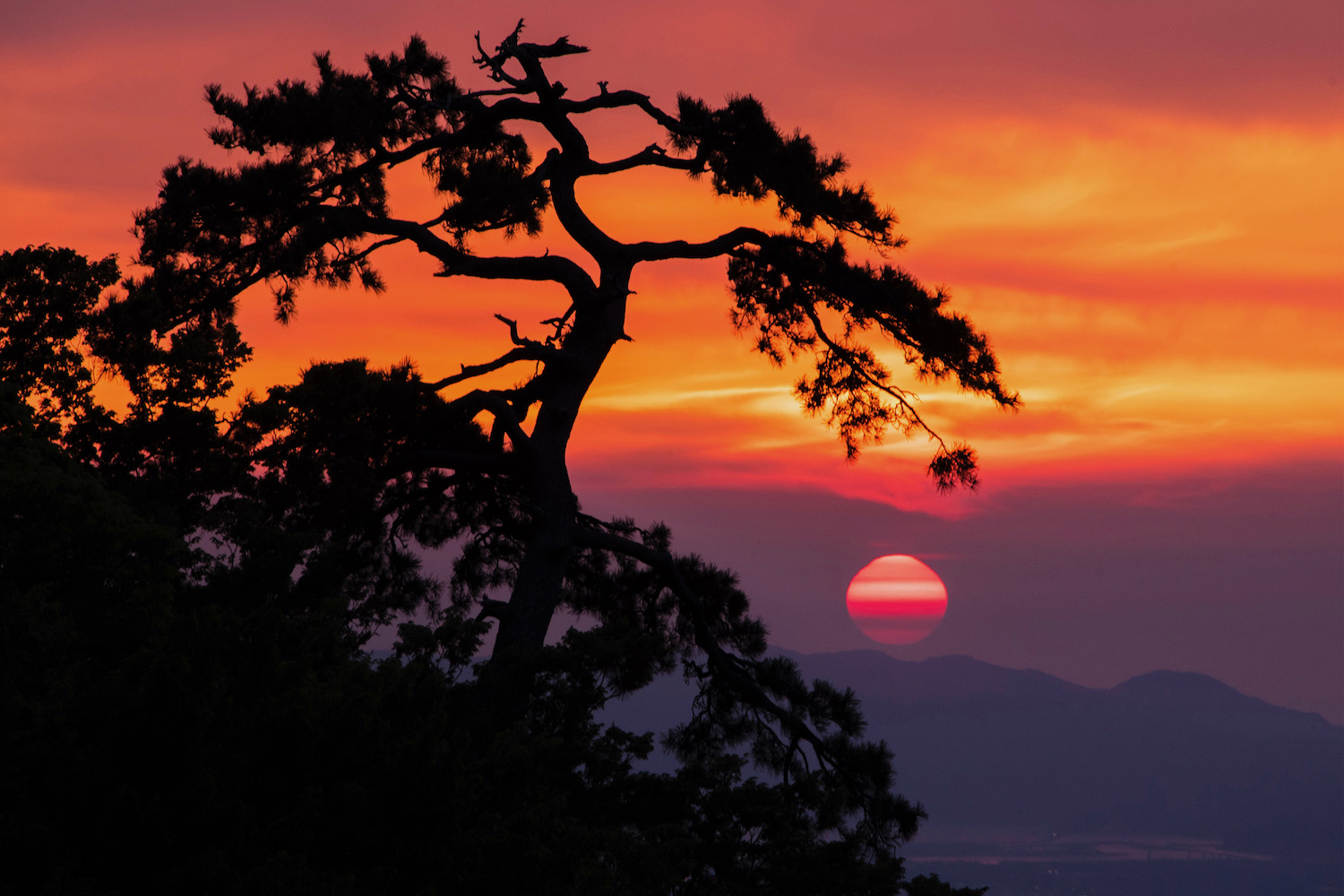
Another reason I love Japan May travel? Temperatures in most of the country are just perfect. The winter chill is completely gone from the air, with an average temperature of 19ºC/66ºF in Tokyo. While things can get a little steamier in Kyushu and Shikoku , and be cooler in Hokkaido and northern Tohoku, the general trend is the same.
Calm before the storm (literally)

Japan’s summer tsuyu (literally “plum rain”) monsoon can be miserable, but the good news is that it typically doesn’t start until late May, or even early June. If you plan to visit Japan during the first half of May, or maybe even the first three weeks, you should avoid wet weather in most parts of the country.

Lack of sakura pressure
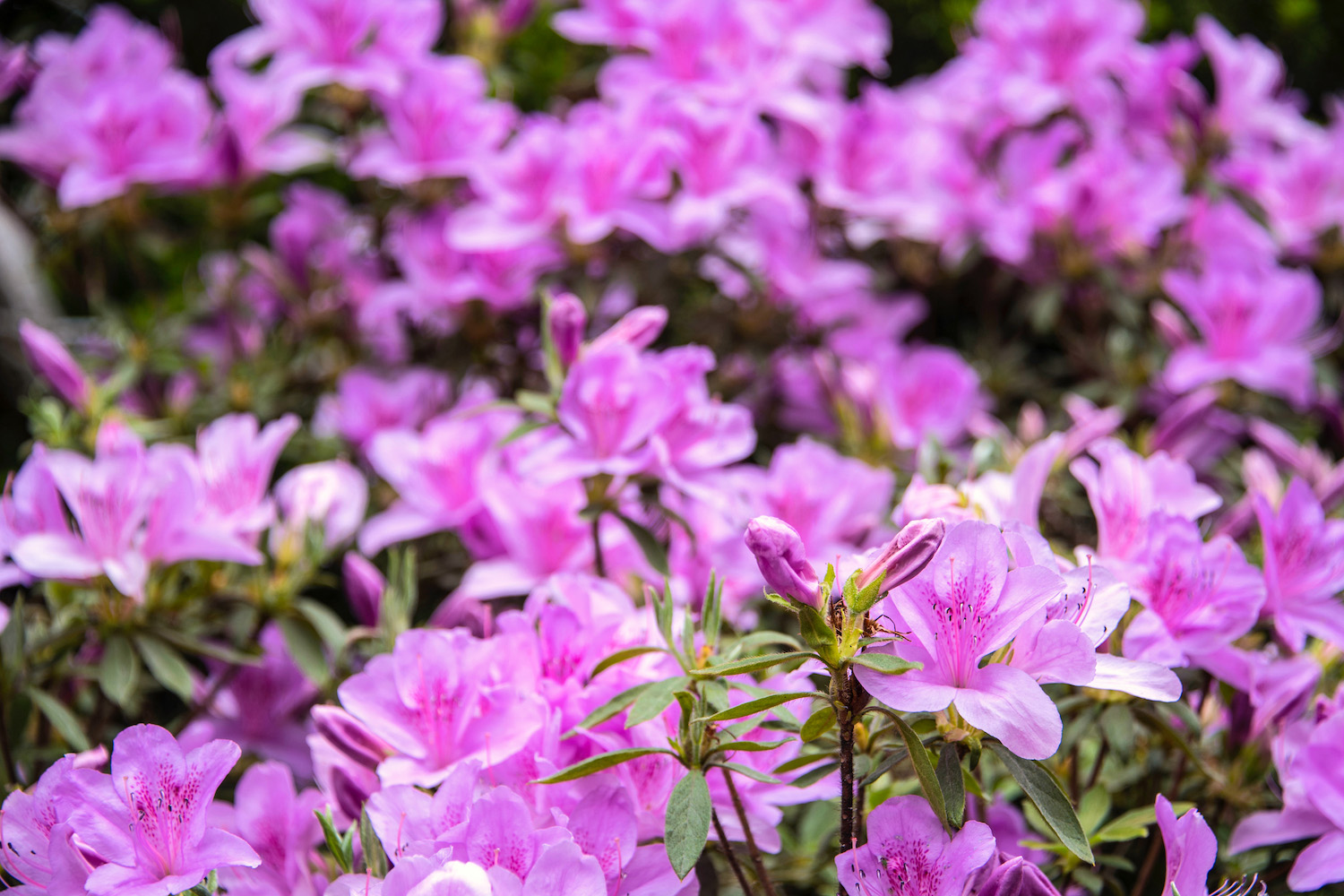
Unless your Japan May trip takes you to Hokkaido , you probably aren’t going to see any cherry blossoms. There is a silver lining to this, however. Namely, that seeing sakura (let alone at perfectly full bloom) is difficult and stressful! Not having to worry about a phenomenon you can’t predict or control allows you to enjoy destinations more purely. Plus, you might see some azaleas or hydrangeas!
(Mostly) light crowds
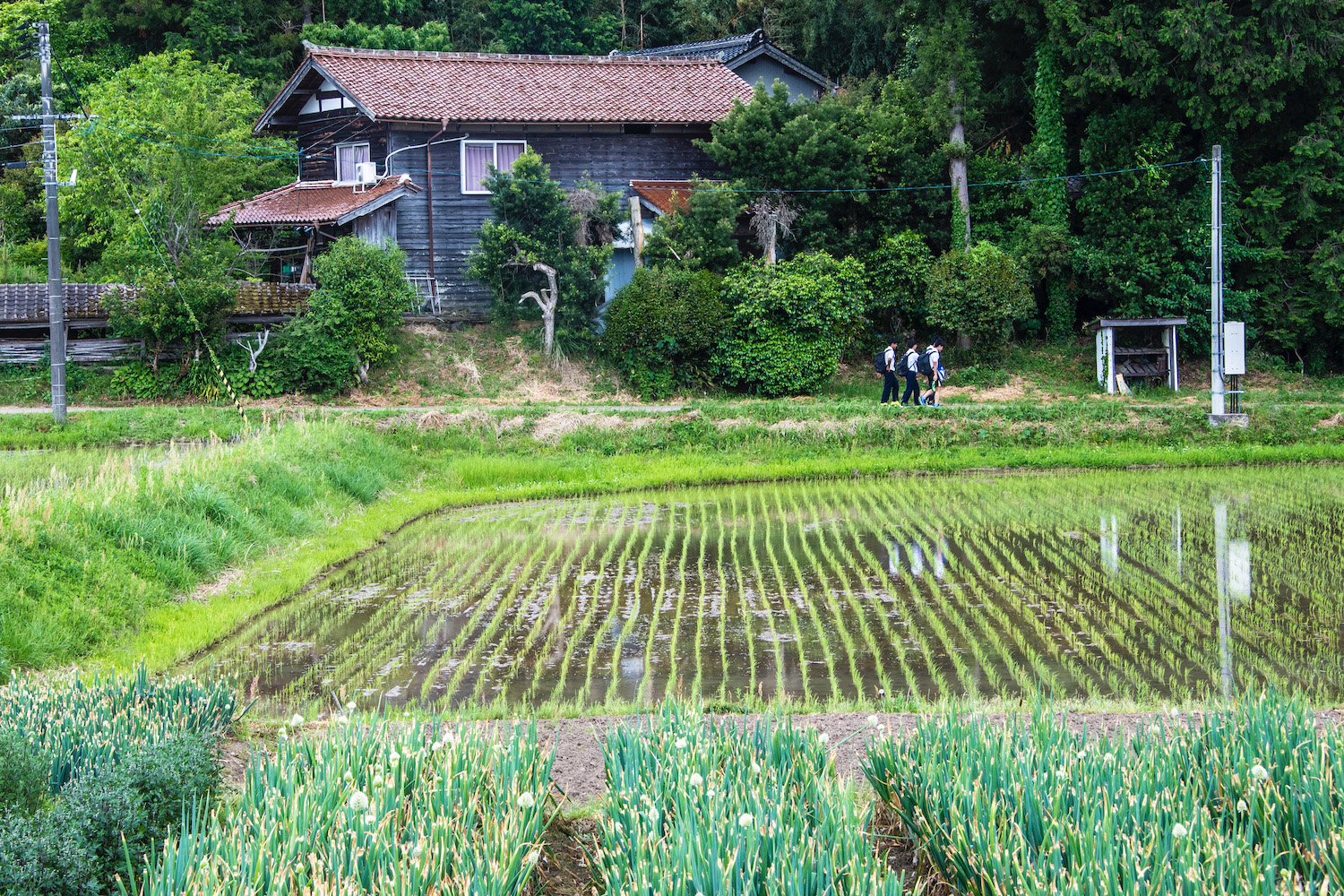
The first few days of May are technically part of Japan’s busy domestic “Golden Week” holiday, which means that many destinations (with the possible exception of Tokyo ) can be quite busy. However, this is definitely not the case for much of the rest of the month, which is significantly less busy than April or November.
Where Should You Go in Japan in May?
Almost everywhere in Japan is amazing to visit in May, but there are a few places I find are especially great durign this month:
- San’in : Visiting this off-the-beaten-path region during an off-peak time is a one-two punch that practically sees you with it all to yourself.
- Hokkaido : In some years, you can catch cherry blossoms in Hokkaido during the first few days of May; in all years, pleasant days and cool evenings make it a wonderful place to explore.
- Okinawa: Want to get some beach time before typhoon season? May is your last chance on Okinawa’s main island and in Ishigaki .
- Japan’s tourist trail: From Tokyo, to Kyoto and Osaka, to Hiroshima and even the Fuji Five Lakes, popular destinations are decked in spring green (but relatively uncrowded) in May.
Other FAQ About Visiting Japan in May
Is japan crowded in may.
With the exception of Golden Week (which only lasts for the first few days of the month), May is not at all a crowded month to visit Japan. In fact, May is a decidedly un-crowded month in most parts of Japan, in spite of featuring some of the year’s best weather.
What is Japan like in May?
May is one of the most beautiful months in Japan. While the sakura have long since fallen off, the “new” green that covers most trees is absolutely electric—somewhere between chartreuse and emerald. Plus, with the exception of Golden Week early in the month, May is a pretty call and un-crowded time to visit Japan.
Is it good to visit Tokyo in May?
Tokyo is at its best in May. During the early days of the month (aka Golden Week), when much of the rest of Japan is inundated with domestic travelers, Tokyo is relatively quiet. For the rest of May, warm days and mild nights mean that Tokyo is pleasant to explore, even if rain showers become more common as June approaches.
The Bottom Line
There are almost no downsides to visiting Japan in May, apart from the fact that the trees are green and there aren’t any flowers on most of them. I absolutely love exploring Japan during this warm and pleasant month, regardless of which regions of the country I happen to be focusing on. While late May can sometimes be rainy and early May can sometimes be busy due to Golden Week crowds, it’s still one of the most underrated times to visit Japan overall, even if you discount the beauty of azaleas, wisteria and hydrangeas. Want to make sure your May trip to Japan is one for the record books? Consider hiring me to plan it.
Plan Your Japan Trip

Subscribe to email updates!
Words, images and design ©2018-2024 Robert Schrader, All rights reserved. Read Privacy Policy or view sitemap .
8 days, 7 nights
The following is a suggested itinerary for first time travelers to Japan who spend 8 days and 7 nights in Japan, and arrive/depart from Tokyo 's Narita Airport .
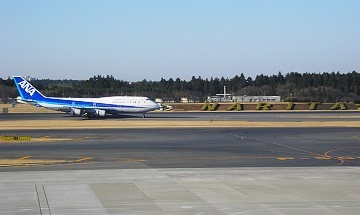
Day 1 - Arrive at Narita Airport
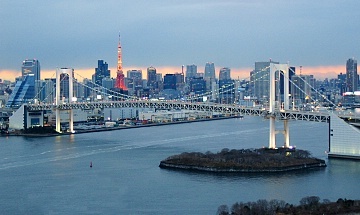
Day 2 - Tokyo with sidetrips
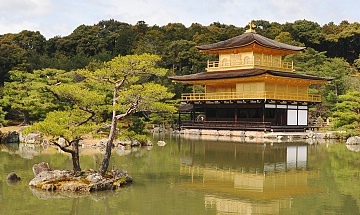
Day 3 - Tokyo to Kyoto
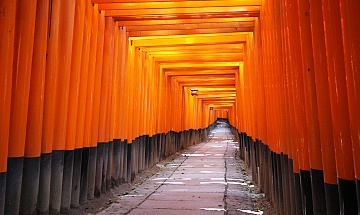
Day 4-6 - Kyoto with sidetrip
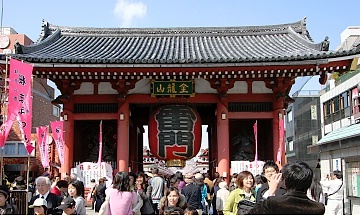
Day 7 - Kyoto to Tokyo
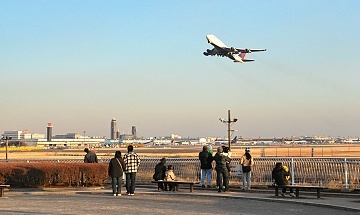
Day 8 - Depart from Narita Airport
Regular train tickets will be considerably cheaper than a Japan Rail Pass for this itinerary. Below are some sample budgets for the itinerary, excluding airfare. Find out more about the sample budgets and about the current yen exchange rates .
Questions? Ask in our forum .


8 Days in Japan Itinerary : Ultimate Guide For First-Timers
Table of content
Japan is a fascinating country with a rich cultural heritage. From the Zen of the shrines to the jumbo advertising boards and incredible cuisine, Japan is full of surprise.
To be honest, Japan was not at the top of my travel bucket list at first, but my mother’s desire to visit influenced my decision and finally we bought the flight tickets and then we were off to the land of the rising sun!
And after we spent 8 days in Japan, I fell in love with the country, and it is now in my top three countries to visit again.
It was our first time to visit Japan and we wanted to see the two cities in Japan: Tokyo and Osaka so we planned the trip to both of the cities in 8 days. Two big cities in eight days may seem a bit rushed, but we still have time to explore some neighbourhoods outside of the top sights. So I believe this itinerary is suitable for first timers to visit Japan.
In this 8-day Japan itinerary that covers Osaka, Kyoto, Tokyo, Nara and Hakone, I will share from my own experiences and added some recommendations too.
Japan Itinerary : Day 1
Most people will start the trip in Tokyo and travel to Osaka afterwards. However, when we checked the flight tickets, the flight to Osaka International Airport was cheaper than that to arrive in Tokyo Airport so we booked an early flight to Osaka Kansai Airport (KIX) and arrived in the afternoon.
Our Airbnb is sitted in the heart of Osaka – Dotonbori! Dotonbori is not only one of the districts in Osaka, it is also a popular food destination and entertainment area in Osaka.
When we arrived, we immediately got captivated by the vibe and energy from the street. There are many Japanese restaurants on the street and you can get some of the Japanese street food here such as Takoyaki and Okonomiyaki.
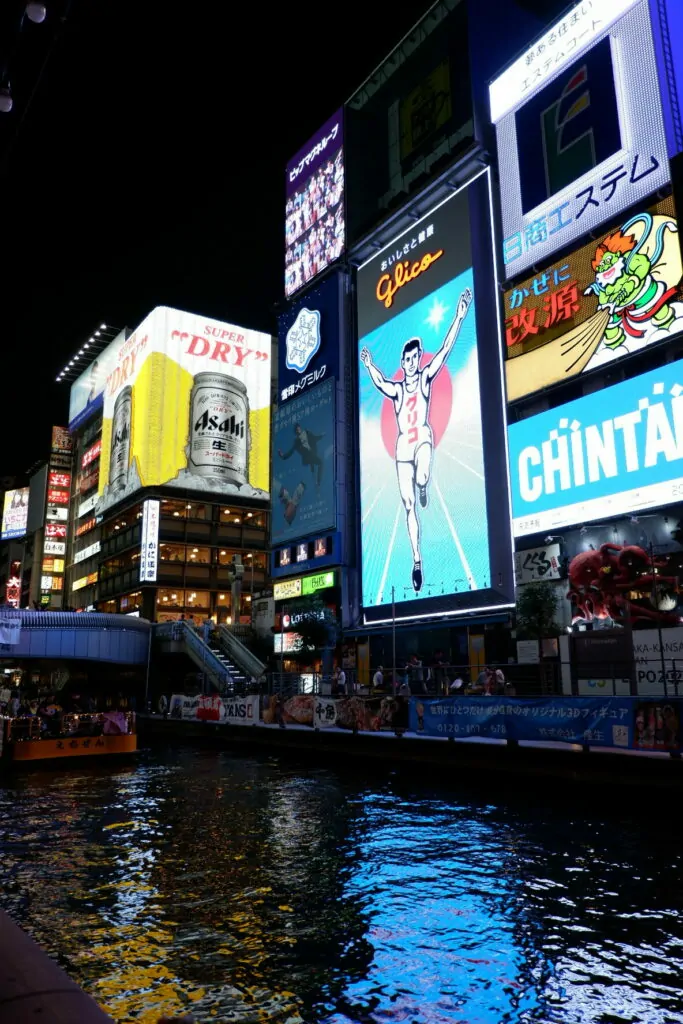
Hundreds of neon lights and mechanical signs, including the well-known Glico Running Man sign and Kani Doraku crab sign, illuminate it at night. Getting a photo shoot with the iconic Glico Running Man is also a must-do thing when in Osaka.
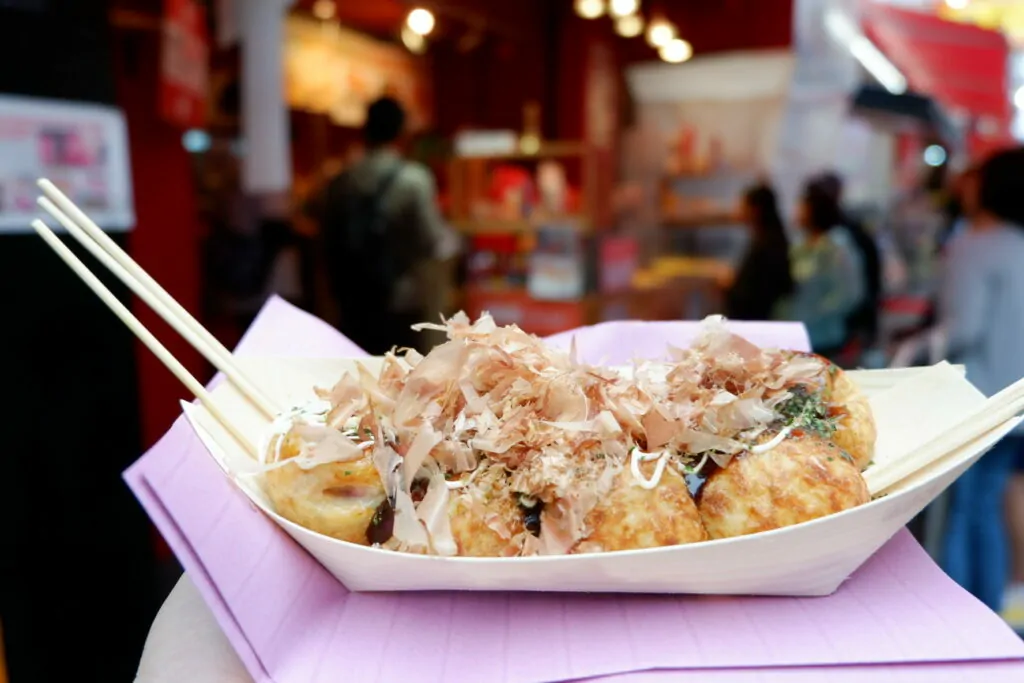
Umeda Sky Building
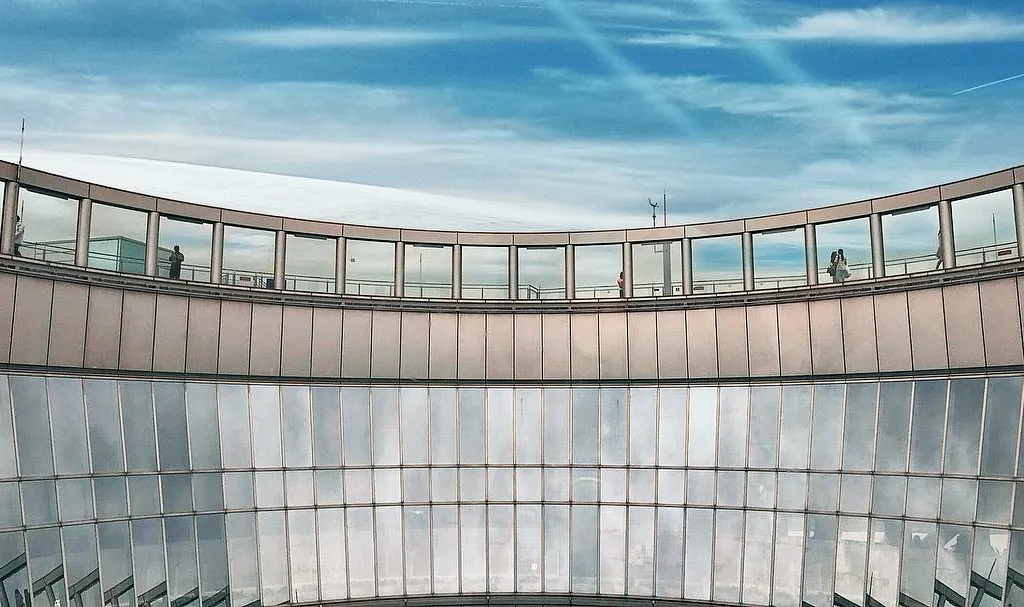
The highly distinctive and gleaming Umeda Sky Building is a glass and steel high-rise building that dominates an open space. The Sky Building caught my eyes because of the Floating Garden Observatory. It is named Floating Garden, however there is no garden or tree on the high level deck. The sky building features 360 degree panoramic views that can be enjoyed from the open deck at 39th floor.
To get up to the deck, you will need to buy a ticket . Our entrances were included in our Osaka Amazing Pass which is really worth it. We can show the pass and access to the deck directly without having to purchase the entrance ticket.
Shopping at Shinsaibashi
At night, we returned to our Airbnb and walked to the nearby shopping street which is also the main shopping street in Osaka! Shinsaibashi and Dotonbori are the most vibrant areas in the city. People even say that going to Osaka without visiting Shinsaibashi and Dotonbori is like going to Paris without visiting the Eiffel Tower. And that is true.
The largest shopping district in the city is Shinsaibashi, which features numerous retailers. If you are a fan of shopping, this is the place to go. Aside from the shopping spree, you can also find some great Ramen and street food stores on this street.
Read more: Osaka Travel Guide
Japan Itinerary : Day 2
The next morning, we got out early and rode the early train to Kyoto!
We took a 1 hour and 30 minutes train ride and arrived at Fushimi-Inari Station. As shared in the Japan travel guide , we booked the Kyoto-Osaka Sightseeing 1-Day Pass for our Day 2 trip which include the transport from Osaka to Kyoto on Keihan Line. The Pass sets us worry-free to go to all the sights within Osaka and Kyoto.
Visit Fushimi-Inari Taisha
Fushimi-Inari is the head shrine of Inari. In Japanese, Inari is god primarily known as the protector of rice cultivation which also furthers prosperity and is very well- respected by the Japanese.
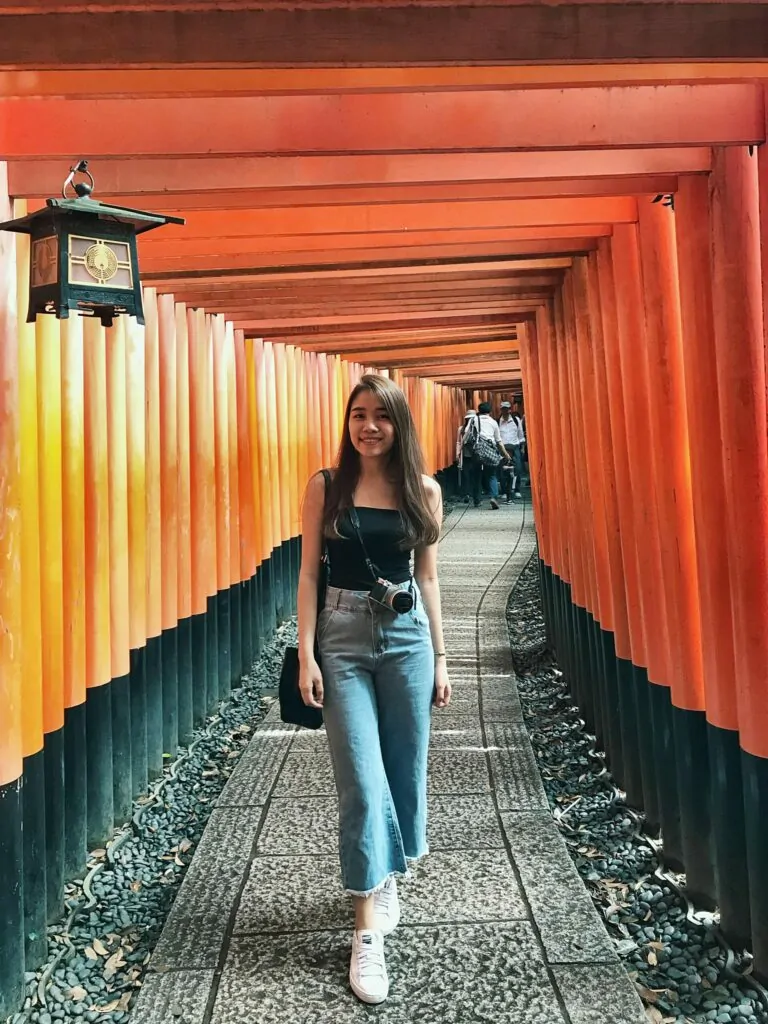
When you are in Japan, you will notice that the torii gates are almost everywhere, even as a store deco or a souvenir keychain. The torii gates symbolise the entrance to an Inari shrine and Fushimi-Inari with countless of the gates is considered as the most impressive religious site to visit in the country. All of the red torii gates lead uphill to the highly regarded Mt. Inari, which would take two hours to climb.
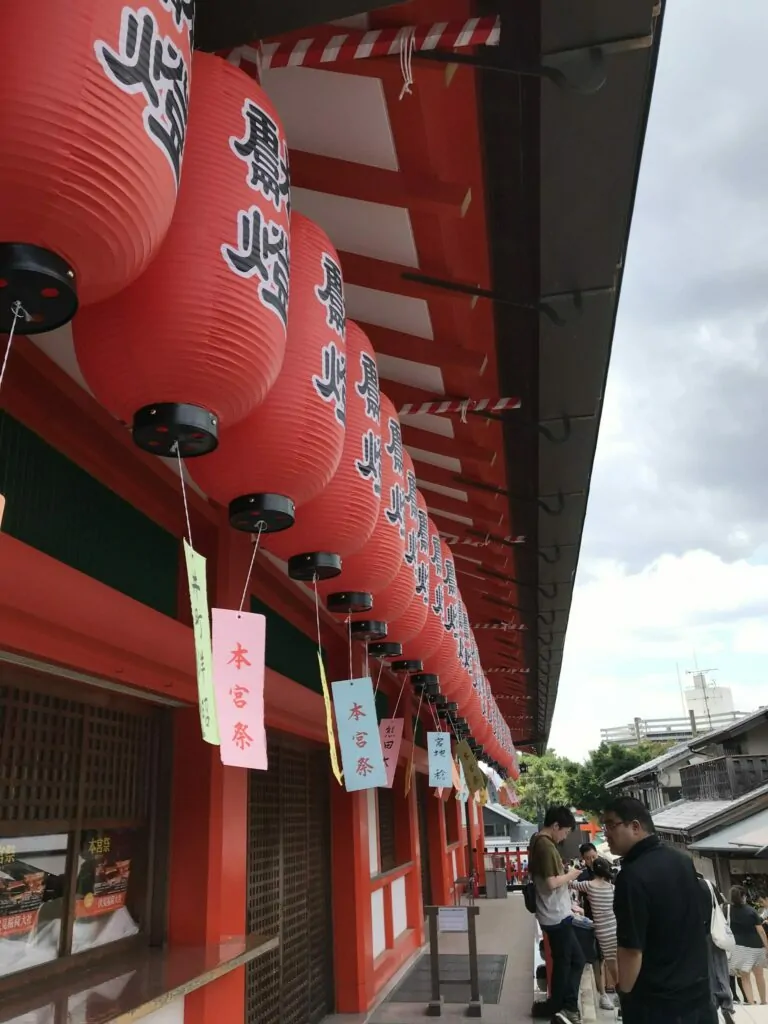
When we arrived, the shrine was already crowded with tourists and locals. There is no charge to visit the shrine and even climbing up to the mountain is free.
Visit Toji Temple
Toji Temple is another hidden gem in Kyoto. It is lesser known by tourists so it is less busier than Fushimi-Inari Shrine.
The literally meaning of Toji Temple means the “ East Temple”. Toji Temple is one of Kyoto ‘s many UNESCO world heritage sites .
When we first arrived, the entrance led us to the Kondo Hall which is a large wooden building and the temple’s main hall . Across the Kondo Hall is where the five stories Pagoda stands. The pagoda is 57 meters tall and makes it the tallest pagoda in Japan!
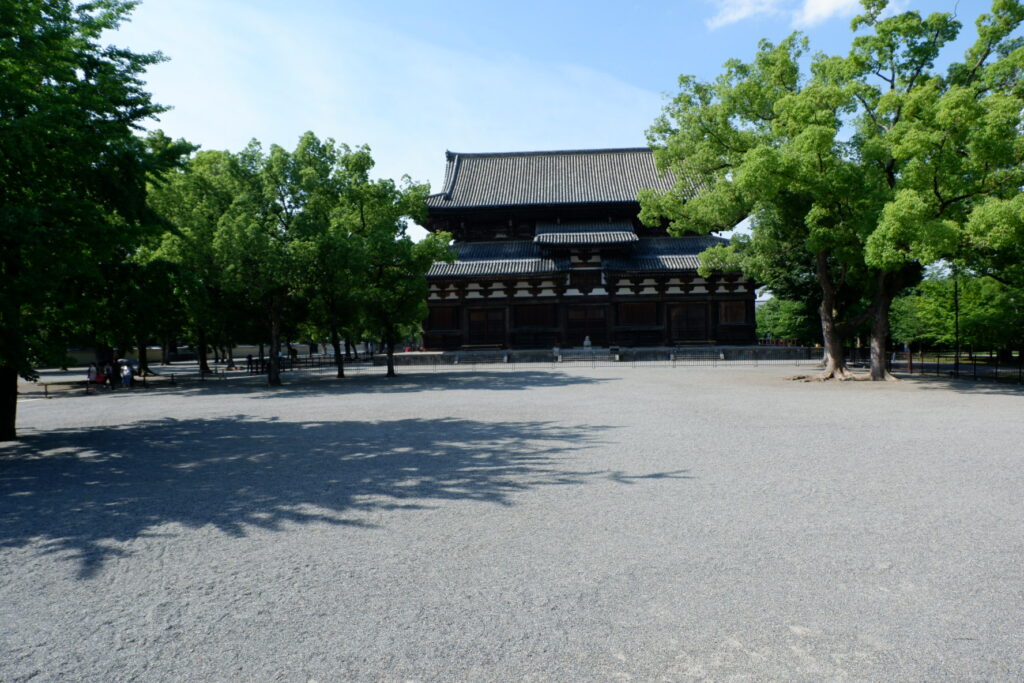
The Toji temple is large, and the surrounding region is kept up nicely with lovely gardens.The garden is built around the two ponds – east and west. Because of the garden and pond,the Pagoda in the Toji Temple is also a well-known photo location in Kyoto.
Take A Walk At Gion
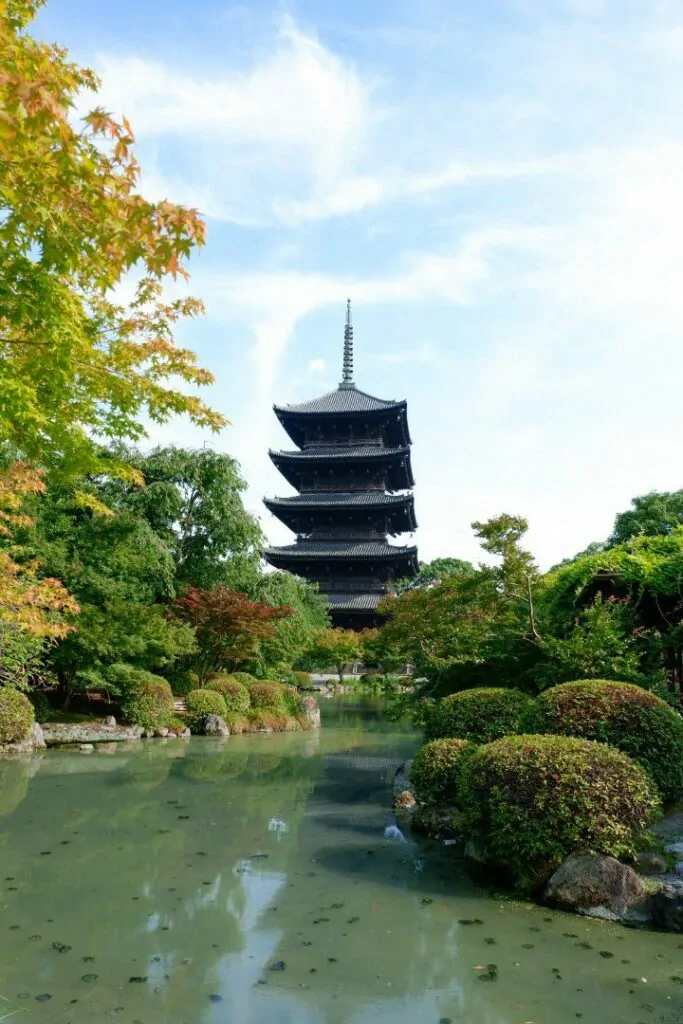
We then travelled to Gion , the well-known geisha neighbourhood.
Gion is known for having a large number of old wooden machiya merchant houses that are now home to restaurants, stores, and teahouses where geisha perform.
You might be able to see geisha in Gion wandering through the streets wearing traditional Kimonos. But it’s best to treat them with respect. We did encounter a geisha walking by and we did not disturb them for photo purposes.
Head Up To Kyoto Tower
In the evening, we toured to the iconic Kyoto Tower before going back to Osaka.
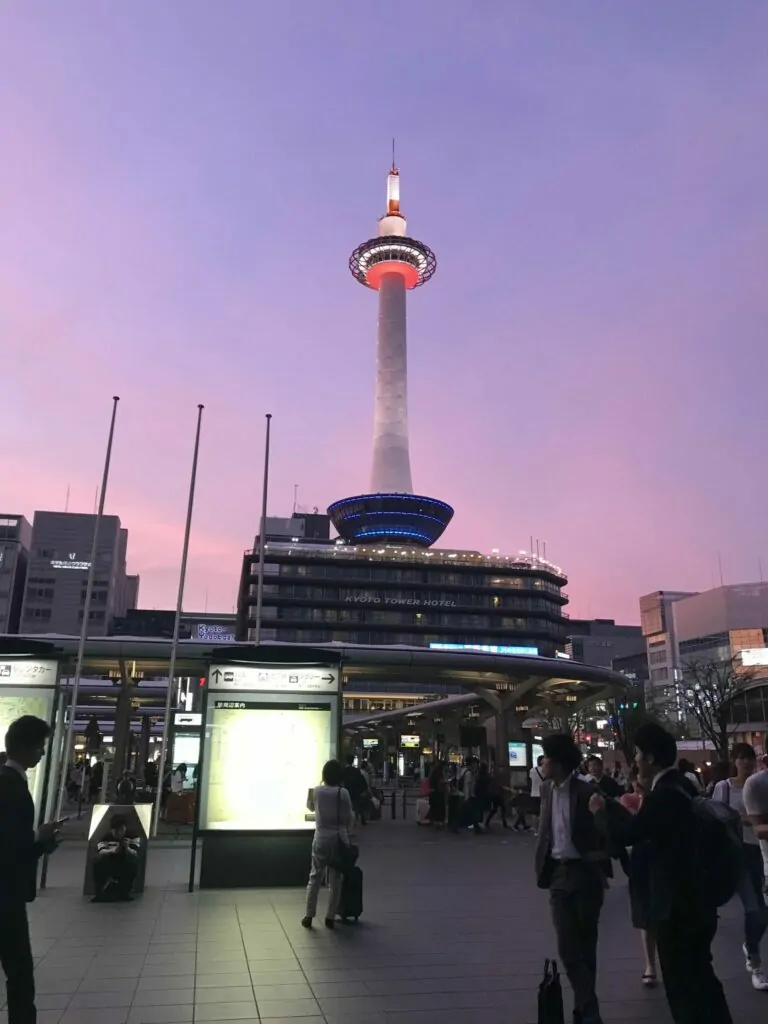
Kyoto Tower is sited right in front of the JR Kyoto Station. There are so many things to explore inside the tower from hotel and gourmet to dozen of souvenir shops and observatory deck!
What caught our eyes was the observatory deck, the only 360° viewing platform in Kyoto . I recommend going to the deck in the evening to see the breathtaking night view of Kyoto.
The admission fee for an adult was 800 JPY for one hour. I believe it is worth the price because it is a strategic vantage point for viewing all of Kyoto, and the platform is also very well-maintained. You can get the ticket online or on the site.
Japan Itinerary : Day 3
Day trip to universal studio japan (usj).
Prior to Universal Studio Japan (USJ), we had been to Universal Studio Singapore (USS) a few years ago. It was so much fun and I have become a fan of Universal Studio Theme Park ever since, and it is on my wish list to visit every single Universal Studio in the world.
This time came the chance for me to explore Universal Studio Japan in Osaka! I was super excited.
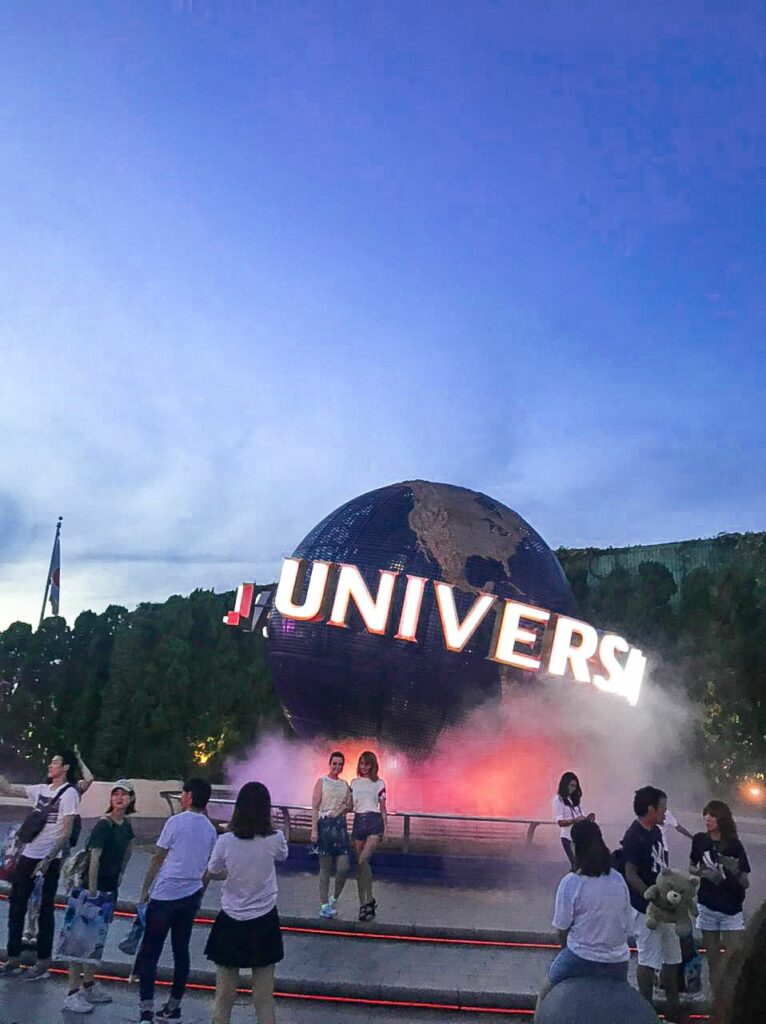
Universal Studio Japan is more than double the size of Universal Studio Singapore and it is the Top 5 most visited amusement parks in the world!
The park has plenty to offer. If you enjoy the heart-pounding roller coaster rides, you will not be disappointed. If not, there are still a tonne of other, less difficult rides to experience.It takes at least a whole day to tour because it is so large and so many things to see.
We purchased the ticket online in advance so we could skip the ticket counter and go directly to the entrance line.We got there 30 minutes before the park opened because we had been warned about the huge crowds at USJ. I was surprised that when we arrived, there was already a long line in front of the entrance to the park! However, as soon as the park opened, the line moved very quickly, and we were able to enter after approximately 15 minutes.
We experienced several major and popular rides in the park like Wizarding World of Harry Potter, Jurassic Park rides, Despicable Me Minion Park for kids, Water World, and many more.
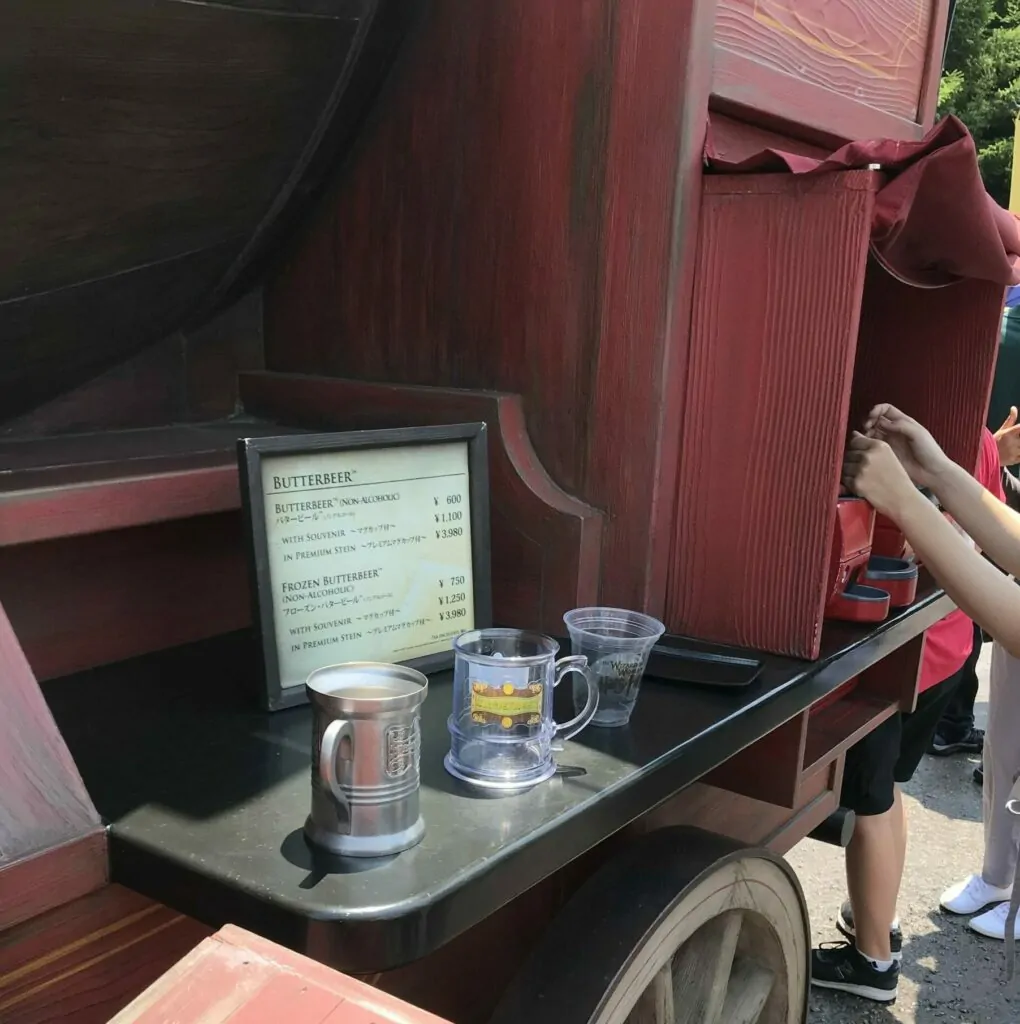
The rides were so much fun and I wished I had more time to go on another round of rides but the queue for the rides were normally long and needed about 30 minutes to 2 hours waiting.
Also, the butter beer is also one of the highlights in the Wizarding World of Harry Potter. Try one when you’re there!
Our tickets were the standard entrance tickets, which gave us enough time to ride every ride once but not enough time to ride again in order to see everything the park has to offer. Therefore, in order to save time and be able to explore the park and rides as much as you like, I suggest getting an Express Pass is totally worth it.
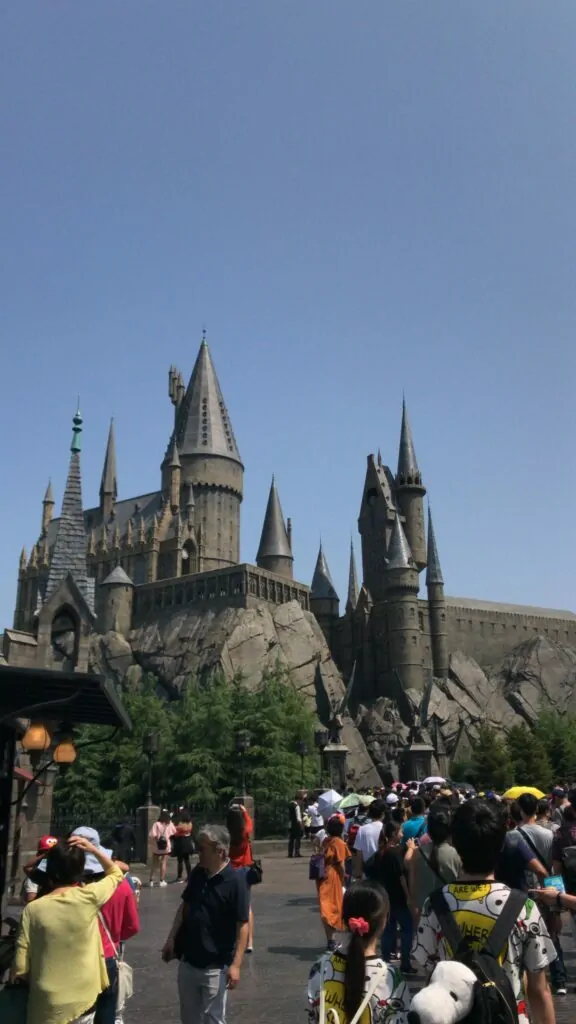
Japan Itinerary : Day 4
Kuromon-ichiba market.
If Osaka is the Kitchen of Japan, then Kuromon-Ichiba Market is without a doubt the kitchen of Osaka.
Kuromon Market is a covered public market that is massive with more than 150 shops selling seafood, meat, food, snacks and even clothes too. This market is usually where the locals buy the ingredients to cook and due to its massiveness it became popular among tourists too.
The market opens at 8 in the morning and when we arrived at their opening times, there were already dozens of shops open for business and within one hour, the market was already busy.
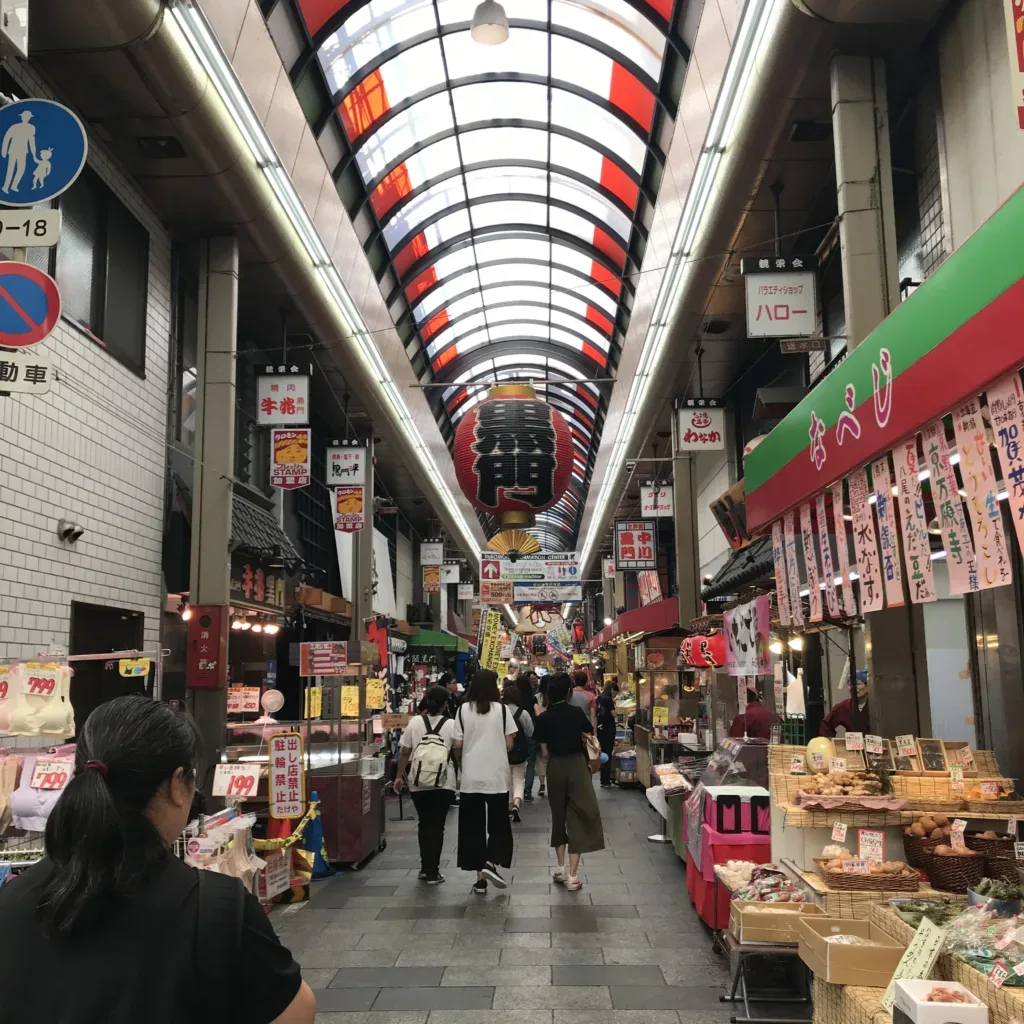
One of the market’s many attractions is that they not only sell raw food but also cook food for consumption right away. Some shops even provide a little area where customers can usually stand and eat.
Osaka Castle
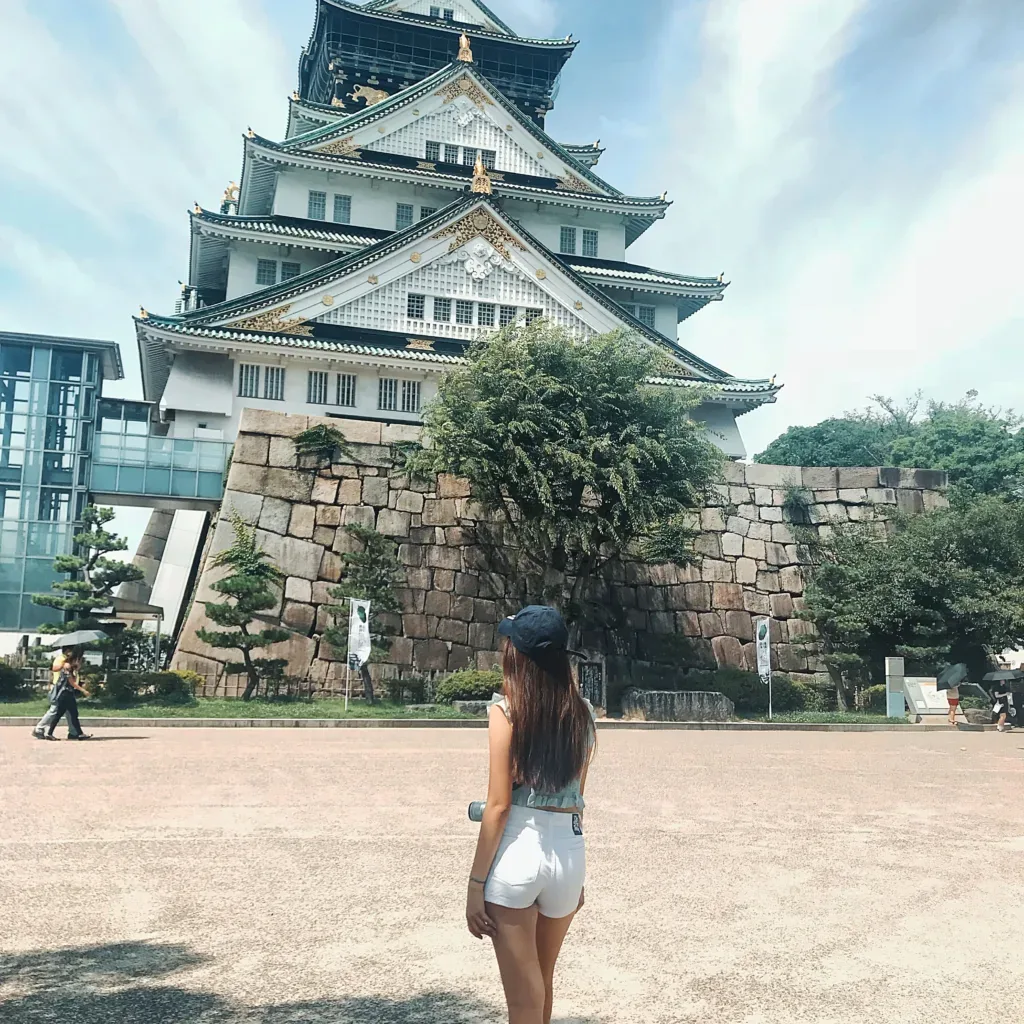
After a satisfying brunch at the market, we took a train ride to Osaka Castle .
One of Osaka’s most well-known sites, Osaka Castle Japan, exhibits the quintessence of Japanese architecture and culture.
Osaka Castle was built in 1583 and has undergone renovation over the years to upkeep the castle. Before heading to the castle, we strolled through the Osaka Castle Park first. The park is large and it includes many areas such as the Osaka Castle Main Keep, Nishinomaru Garden and Osaka Castle Museum.
From the garden, we followed the sign to Osaka Castle Main Keep. In the meantime, we stopped and took photos in the garden and it took us about 30 minutes to the main keep. The open spaces around the area of the castle keep make it a great photoshoot spot especially in cherry blossom time.
We were mesmerized by the facade of the castle main keep. The castle has eight levels inside, while seeming like a five-story building from the outside. You can either admire the castle form the outside or visit the castle by purchasing the ticket in advance or on site. The admission to the inside of the castle is 600 JPY for adults.
Deer-Feeding at Nara Park
One distinctive feature about Nara Park is that you will find the bowing deer wandering freely here! When I was planning for this trip, I read from blogs about visiting Nara Park and the bowing deer caught my attention.
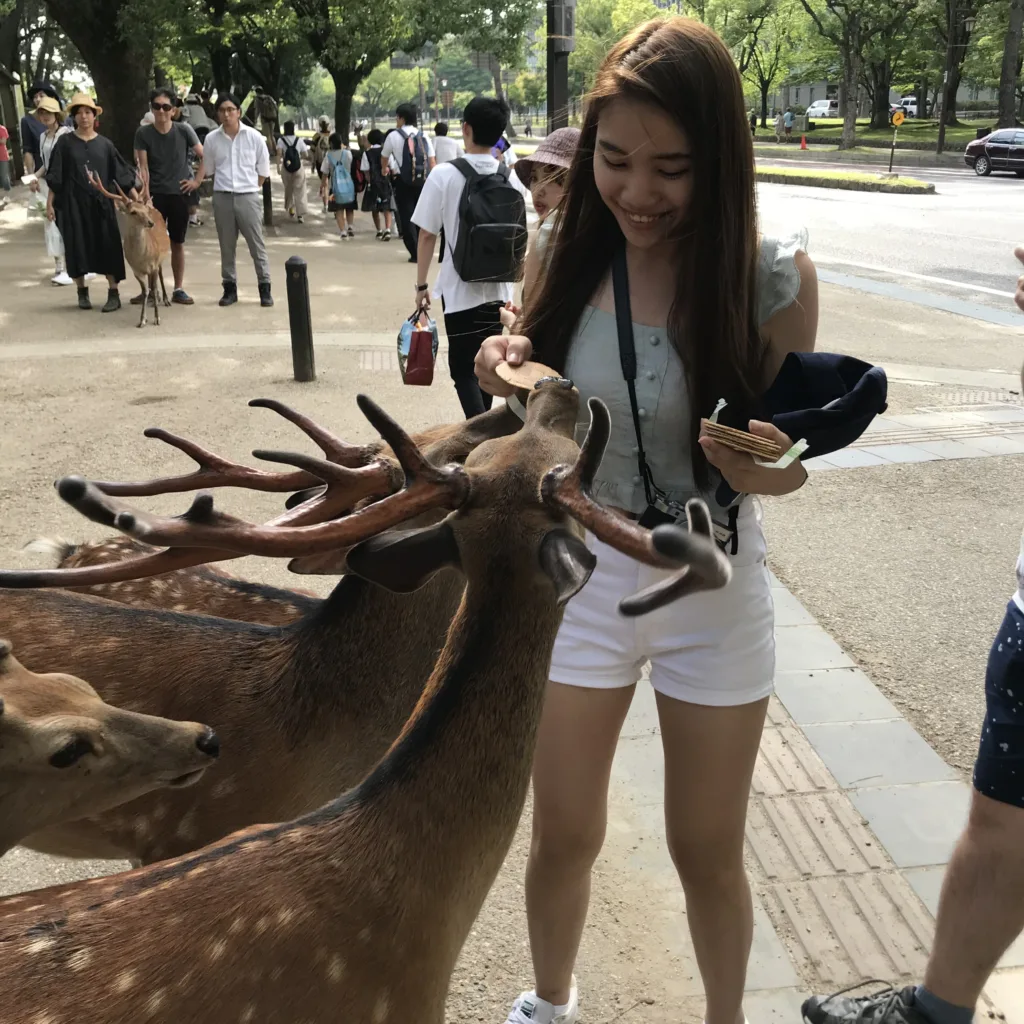
The deers in this region are renowned for unique behavior: bowing to visitors. And it is true. When we were strolling in the park , the deers were all over the park too and they would bow to us occasionally. It’s so adorable. We also bought the cracker to feed them and they saw us with the cracker they kept following us.
A 10 minutes walk from the Nara park brought us to the Kofukuji temple , a UNESCO World Heritage site. Inside, there is a five storied pagoda which is the oldest in Japan. We spent some time in the temple and took the chance to take some photos together with the deers in the temple.
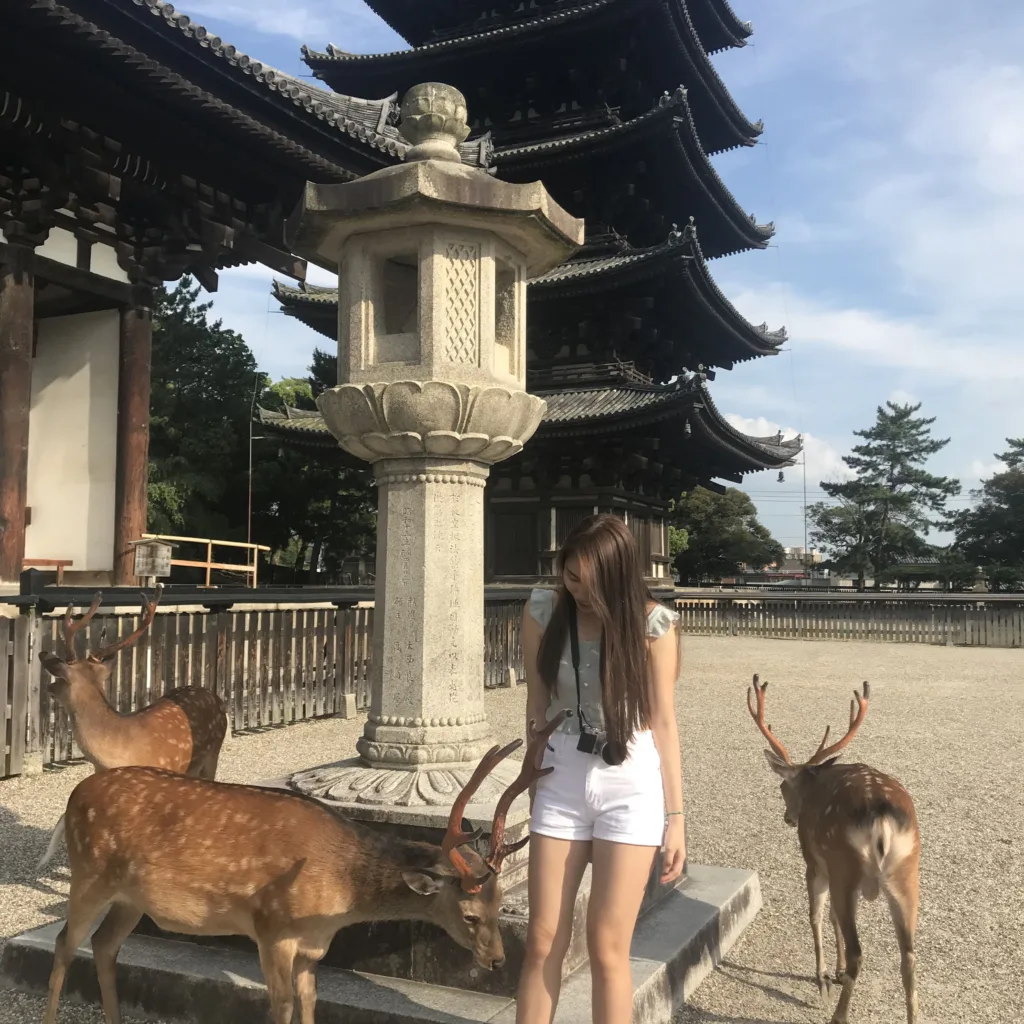
Japan Itinerary : Day 5
On our fifth day, we checked out of our Osaka Airbnb and boarded a plane for Tokyo. The flight was a pleasant one and ANA airline offered the best economy class I had ever had. The seat was spacious and they offered in-flight snacks for our one hour flight too.
After checking into our hotel in Tokyo, it was already afternoon. We headed to Meiji Jingu Shrine in Shibuya.
Meiji Jingu Shrine
Only a short distance away from Harajuku station is where this Shinto temple is located . It encompasses a huge area, including a lovely, quiet forest encircling the holy path leading to Meiji main shrine. The tranquility inside the forest makes us forget that we are in the heart of Tokyo, the world’s largest metropolis. We lost ourselves in this peaceful forest for about half a day.
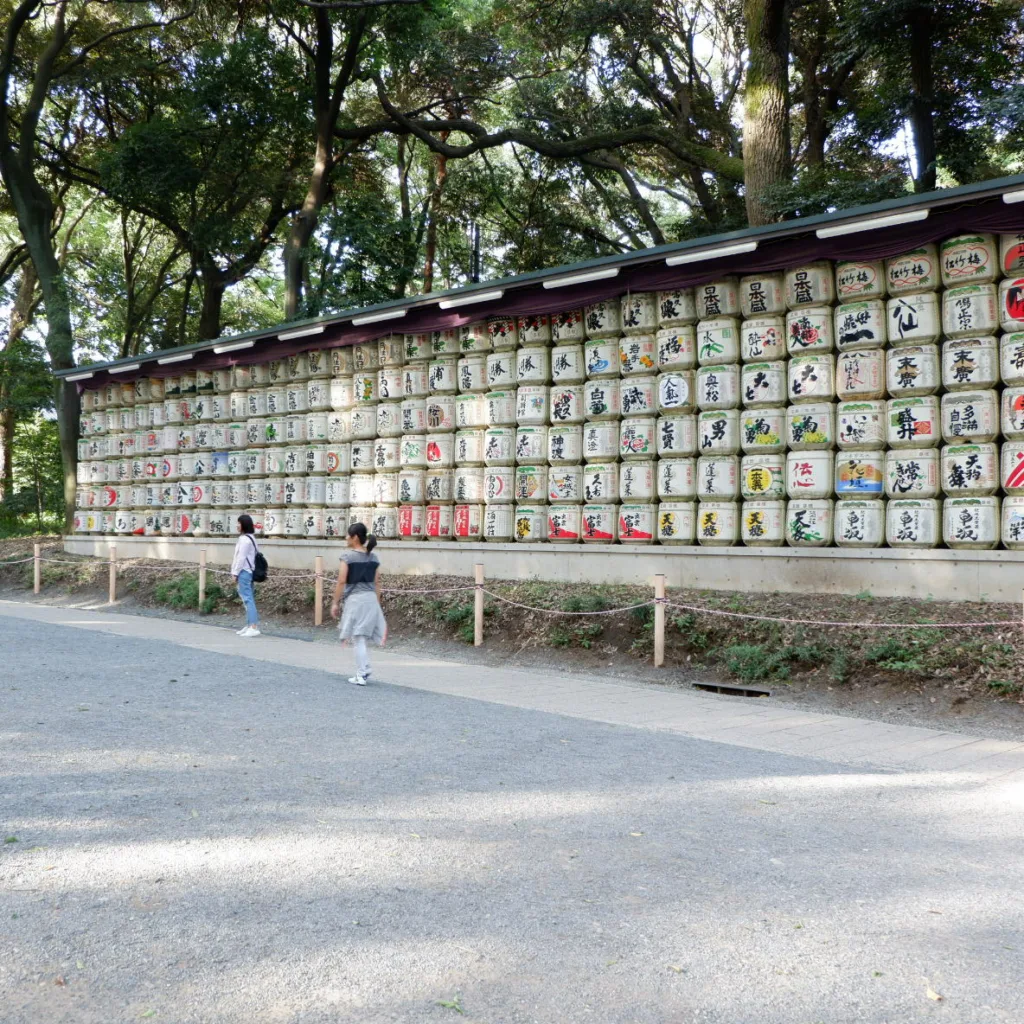
After a long walk in the day, we treated ourselves to the cafes in the city and people-watch while sipping coffee.
Japan Itinerary : Day 6
The sixth day of our trip is where we spent the day exploring the cities in Tokyo.
We headed over to Shinjuku for a city tour. It is truly a bustling city. The area is known as Tokyo’s largest red light district and offers a luxurious nightlife adorned with colourful neon lights. However, when we visited in the daylight, it was also a busy city with much entertainment, food and shopping to do.
Tsukiji Market
Next, we visited Tsukiji Fish Market with a train ride away. Tsukiji market previously had the inner market which was mostly wholesale but it moved to a new site in Toyosu. The outer market remains and it consists of a whole block of retail and wholesale, including restaurants along the narrow lanes. The seafood was exceptionally fresh at the sushi restaurant we ate at for lunch in Tsukiji Fish Market. You should definitely have breakfast or lunch here.
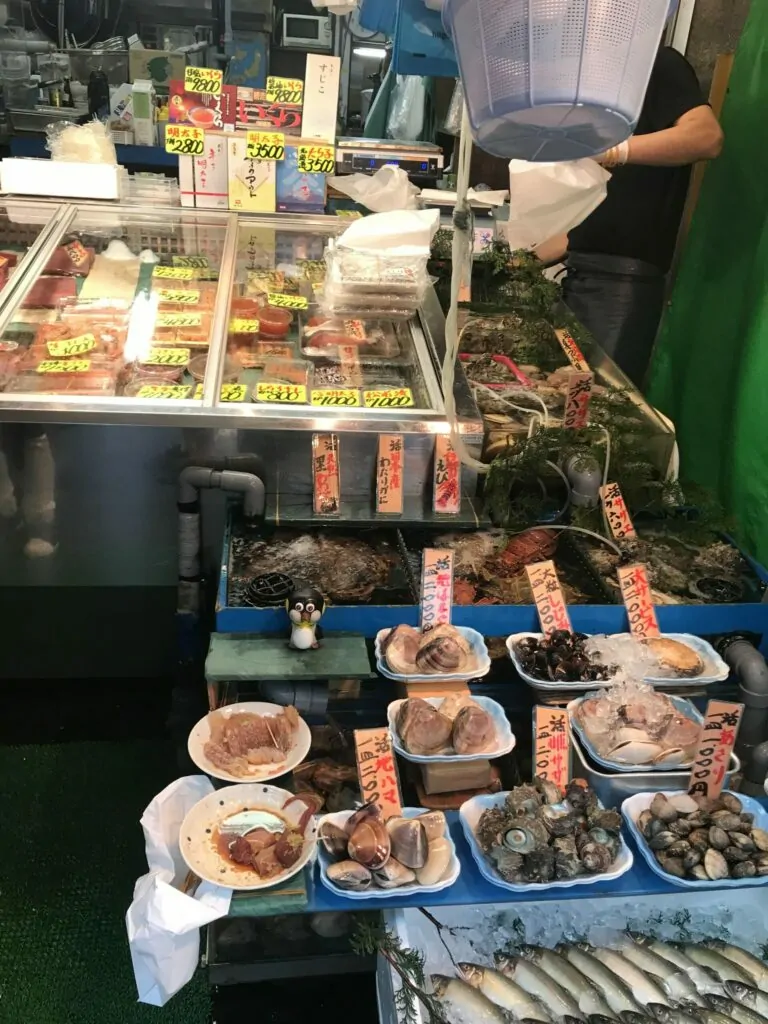
After lunch, we went off to the nearby city – Shibuya (again)!
The famous Shibuya-crossing was the one that blew our minds. The surrounding area of Shibuya is a lively, popular destination for people of all walks of life. The scramble intersection of the crossing is the busiest intersection I’ve ever seen, and while I was there watching, the crowds never thinned down. This shows how lively Shibuya city is.
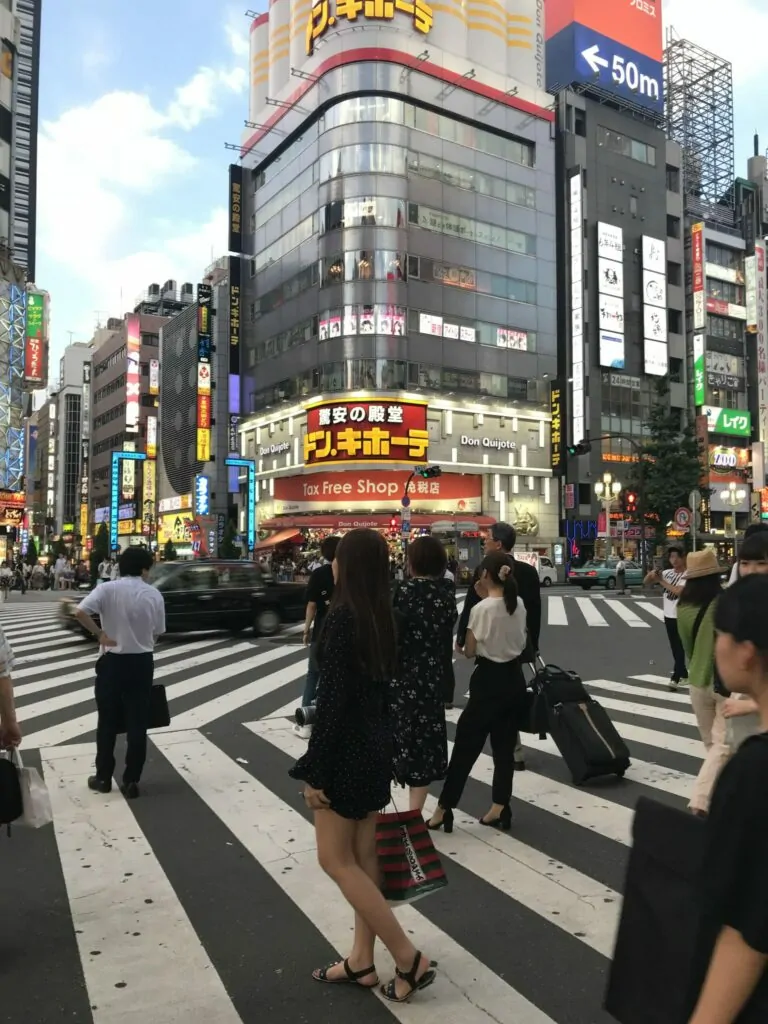
Next to the Shibuya Crossing is the symbol of Shibuya – Hachiko. Hachiko’s bronze statue has been there for over 80 years and it is also one of the iconic points in Tokyo.
Japan Itinerary : Day 7
Day trip to hakone.
We took a day trip to Hakone to see the legendary Mt. Fuji! Hakone is about a 1hour 30 minutes train ride from Tokyo.
We bought the Hakone Day Pass in advance and that pass gave us accessibility to the public transport to Hakone and also within Hakone. We took the Tozan train through to Gora and the train is also built to climb to steep mountain slopes.
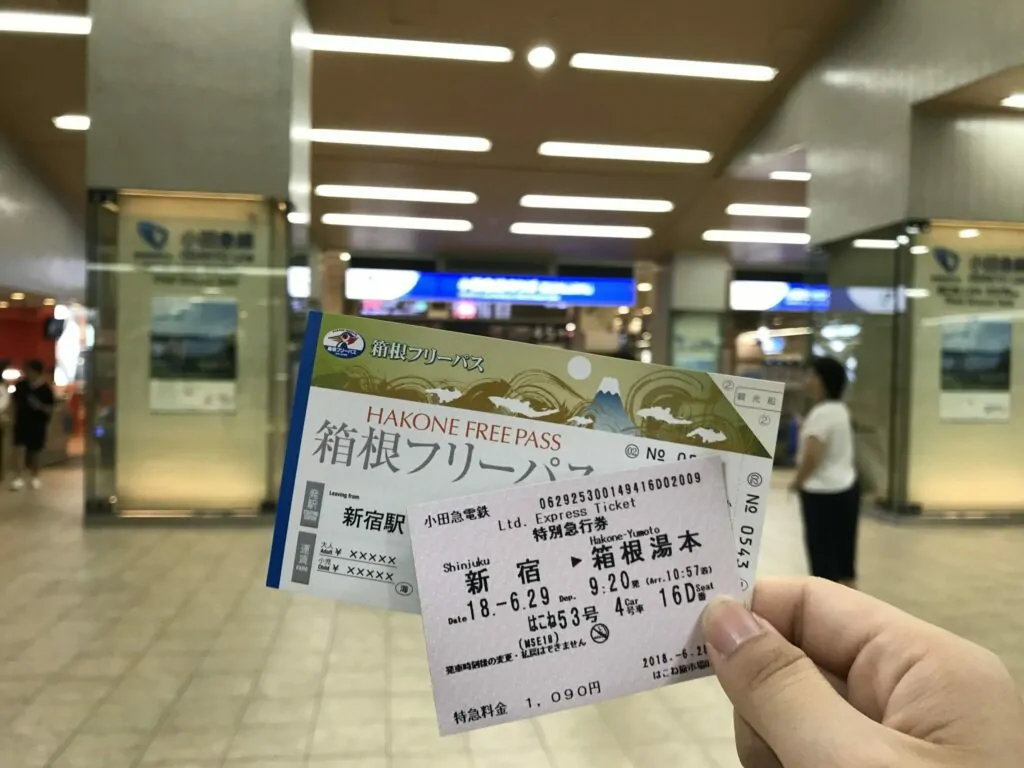
However, when we were in Hakone , the weather was cloudy and windy, so it was pretty hard to get a nice view of Mt. Fuji. It is advised to check the weather before planning a day trip to Hakone to avoid disappointment.
Some major points in Hakone like Hakone Shrine, Lake Ashi, Hot Springs and cable car are good spots to view Mt. Fuji.
Although the weather was not great for viewing Mt.Fuji, we had a pleasant time in Hakone exploring the town.We were absolutely enveloped in the calm in this wonderful village, which contrasts sharply with the other areas in Tokyo, which are constantly bustling.
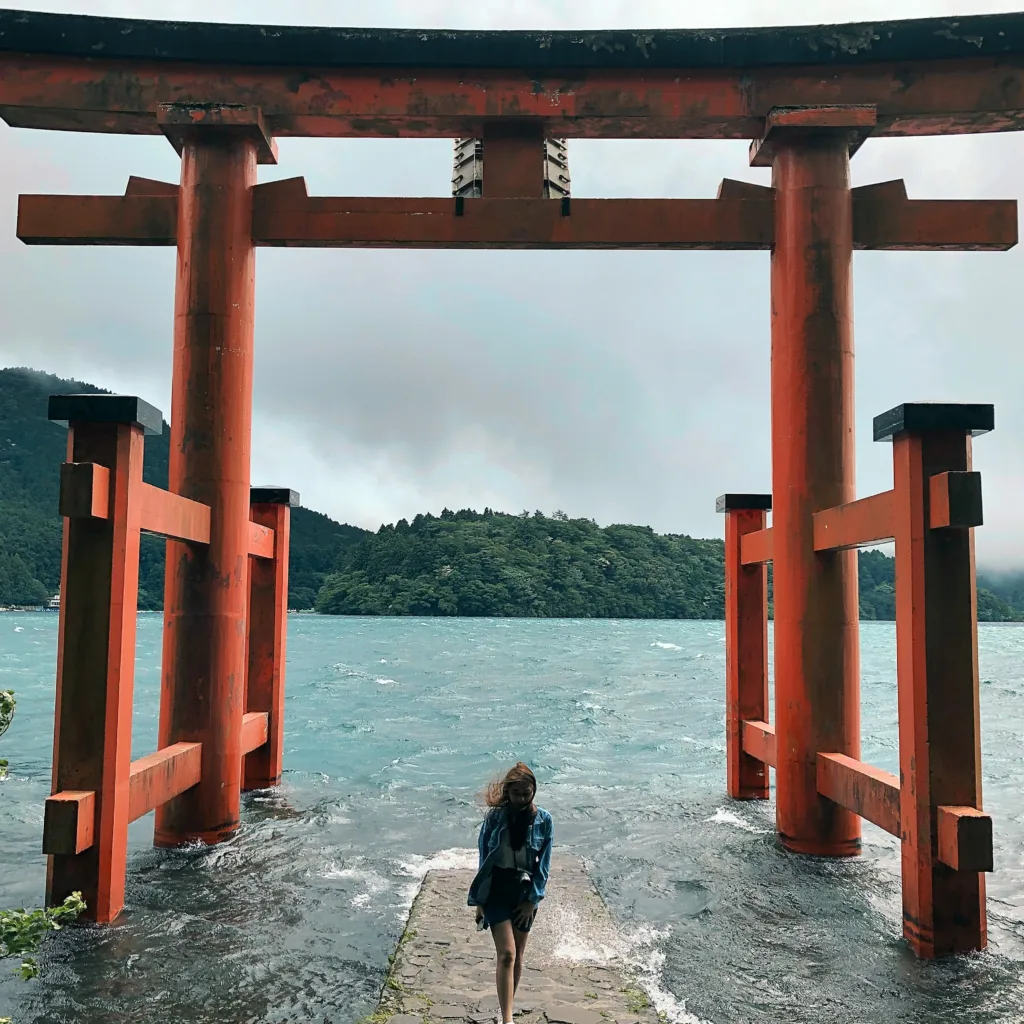
Japan Itinerary : Day 8
Sensoji temple, asakusa.
Here comes the last day and the highlight of our trip in Tokyo!
A trip to Japan without experiencing the traditional Kimono is incomplete. So we booked a Kimono rental in advance and headed to choose our Kimono and get our hair done by the rental shop too!
Rent Kimono here!
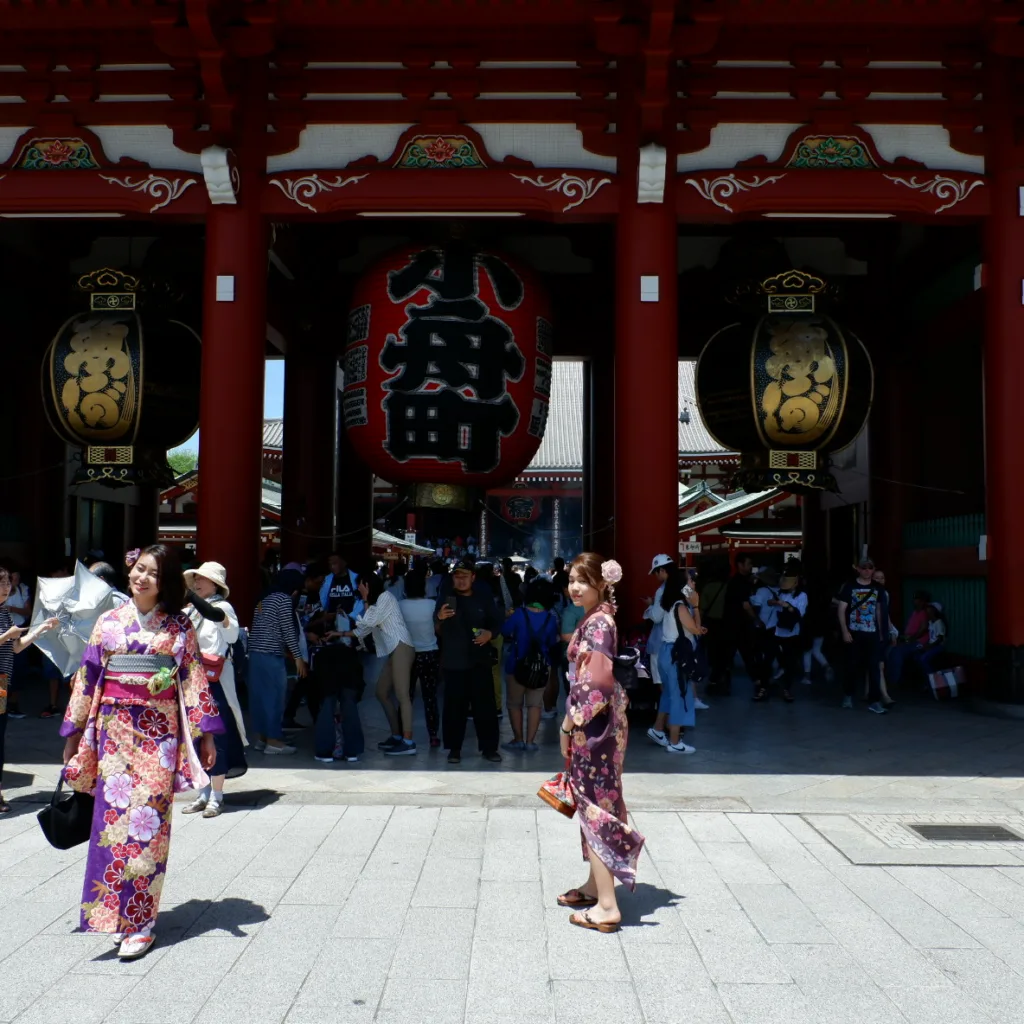
The shop that we rent Kimono from is only a few blocks away from the famous Sensoji Temple. Sensoji Temple is popular for its entrance gate called Kaminarimon which stands out through its large red lantern. I am sure you have seen countless times of this lantern from the internet. It is like the icon of Japan.
The temple is so famous amongst locals and tourists not only because of the temple itself but also there is this oldest shopping street in Japan, called Nakamise Dori which is located beyond Kaminarimon and leads to the temple’s main hall. The shopping street has vendors selling traditional Japanese handcrafts and snacks.
After a few hours in the Kimono, we returned to the rental shop and waved goodbye to Japan.
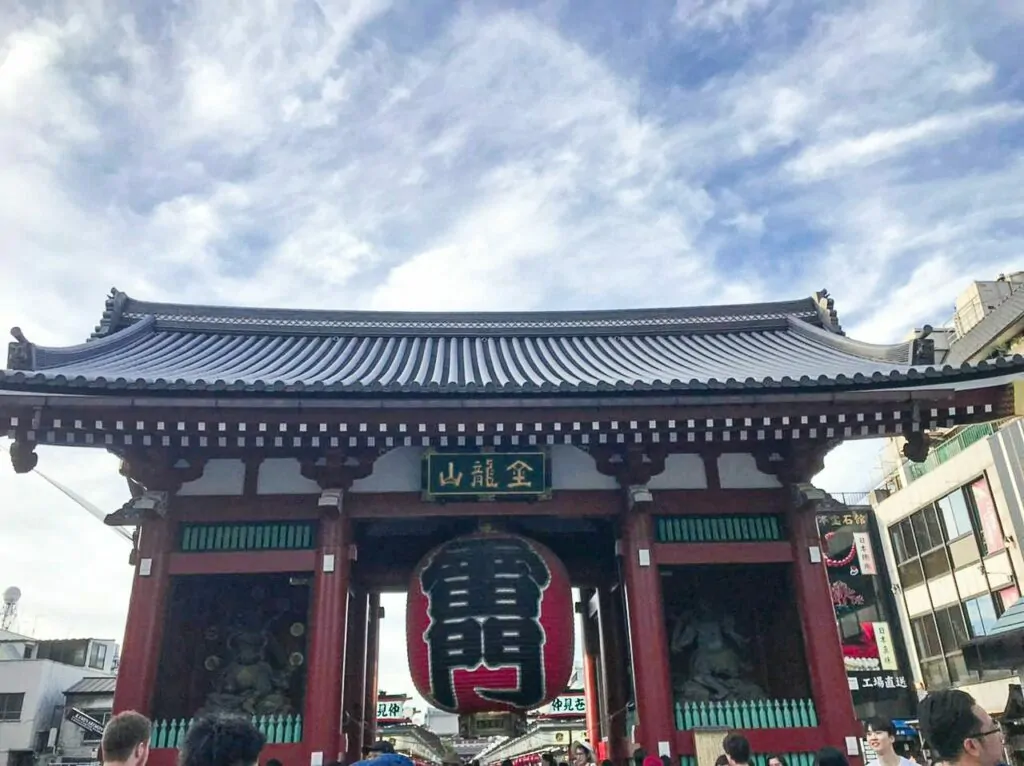
Overall the trip was awesome ! One thing I regret is not being able to see Mount Fuji during this trip, but I will surely return! So that sums up my first 8-day trip to Japan. Japan is a great place with rich culture, amazing food, fun attractions and great people! If you plan to visit Tokyo and Osaka, 8 days is actually enough to explore the main attractions and still able to wander around the streets in Japan. I believe this 8 days in Japan itinerary is great for a first timer too.
Food To Try In Japan
Japan is famous for its culture, historical buildings and most importantly, the FOOD!
Here are some of the food to not missed out when you travel to Japan :
Ramen is like a synonym to Japan. Most people know about Ramen and must have tasted it in its instant noodle type. But while visiting Japan, you will be surprised by its incredible flavour and its amazing taste. Head into any of the Ramen shop in Japan and you will be pleasantly surprised by the rich Ramen broth.
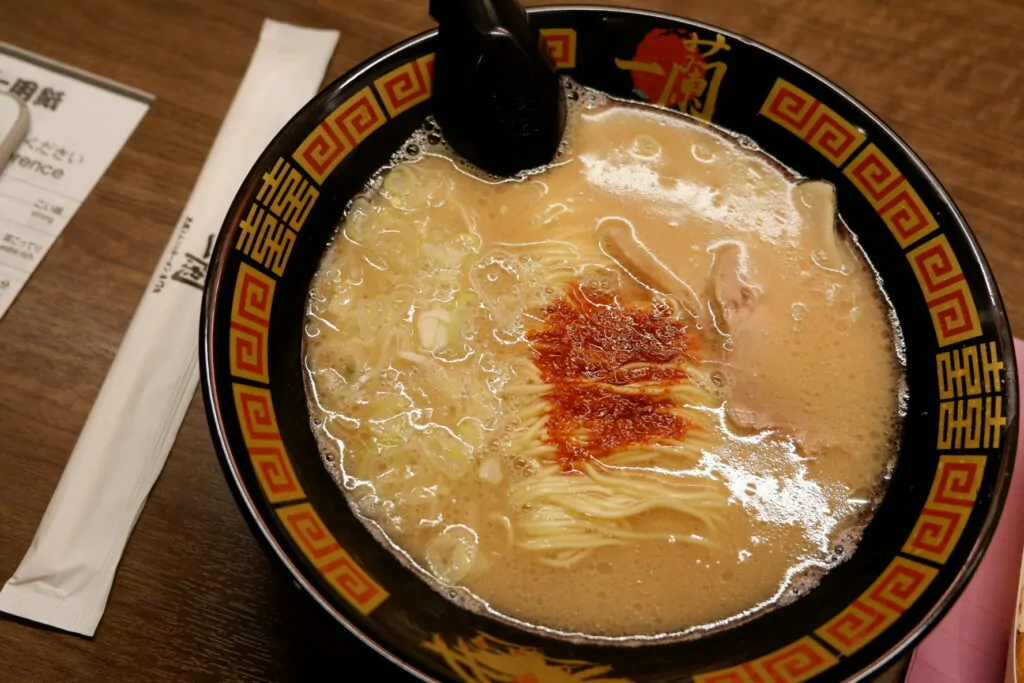
Okonomiyaki
Okonomiyaki can be considered as Japanese pancake and it is extremely famous in Osaka. Osaka is renowned as the origin of the dish.
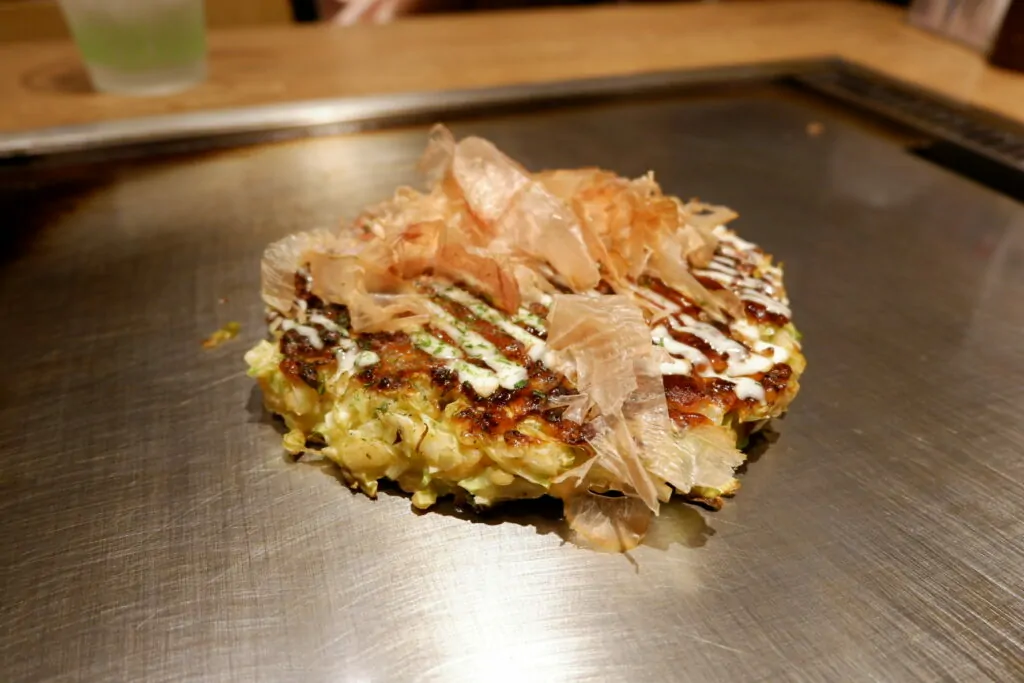
Eating sushi from the sushi train is consider a must do when visiting Japan. With only 100 yen, you can get a plate of good sushi. One of the best places to find the good sushi at affordable price is in the Tsukiji market.
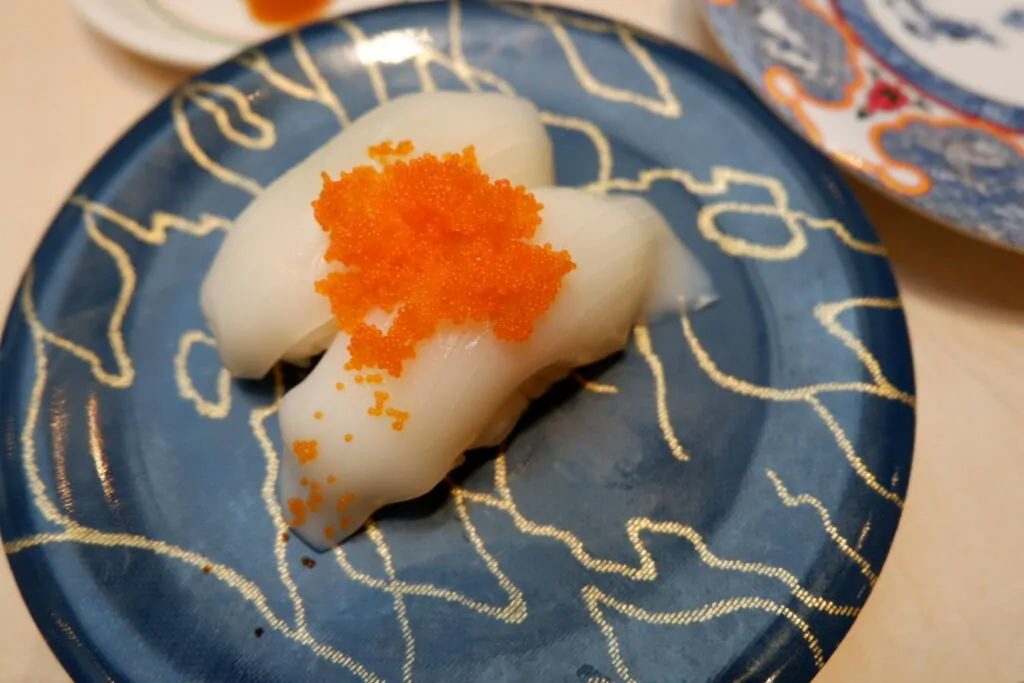
Matcha is one of the most popular Japanese food in the world. Matcha grows in Uji , Japan which is a region near Kyoto. Hence, don’t miss out on trying Matcha or food with Matcha flavour in Japan.
There are some ice cream shops that sell good Matcha ice cream too. One of the best I have tried in Japan was the Suzukien that sell Matcha gelato with 7 levels of richness. You can select any level of Matcha richness. The higher up the number goes, the richer is the Matcha flavour of the gelato. It is famous so do expect a line outside the shop but the queue is quick.
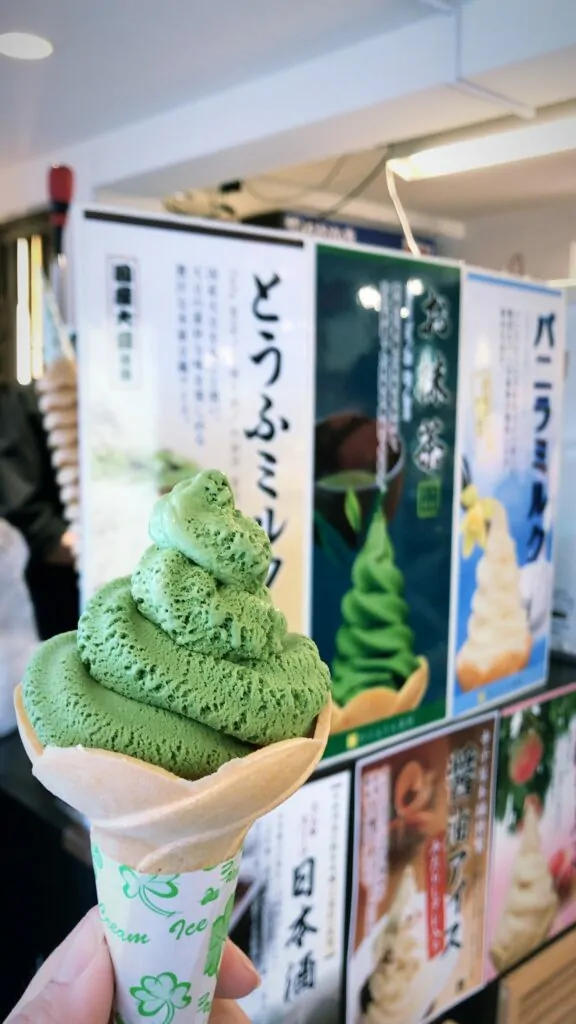
Tempura is the deep-fried of fish, prawn, vegetables or chicken. It is good to be enjoy as it is or with dipping sauce. There are several great restaurants in Japan that are specialise in tempura and you may refer to this website for more info.
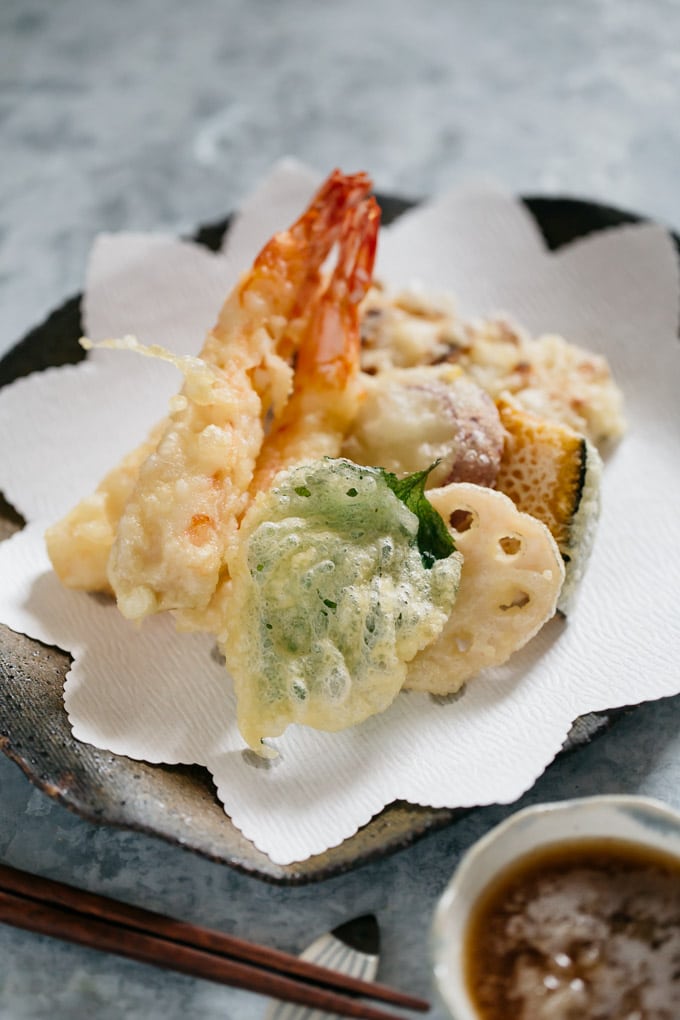
Similar to Ramen, Udon is another popular dish in Japan. There are many varieties of Udon in Japan, the Udon refer to the noodles while the broth comes with variances of flavours.
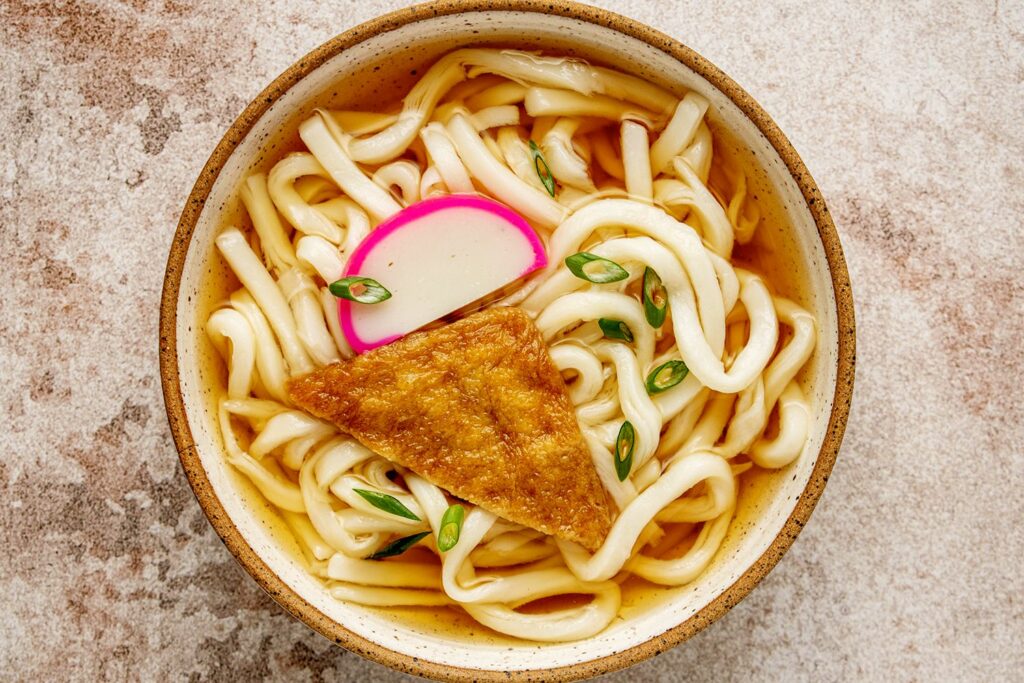
Another extremely noodle in Japan, is Soba. Soba can be enjoyed in cold dip or in a broth as soup noodle. The noodle is made of buckwheat and it is very special and tasty so don’t forget to try it when you visit Japan.
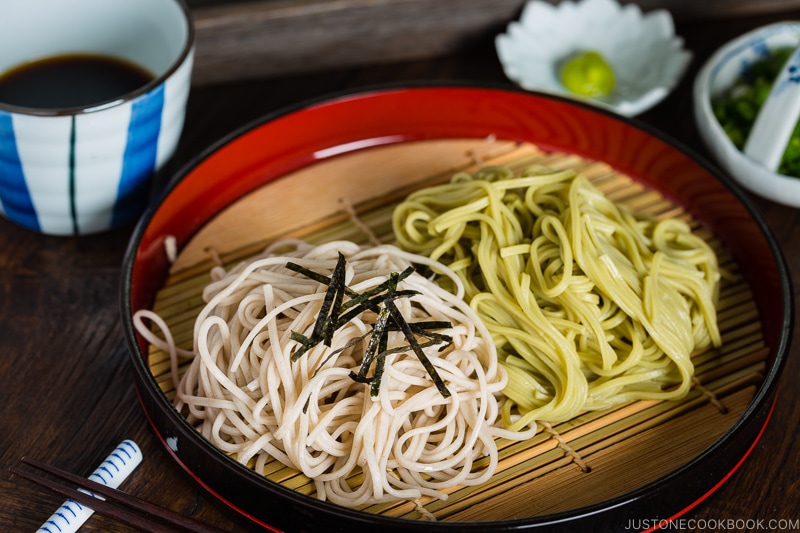
Yakitori is Japanese type of “Satay”. The word “Yakitori” literally means grilled chicken but it actually refers to skewered meat and vegetables prepared on a grill. I personally like the dish very much especially to have it with sake or beer. When you visit Japan, make sure to go to Izakaya to have some sake and yakitori as supper!
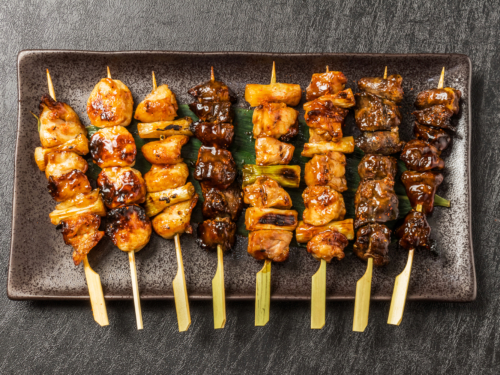
How many Days Is Enough For Japan?
Japan has a lot to offer. From sightseeing to food tour and temple visits, there are so many things to do and see in Japan. If it’s your first time to Japan, and you want to do sightseeing and food hunt, then spare at least seven full days to tour Tokyo and Osaka. The minimal amount of time required to visit Japan is seven days , while a more in-depth journey should last roughly two weeks.
When Is The Best Time To Visit Japan?
Japan has four seasons – Spring, Summer, Autumn and Winter. I would say each season of Japan is worth visiting. But March to May (Spring) is the most popular season of Japan. With cherry blossom in the Spring, everywhere in Japan becomes a picturesque scenery.
Besides Spring season, September to November (Autumn) is also another vibrant season because this is the red leaves season that adds tone to the beautiful country.
Where To Stay in Japan?
When travel, i always look for hotels that has good accessibility to public transport and at the same time also close to the city centre. Here are some of the good stays in both Tokyo and Osaka.
Budget – Sotetsu Fresa Inn Higashi
Mid range – Mitsui Garden Hotel Ueno
Luxury – JR Kyushu Hotel Blossom Shinjuku
Budget – Grids Premium Osaka Namba
Mid range – Hotel Nikko Osaka
Luxury – Conrad Osaka
Japan Travel Cost
The cost of traveling in Japan is the highest among Asia countries. Based on my 8 days Japan itinerary, I spent around 15000 JPY ( 108 USD ) a day including accommodation, meals, transportation and tickets. I shared hotel rooms with my sister and the hotels we stayed were of mid-range.
Accommodation : Accommodation in Japan is not cheap. If you are looking for sharing room to save cost, a budget dorm room normally costs around 2000 – 3500 JPY (14 – 25 USD) per night. However, if you are looking for privacy and a standard budget room in the city, you can still find a small hotel room that costs around 5500 – 7000 JPY (38 – 50 USD ) per night.
Meals : Food in Japan is generally more expensive than in my home country Malaysia. For a bowl of Ramen at ramen bar like Ichiran , it costs at least 1000 JPY (7 USD) . Most restaurants meals cost around 2000 – 3000 JPY (14 – 20 USD). The iconic sushi train costs at least 150 JPY (1 USD) per piece.
You could still find cheap pre-packaged food in Family Mart or 7-11. The food at these marts are good too and the locals usually buy them for breakfast.
Overall, spare a minimum of 6000 JPY (40 USD) a day for food in Japan.
Transportation: Other than accommodation, transportation in Japan is also consider as expensive compared to most of the Asia countries. Most of the city metro ticket costs around 150-250JPY (1-2 USD) for a single journey.
If you use the trains a lot, consider buying day passes like the Tokyo Subway Ticket for either 24 hours or 72 hours or JR rail pass for 1 weeks to 3 weeks. I bought the rail pass and it saves a lot of costs for my transportation in Japan. The pass is cheaper when you buy online in advance.
If you are keen to know more about tips and guide of travelling in Japan, I wrote a detailed version in this guide .
From bustling cities to serene temples, from mouth-watering cuisine to breathtaking nature, Japan truly exceeded my expectations.
I am grateful for the warm hospitality of the Japanese people, who made me feel at home in a foreign land. Japan is a great place for fun, cultural experience , good food adventure as well as amazing people!
After this trip, 8 days in Japan is totally not enough because there are so much in Japan to explore! However, if you only have 8 days, you could follow this itinerary to discover the best of Japan’s big cities.
I can’t wait to return to Japan soon. I hope this 8-day Japan itinerary helps you in planning your trip to Japan.
Discover more
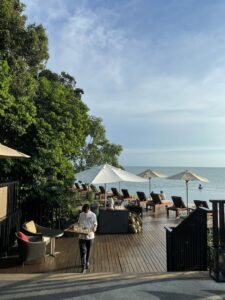
The Ritz-Carlton Langkawi Hotel Review :Best Secluded Resort
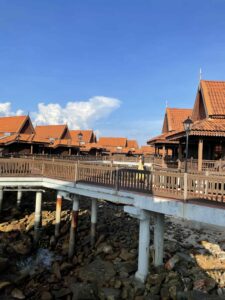
Berjaya Langkawi Resort Review: Best Chalet on Water Resort
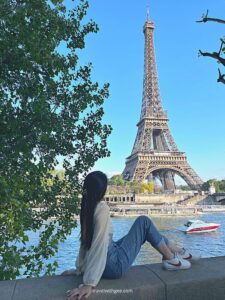
7 Most Instagrammable Photo Spots for Eiffel Tower in Paris

Hotel Splendid Etoile Review: BEST View of Arc de Triomphe

17+ Best Paris Hotels With Eiffel Tower View

Paris Itinerary : The PERFECT 6 Days In Paris Trip
Your inspiration for building your travel itinerary. Explore the world through the gee lens.
© 2023 All right reserved travelwithgee
Latest posts
You may like.

7+ Best Cafes With Colosseum View in Rome To Visit In 2024
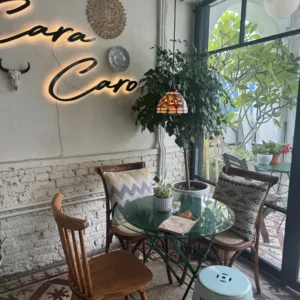
Caro Caro Cafe In Penang : A Cozy Bohemian Cafe
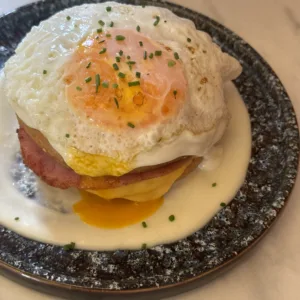
Mangga Cafe At The Blue Mansion @ Penang Review
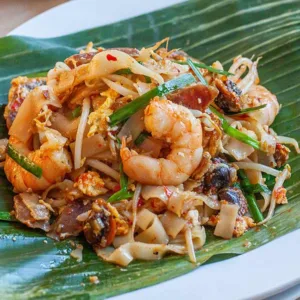
Foodie Heaven : The Best Food In Penang And Where To Find Them
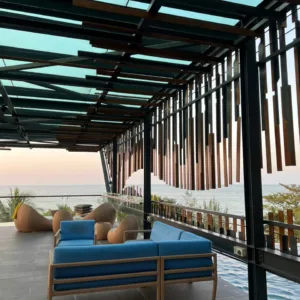
A Complete Angsana Teluk Bahang Review : Best Sunset By The Pool
Privacy overview.

9 Tips for Japan Travel You Can't Afford To Miss
I f you’re planning a trip to Japan, know that the process is a commitment . We’ve gone all over the world and back again, even traveling full-time for two years with our young children.
Even so, planning a trip to Japan sometimes felt like a Herculean task. There are so many moving parts, rules and barriers that it was easy to be overwhelmed at times. After putting together what I’d deem a very successful first visit, I’ve put together some of my best Japan travel tips to help you plan the trip of a lifetime!
I promise, you won’t want to miss these tips for traveling to Japan – they’ll help you make the most of your time with the fewest hassles.
1. Plan as far in advance as you can
As frequent readers of this website know, we’re avid travelers and have been all over the world – sometimes hopping countries on just a few days’ notice.
Japan isn’t a place where I’d want to do that. Ever.
The most important of my tips for Japan travel is to give yourself as much lead time as possible.
We were shocked at just how important it is to plan a trip to Japan well in advance. In my experience particularly if you plan to visit during a peak time (roughly March through May and, to a lesser extent, September and October) you’ll be happiest if you start arranging your hotels 4-6 months in advance. Even 4 months before our March trip, a few small or specialty hotels were already sold out. When I looked to shift our itinerary 3 months in advance, our hotel in Tokyo was double the price I had paid.
But it isn’t just about booking your flights and hotels. There are so many cool attractions in Japan that require booking at least a month in advance. It’s not just the obvious ones! Everything from TeamLab Tokyo (which we got) to Pokemon Cafe (which we didn’t) sells out. Heck, even the wonderful onsen we visited had limited availability for private rooms a month in advance.
Unfortunately the need to lock down times and places so far in advance can make Japan travel planning very tricky. Give yourself plenty of time and try not to get overwhelmed – take it one area at a time and don’t be too disappointed if you can’t get into one specific attraction or hotel. Know that you’ll still have an incredible trip and you’ll be starting to consider a return visit while you’re still there!
Pro tip: When you’re planning, don’t be afraid to book through Klook ! It’s one of the most popular sites for booking activities throughout Asia. It’s easy to use and has a great reputation. We used it many, many times without a hitch.
2. Consider the overall structure of your itinerary
Obviously the first thing to nail down when you’re planning a trip to Japan is the basic framework of your trip: your flights and roughly which regions you’ll visit when. There are a few ways to do it, which I’ll go over here. Here are some ideas for family-friendly Japan itineraries .
If you’re coming from North America, chances are you’ll fly into one of Japan’s three main international airports: Narita (NRT), Haneda (HND) or Kansai (KIX). West coasters may have the luxury of choosing where they’ll go, while travelers coming from the midwest and east coast will probably have to take what they can get based on how their connections work out.
Both Narita and Haneda are in greater Tokyo, but Haneda is much much more convenient: our taxi ride was an easy 20 minutes, which we appreciated after spending most of a day traveling. Narita would have taken over an hour and been more expensive for our family of four.
The other airport option is Kansai, which is about an hour from downtown Osaka by train. A west coast family member recently chose an open-jaw itinerary that arrived in Osaka and departed from Haneda. That was a great option as it avoided an extra few hours of train travel – and depending on your itinerary it could allow you to choose a shorter duration Japan Rail Pass (but more on that later). When we considered a similar itinerary, unfortunately the connections weren’t as favorable and the price was a lot higher but be sure to evaluate options for your airport and dates.
The second half of structuring your itinerary is figuring out the order in which you want to visit Japan’s wonderful and diverse regions. On a first visit, most tourists split their time between Tokyo , Kyoto /Osaka and Hiroshima . It’s worth considering the order of your trip, especially if you end up with a roundtrip ticket to Tokyo (as most visitors do). If you’re lucky enough to have a KIX flight on one leg, your itinerary will mostly build itself.
There are two schools of thought on how to structure your Japan itinerary . This excellent book recommends exchanging your Japan Rail Pass voucher at the airport when you arrive and immediately hopping on a bullet train for Hiroshima as one of the top tips for travelling in Japan. In theory you could also take a short domestic flight to Hiroshima, as it’s less than 2 hours and sometimes only $50 per ticket. You’ll then slowly make your way back up to Tokyo to finish out your trip. The benefits of this option are that you’ll be able to sleep for much of the 6 hour travel time (since most visitors are exhausted after crossing so many time zones) and you’ll also start off in the quieter parts of the country before tackling the hustle and bustle of Tokyo.
We took a different approach and it worked out fine as well. Our trip started with 5 nights in Tokyo, which was just a busy as advertised but allowed us to settle in and feel as rested as possible when we were clocking 10 miles on foot each day. Then once we had our bearings we went all the way to Hiroshima and Miyajima Island. Our final stay was in Kyoto , halfway between Tokyo and Hiroshima. With only 10 nights in Japan, our stays in Miyajima and Kyoto was shorter and might have been harder with the kids right when we’d gotten off the plane.
I’d probably avoid closing out your trip in Hiroshima. The security line when we returned to Haneda was one of the longest I’ve ever waited in and you would likely have to build in three hours to check in and get through security, whether you’re taking the 5-6 hour train ride or the 2 hour domestic flight (remembering to allow 60 minutes to get to the Hiroshima airport from downtown or 2.5 hours from Miyajima Island and 2 hours for domestic check in). Going through all of that followed by an incredibly long international flight is just too brutal.
3. Always factor transportation into your advance planning
Speaking of transportation, there’s a lot of it in Japan and it should factor into your planning from the beginning in terms of both time and money.
Japan is famous for its shinkansen bullet trains, but in reality the nation’s transportation network is far more vast than most people realize until they visit. Japan has more than 30,000 km of rail, which would get your 3/4 of the way around the globe if it was all laid end-to-end. Those rails are part of everything from the bullet train lines that travel at 200 mph to regional railways to local subways.
Even within a single municipality, there can be multiple overlapping transit lines run by the government, private companies or public-private partnerships. As a visitor, it can sometimes be confusing or even frustrating.
You’ll want to download the excellent JapanTravel app by NAVITIME to your phone. You can also use it on your computer though I found that it didn’t work as well. Where this app is a standout is that it allows you to select which transit passes you have (or are considering purchasing) and shows you which routes are included and which ones aren’t.
Before we talk about money, passes and more I’ll just share a quick note about the time aspect of taking trains in Japan. Overall they’re extremely efficient and get you from A to B. But Japan is home to 46 of the 50 busiest train stations in the world, and when you first arrive prepare to be a little lost. When you’re taking local trains, I recommend allowing plenty of buffer time to what the directions tell you. A “20 minute trip” could easily take you 30 minutes if you struggle to find the platform for your connection or figure out which exit the walking portion of your directions indicate. It’s not your fault, but plan accordingly if you have time-specific activities.
The first piece to figure out – at least a month before your trip but not more than 90 days – is whether or not a Japan Rail Pass is right for you. This pass gives you access to nearly every Japan Rail operated line in the country for a specific number of consecutive days. If you’ll be flitting around to different regions in a fairly short period of time it can be a great savings! You won’t typically need it for your entire itinerary. For example, we made sure that we only needed ours for 7 of our 10 days.
To give you a sense of our our calculations worked, on the second day of our JR Pass we traveled from Tokyo to Hiroshima. On the final day of our pass we traveled from Kyoto to Tokyo. Those two legs alone would have cost us more than the 7 day pass, and of course we used it many times in between.
The very fastest bullet trains – which cut an hour off of the transit between Tokyo and Hiroshima – aren’t currently included with the Japan Rail Pass but they will be when the rail pass price increases in early 2024. That price increase is going to hurt and you’ll really have to evaluate whether or not the pass makes sense for you if you’re visiting beyond 3/31/2024 (the initial announcement indicated October 2023, but it seems to have been pushed back). Of course it’s also possible that fares for individual tickets will rise as well.
Fortunately there’s no need to worry about spending for the fancy “Green Car” service. The regular class is plenty comfortable and very spacious, with reclining seats and tray tables for your bento box. And families rejoice: children 6-11 can get half-price rail passes! Each adult can also take up to two children ages 1-5 on their laps (though only one is realistic) and babies travel free.
Things get much more complicated when you’re talking about local and regional transportation.
If you’re traveling kid-free or your kids are 0-5, your simplest option is to buy an IC card . These are essentially reloadable debit cards that can be used on nearly every transportation system in areas where tourists go in Japan, plus you’ll use them for cashless payment at lots of businesses and kiosks in the country. To make your life easy, once you get your IC card add it to your Apple Wallet or Google Pay app. You can even top up your IC card directly from your phone, and Apple Watch users can scan into trains with their wrists. With an IC card you won’t have to buy individual tickets for train rides, though if you’re taking lots of trains you may end up spending more than if you purchased a train pass – more details on those below.
Unfortunately for families with kids over 6, an IC card isn’t quite so simple. First, for your children to receive discounted child fares when they tap in to a train they have to be on a child IC card. You’ll need to bring the kid and their passport to the JR East office to get it (this is the same place where you’ll exchange your JR Pass voucher for actual tickets). Second, unless they have their own cell phone they won’t be able to use the digital option and will need to carry the physical card and top it up at an actual kiosk.
Given the different fares, shopping opportunities and different reloading options, you may wind up with times when most of the family is topped up and ready to go but a kiddo’s card needs money unexpectedly at the turnstile. The upside is the most of the time you can board basically any train in the country with a simple tap and no worrying about which train line you’re taking. Some families even load their kids’ souvenir shopping money on to the IC card and empower them to stay within their budgets. That’s a great hack for family travel in Japan!
If dealing with IC cards sounds like a headache or you think you’ll ride local trains a lot, there are some additional train passes worth considering. Our family got excellent value out of the 72 hour Tokyo subway pass . It covered nearly every non-JR train we needed to take around the city, including the one conveniently located underneath our hotel . The cost of that pass just can’t be beat!
As you go in the Kansai region (encompassing Kyoto, Osaka, Nara and more) you can consider the Kansai Thru Pass for 2 or 3 days (and kids at half price). It covers nearly all non-JR rail lines plus bus lines and can be used on non-consecutive days. If you have an active Japan Rail pass you can use that for select rides in the city as well, but JR lines aren’t as ubiquitous as elsewhere.
Whether or not a pass makes sense for you will depend on how much you plan to use public transportation versus taxis and Ubers. That said, there’s also the convenience factor of nearly every trip being covered without having to stop at a ticket machine every time you want to board. You could also consider separate passes for Keihan , Hankyu and buses.
There were a few times when we felt like a taxi was the best option, for instance when we were heading to the train station with all of our luggage in the pouring rain on our last morning in Japan. I was so glad that we brought folding car seats for our kids to ride safely – I consider them a “must” to travel Japan with a family!
Want to organize your plans?
Grab our fully-customizable Japan digital travel planner!
4. Get comfortable with Google Translate
The most useful app for Japan is definitely Google Translate. Unless you’re fluent in Japanese (reading and speaking) you’ll use it all day, every day. If you only take away two traveling in Japan tips, it should be this one along with planning as early as possible.
We encountered so many people in Japan who were eager to help us in our travels but virtually none of them spoke English. And that’s understandable, because it’s their country and Japanese is the local language. Thankfully Google Translate was there to bridge the divide. We had plenty of “conversations” that consisted of us typing a few sentences into our app and a Japanese person typing their reply into their own Google Translate.
The other piece of Google Translate that’s indispensable is translating text in images, whether it’s a sign on a storefront or a Japanese-only menu. Particularly if you have any dietary restrictions, you’ll want to take advantage of this.
I recommend that you download the Japanese dictionary within your Google app before you go. When you go to the translation module, click “Detect language” and find Japanese on the list. Then click the download icon to the right. Your translations will be faster when you’re on the ground and you won’t have to worry about using mobile data.
5. Bring power backups for your phone
If you’re anything like us, you’ll use your phone all day long in Japan. Directions, photos, translations and more… it all takes a toll.
We love this portable charger because it plugs directly into our iPhones without a cord and still fits in our pockets. There’s an Android-friendly version as well. We brought one with us, but only because I forgot the second one charging at home when I packed! There were plenty of days we wished we had the second battery pack. It tops my list of what to bring to Japan.
On our smarter days, we brought a USB charging cable and wall plug with us. Plenty of restaurants in Japan have outlets near the tables so we were able to charge while we ate.
Speaking of plugs, Japan uses the same style outlets as the USA. Even so, I ended up bringing this gadget because it saved tons of space and energy on USB wall adapters!
Other things to put in your day pack for Japan: a plastic bag to carry around your trash, a small travel washcloth and hand sanitizer.
6. Pack strategically
I have plenty more to say about what to pack for Japan specifically, but as you’re planning your trip it’s helpful to have an overall strategy that takes your itinerary into account.
First, packing light is always a good thing. I love the travel capsule wardrobe strategy for maximizing my outfits while minimizing my luggage.
Second, if you plan to take trains around the country (which nearly everyone does) know that there’s limited space for huge suitcases in each compartment. Carry-on suitcases and travel backpacks will fit on the overhead racks without issue.
For our family of four, we traveled with two carry-on suitcases, one 35L travel backpack (which I’m wearing above) and our kids backpacks. We also tucked this awesome packable daypack into our luggage to use on the ground. Since we were sharing luggage, we made liberal use of packing cubes to organize everyone’s stuff. Japan isn’t a country that requires a lot of specialized equipment and we made sure to book one hotel with laundry , so packing light was easy!
Now for the strategy part… our itinerary included a very busy 48 hour stretch that saw us taking trains, buses, boats and taxis as we went all the way down to Miyajima Island and doubled back to Kyoto with a half-day stop in Osaka. It was a whirlwind!
But thanks to the excellent Ta-Q-Bin luggage forwarding service run by Yamato, we didn’t have to lug all of our stuff with us. Ta-Q-Bin is beloved by locals and visitors alike, as it reliably and affordably moves your items around the country. The service is available via 7-11 and many hotels. We arranged it the night before with the concierge at our Tokyo hotel . For just $50 we sent both of our suitcases and a supplied cardboard box containing the kids’ backpacks to Kyoto, and we just brought our 35L backpack and daypack for two nights on Miyajima Island. Without a hitch, our items were waiting in our hotel room in Kyoto when we got there!
Having the freedom to move through busy parts of your itinerary unencumbered is amazing. Sure there are luggage lockers in many places (the one time I tried to snag one they were full) but we didn’t always go and come back the same way.
Some visitors also use Ta-Q-Bin on the day they arrive in Japan. While the service generally calls for about 48 hours of lead time, Yamato offers same-day service within Tokyo from the airports if your flight comes in early enough. That means you can drop off your luggage when you arrive and immediately go sightseeing without stopping at your hotel first!
7. Engage with Japanese people
While it’s true that Japanese people are generally quiet and respectful in public, don’t let that scare you from interacting. Overall we found warmth, generosity and an overwhelming desire to help us as tourists – all of this despite the understandable language barrier.
We encountered kindnesses of all sizes, from the businessman who went ten minutes out of his way to help us find a hidden train station to the young people who saw us picnicking and offered us a spare tarp to sit on. Even though there are differences in how we approach public life, plenty of Japanese people we met were happy to chat about their favorite restaurants, the sports teams they support and all of the other normal aspects of daily life.
Private or small-group tours are a great way to forge those connections, even for the DIY traveler. You’ll have an opportunity to ask all of your burning questions about life in Japan and hear an insider’s perspective from someone who is eager to be a bridge.
8. Don’t be afraid of unfamiliar (or inexpensive!) foods
I’m not afraid to say that Japan’s food scene is incredible. Whether you’re craving fresh, creative, comforting or affordable you’ll find it in spades. But the most important thing to bring when you dine (other than perhaps a reservation) is an open mind.
You’ll undoubtedly encounter plenty of foods in Japan that you never imagined, from cabbage-laden okonomiyaki to octopus-filled takoyakio to sakura mochi wrapped in salt-pickled leaves for dessert. As long as they’re within any particular dietary restrictions you have, give it all a shot!
On the note of dietary restrictions, be sure to have your Google Translate app ready at restaurants if you’re particular about what you’re eating. It can be tough.
Pro tip: If you’re looking for pork-free ramen or vegan ramen in Tokyo, don’t miss the rainbow ramen at Afuri. There are locations throughout the city.
By the same token, don’t discriminate against affordable food in Japan. There are plenty of solid options where you can get yakitori , sushi or fried chicken for just a few dollars and they’re absolutely delicious. Many Japanese people grab sandwiches or other simple lunch foods at convenience stores like 7-11 or Lawson’s – these are perfect to bring along for a lunch picnic in one of the thousands of beautiful parks you’ll stumble across.
I’ll be honest and say that we had one of our most filling and satisfying breakfasts at Denny’s of all places – but it was delicious chicken and rice porridge for the adults and broiled salmon with rice for the kids. You could eat for $15-20 per day and really enjoy a huge range of Japanese food!
9. Plan some unique activities
With the ever-increasing costs of flights and hotels, it’s tempting to try to save on other parts of your trip to Japan. There are plenty of free things to do in Japan, from visiting all of the unique temples and shrines to searching out your favorite garden.
But it would be a shame to miss out on some of the more unique things to do in Japan that you have to pay for. Check out some of these great only-in-Japan experiences that we loved:
- Take an in-home cooking class
- Dress in a kimono and participate in a traditional tea ceremony
- Attend a sumo tournament
- Stay in a traditional ryokan where you can enjoy everything from sleeping on futons to soaking in an onsen to dining on a local gourmet breakfast
Of course there are a million other things you can do in Japan! One fact is certain: no matter where you go or what you, you’ll walk away anticipating your next visit.
Planning your trip to Japan
I hope these travel tips for Japan have give you the confidence to plan your own adventure!
Ready to dive in? Don’t miss these helpful resources for planning your own Japan trip!
- Buy your Japan Rail Pass
- Best Things to do in Japan With Kids: A Kid’s Take
- Essential Japan Itinerary: 10 Days of Family-Friendly Travel
- What to Pack for Japan in Spring (and What to Leave at Home)
- Things to do in Tokyo With Kids: Itinerary for 4 Days of Old and New
- The Best Hotels in Tokyo for Families (and How to Choose Yours)
- Visiting Kyoto With Kids: 2+ Day Itinerary + Must-Read Travel Tips
- Best Family Hotels in Kyoto
- Awesome Pokémon Things to do in Japan
- Visiting the A-Bomb Sites in Hiroshima with Kids
- 10 Japan Cultural Activities & Attractions For Your Bucket List
The post 9 Tips for Japan Travel You Can’t Afford To Miss appeared first on The Family Voyage .
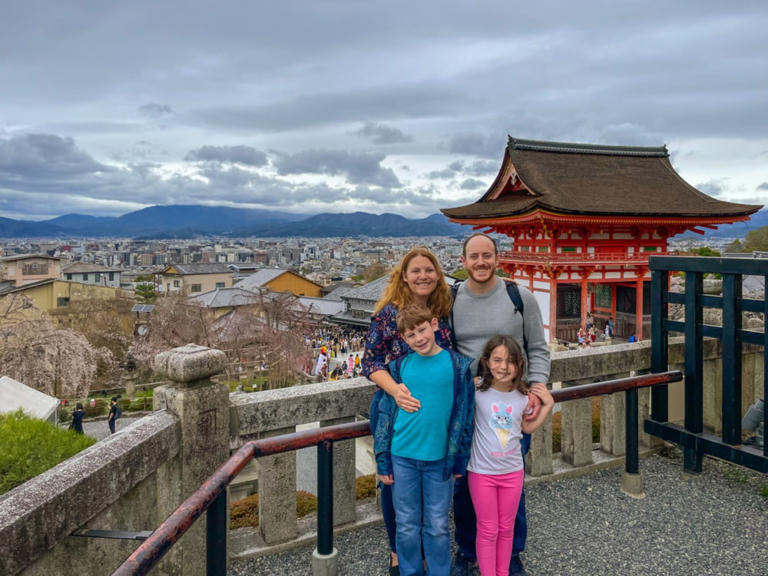
- Media & Industry
- Meetings & Events
- Select Language 简体中文 繁體中文(香港) 繁體中文(臺灣) India (English) Bahasa Indonesia 한국어 ภาษาไทย Tiếng Việt Singapore (English) Philippines (English) Malaysia (English) Australia/New Zealand (English) Français Deutsch Italiano Español United Kingdom (English) Nordic countries(English) Canada (English) Canada (Français) United States (English) Mexico (español) Português العربية Japan(日本語) Global (English)
- India (English)
- Bahasa Indonesia
- Singapore (English)
- Philippines (English)
- Malaysia (English)
- Australia/New Zealand (English)
- United Kingdom (English)
- Nordic countries(English)
- Canada (English)
- Canada (Français)
- United States (English)
- Mexico (español)
- Global (English)
- Fujiyoshida
- Shimonoseki
- Ishigaki Island
- Miyako Island
- Kerama Island
- Tokyo Island
- Koka & Shigaraki
- Hida Takayama
- Ginza, Nihonbashi
- Beppu & Yufuin (Onsen)
- Ginzan Onsen
- Nagasaki Islands

- Kumano Kodo
- Shikoku Karst
- Amami Oshima
- Hachimantai
- Omihachiman
- Aizuwakamatsu

- Diving in Japan
- Skiing in Japan
- Seasonal Flowers in Japan
- Sustainable Outdoors
- Off the Beaten Track in Japan
- Scenic Spots
- World Heritage
- Home Stays & Farm Stays

- Japanese Gardens
- Japanese Crafts
- Temple Stays
- Heritage Stays
- Festivals and Events
- Theater in Japan
- Japanese Tea Ceremony
- Cultural Experiences in Japan
- Culture in Japan

- Local Cuisine Eastern Japan
- Local Cuisine Western Japan
- Local Street Food
- Japan's Local Ekiben
- Japanese Whisky
- Vegetarian and Vegan Guide
- Sushi in Japan Guide
- Japanese Sake Breweries

- Art Museums
- Architecture
- Performing Arts
- Art Festivals
- Japanese Anime and Comics
- Japanese Ceramics
- Local Crafts

- Scenic Night Views
- Natural Wonders
- Theme Parks
- Samurai & Ninja
- Iconic Architecture

- Wellness Travel in Japan
- Japanese Ryokan Guide
- A Guide to Stargazing in Japan
- Relaxation in Japan
- Forest Bathing (Shinrin-yoku)

- Experiences in Japan
- Enjoy my Japan
- National Parks
- Japan's Local Treasures
- Japan Heritage
- Snow Like No Other
- Wonder Around Japan

- Visa Information
- Getting to Japan
- Airport Access
- COVID-19: Practical Information for Traveling to Japan
- Anime Tourism
- Countryside Stays
- Accessible Tourism
- Hokkaido Great Outdoors
- Scenic World Heritage in Tohoku
- Shikoku’s Nature and Traditions
- Southern Kyushu by Rail

- Traveling by Rail
- How to Travel by Train and Bus
- JR Rail Passes
- Scenic Railways
- Renting a Car
- Sustainable Travel in Japan
- Travel Brochures
- Useful Apps
- Online Reservation Sites
- Eco-friendly Accommodation
- Luxury Accommodations
- Traveling With a Disability
- Hands-free Travel
- How to Book a Certified Tour Guide
- Volunteer Guides
- Tourist Information Center

- Japanese Manners
- Spring in Japan
- Summer in Japan
- Autumn in Japan
- Winter in Japan
- Cherry Blossom Forecast
- Autumn Leaves Forecast

- Japan Visitor Hotline
- Travel Insurance in Japan
- Japan Safe Travel Information
- Accessibility in Japan
- Vegetarian Guide
- Muslim Travelers
- Safety Tips

- JAPAN Monthly Web Magazine
- Arts & Cultures
- Nature & Outdoor
- Festivals & Events
- Insider Blog
- Things to do
- Local Guides
- Food & drink
- Traditional
- Hokuriku Shinetsu

My Favorites
${v.desc | trunc(25)}
Planning a Trip to Japan?
Share your travel photos with us by hashtagging your images with #visitjapanjp
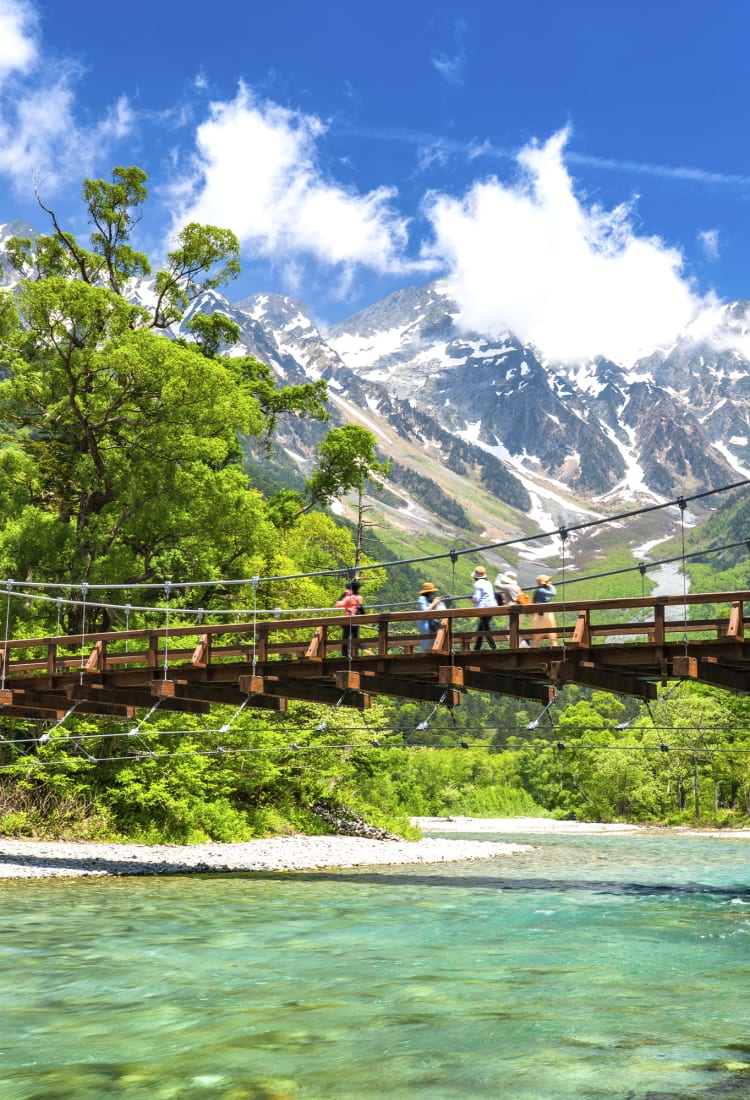
COVID-19: Practical Information for Traveling to Japan Explore and discover with peace of mind
All information here is gathered from the relevant authorities. Due to the regularly changing situation, it is essential for you to always check and follow the latest guidance.
Last updated: Friday, June 9th, 2023
We welcome you to visit Japan
A dip in a secluded mountain hot spring, a stroll through a picture-perfect temple garden, a steaming bowl of ramen at a hole-in-the-wall noodle shop; get ready to make your Japan dreams a reality. We look forward to welcoming you soon! Notice: All border measures to prevent the spread of COVID-19 were lifted on April 29th, 2023. Those who enter Japan on or after April 29th, 2023, are not be required to present a valid vaccination certificate or a COVID-19 negative test certificate.
Useful Information
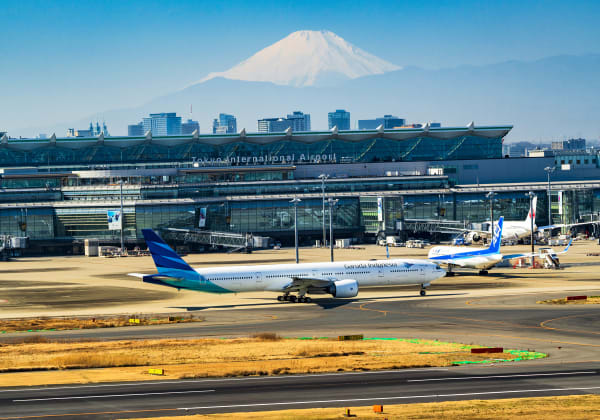
For Travelers

Information in case of illness or injury
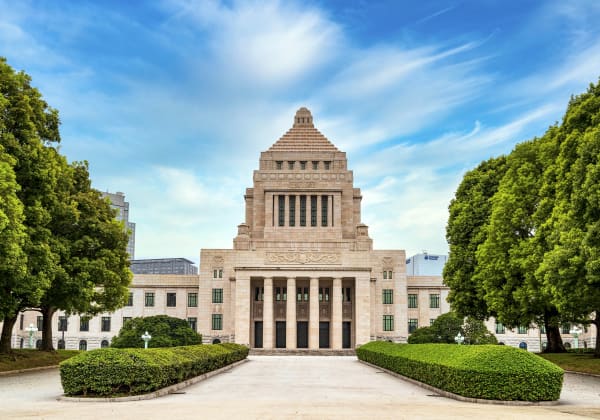
Measures by the Government
Get ready to make your japan dreams a reality.
Konnichiwa from some of our most iconic destinations. We look forward to seeing you again soon.
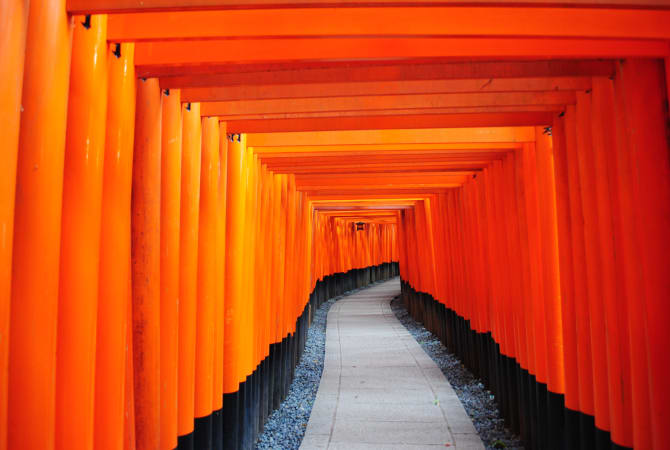
New Times, New Ways to Enjoy Japan
Let curiosity be your guide, and find your own piece of Japan.
Enjoy the outdoors at one of Japan's 34 amazing national parks
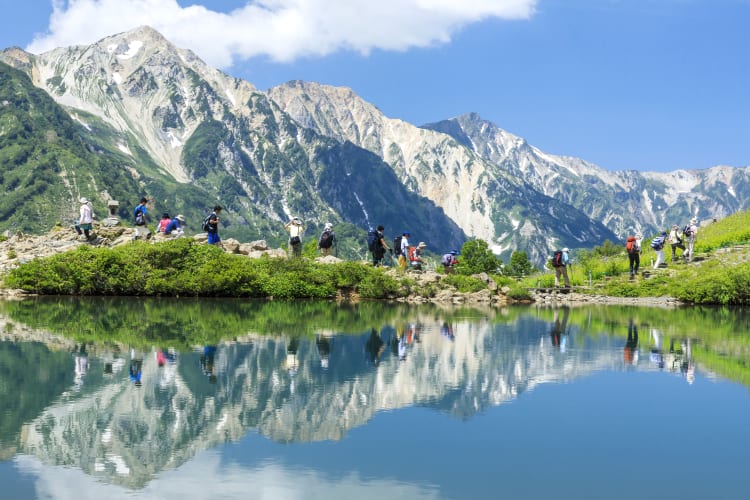
Shikoku, Shimane, Sendai or somewhere else—explore new destinations
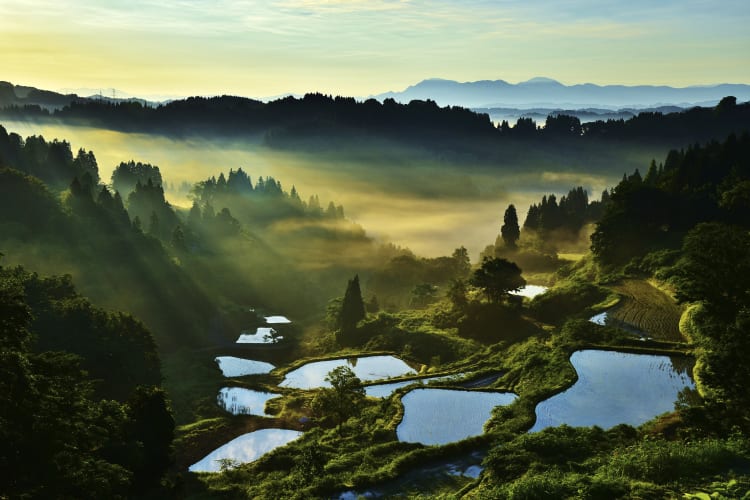
Browse our stories and guides for some fresh ideas

Relax: Make your next vacation about you
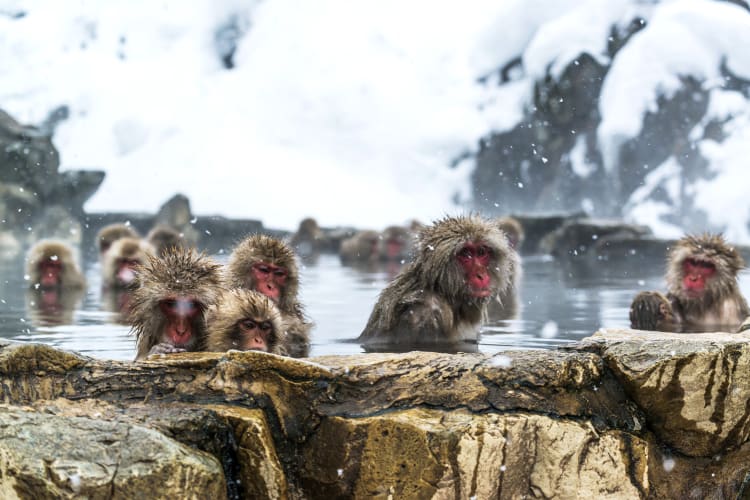
Please Choose Your Language
Browse the JNTO site in one of multiple languages
Japan erects 8-foot wall to ward off tourists trying to take perfect image of Mount Fuji
The decision to erect the eight feet barrier is similar to the action taken in places like austria's hallstatt, which faced a surge in tourism due to its resemblance to the animated film "frozen"..

- Share full article
Advertisement
Supported by
Biden and Kishida Agree to Tighten Military and Economic Ties to Counter China
President Biden is hosting Japan’s prime minister, Fumio Kishida, for a state visit as part of a broad diplomatic outreach.

By Peter Baker and Michael D. Shear
Reporting from the White House Rose Garden
President Biden and Prime Minister Fumio Kishida of Japan announced a range of moves on Wednesday to further enhance military, economic and other cooperation between the two longtime allies as part of the president’s efforts to counter China’s aggressive actions in the Indo-Pacific region.
During a pomp-filled ceremony honoring the visiting Japanese prime minister, the president said the United States and Japan would create an expanded defense architecture with Australia, participate in three-way military exercises with Britain and explore ways for Japan to join a U.S.-led coalition with Australia and Britain.
Mr. Biden also announced that the United States would take a Japanese astronaut to the moon as part of NASA’s Artemis program, which would be the first time a non-American has set foot on the moon.
“This is the most significant upgrade of our alliance since it was first established,” Mr. Biden said at a news conference in the White House Rose Garden along with the prime minister.
Mr. Kishida made a point of reaffirming Japan’s “strong support for Ukraine” in its war against Russia, a key priority for Mr. Biden, and framed the European conflict in terms of the precedent it could set in Japan’s neighborhood. “Ukraine today may be East Asia tomorrow,” Mr. Kishida said.
Biden Hosts Japan’s Prime Minister at the White House
President biden called the united states and japan “the closest of friends” during a welcoming ceremony for prime minister fumio kishida..
Just a few generations ago, our two nations were locked in a devastating conflict. It would have been easy to say we remain adversaries. Instead, we made a far better choice: We became the closest of friends. Mr. Prime Minister, Mr. Kishida, welcome back to the White House.

Mr. Biden’s statements on Wednesday fit into a long history of American presidents declaring that the U.S.-Japan relationship was the most important bilateral alliance in the world.
In preparation for the state visit, Mr. Biden’s aides described the closer military link as one of the biggest upgrades of the U.S.-Japan Security Treaty, which dates back to early 1960, an Eisenhower-era innovation to turn a former World War II enemy into what later presidents called America’s “biggest aircraft carrier in the Pacific.”
There has always been a bit of hyperbole to the statement. But as the perceived threat from China has grown, Japan has been the linchpin of broader U.S. efforts to unify its separate allies in the region — especially South Korea and the Philippines — into a coordinated force.
The prime minister’s visit comes at the same time Mr. Biden is strengthening the American partnership with the Philippines, which also finds itself the target of a mounting Chinese military presence in the South China Sea. On Thursday, Mr. Biden and Mr. Kishida will meet with President Ferdinand Marcos Jr. of the Philippines to demonstrate their joint commitment.
The day began with a welcoming ceremony on the South Lawn, where Mr. Biden hailed the relationship between the United States and Japan as a “cornerstone of peace, security, prosperity” and said that President Eisenhower’s promise of an “indestructible partnership” had been achieved.
“Just a few generations ago, our two nations were locked in a devastating conflict,” Mr. Biden said after he and Mr. Kishida watched a procession of U.S. military honor guards upon the prime minister’s arrival at the White House. “It would have been easy to say we remain adversaries. Instead, we made a far better choice: We became the closest of friends.”
The Biden administration signaled the importance of its relationship with Tokyo by holding an official state dinner on Wednesday evening in honor of Mr. Kishida, something reserved for America’s closest allies.
The visit comes amid hand-wringing in Washington and Tokyo over the possibility of a return to power by former President Donald J. Trump, whose unpredictable foreign policy kept many world leaders on edge. One goal for Mr. Biden, officials said, is to create as much permanence in the Japanese relationship as possible before the election in November.
One administration official, speaking on the condition of anonymity to discuss the upcoming meeting, said there was “anxiety in capitals” around the world, including in Tokyo, about whether Mr. Trump would continue the international engagement that Mr. Biden and prior presidents have embraced. Another official said there was a real risk that Mr. Trump, if re-elected, could move to undo what the leaders of the two countries announced on Wednesday.
Mr. Biden and Mr. Kishida outlined greater coordination and integration between the military forces of both countries, including the formation of a joint defense council that could support more defense-related exports of equipment produced in Japan. And officials agreed on new cooperation on ventures in space and collaboration between research institutions working on artificial intelligence, semiconductors and clean energy.
“The American alliance system has helped bring peace and stability to the Indo-Pacific for decades, and now we need to update and upgrade that alliance network for the modern age,” said Jake Sullivan, the White House national security adviser. “It goes way beyond security. It’s economics. It’s technology. It’s infrastructure development. And it’s diplomacy. And that’s all going to be on display in the meeting with the prime minister.”
Rahm Emanuel, the United States ambassador to Japan, called the meeting a chance for the two nations to go beyond America’s work to protect Japan and to “write the first chapter of the next era” of cooperation as they work together to project power throughout the region.
That would be a more far-reaching relationship than the United States has historically had with Japan, which for decades after World War II restricted its spending on defense and its engagement around the world.
That began to change during the past several years, under Mr. Kishida, who pushed to expand defense spending and participate in global efforts like the sanctions on Russia for its invasion of Ukraine. Administration officials said Japan’s new willingness to become a full partner with the United States on the global stage has taken the alliance between the two countries to a new level.
But there are still some tensions. The two leaders had to dance carefully around Mr. Biden’s reluctance to let a Japanese firm buy a storied U.S. steel maker. That struck national security experts as strange, since such deals are usually blocked only when they give critical technology to adversaries, not allies.
“The idea that you block the acquisition of a company by one of your closest allies makes no sense in alliance-building terms,” said Joseph S. Nye Jr., an emeritus professor at Harvard who designed many of the defense cooperation strategies with Japan in the Clinton administration.
The meeting on Thursday between Mr. Biden, Mr. Kishida and Mr. Marcos represents a more aggressive effort by the United States and its allies to isolate China — rather than allowing the Chinese leadership to intimidate and isolate its neighbors in the South China Sea and elsewhere.
The Thursday meeting will be the first time that the leaders of the three nations have met together, officials said.
“We’re continuing to deepen our cooperation with our closest partners to ensure what we’ve talked about many times from this podium and elsewhere: a free, open and prosperous Indo Pacific,” Mr. Sullivan told reporters during a briefing at the White House on Tuesday.
Mr. Sullivan declined to say whether Mr. Biden would raise with Mr. Kishida the issue of plans by Nippon Steel, a Japanese corporation, to acquire U.S. Steel , the struggling manufacturer based in Pittsburgh. Mr. Biden has publicly said that he will have “the backs” of union steel workers, indicating his opposition to the deal.
“You guys all know Joe Biden,” he said. “You’ve seen Joe Biden. He’s been very clear that he’s going to stand up for American workers. He’s going to defend your interests. He’s also been very clear that he is going to make sure that the U.S.-Japan alliance is the strongest it’s ever been.”
But administration officials said later on Tuesday that they did not think the subject would come up between the two leaders on Wednesday because both men already know the position of the other.
Mr. Biden greeted Mr. Kishida on Tuesday evening for a brief arrival at the White House. Later, the two leaders and their wives went to BlackSalt, an upscale seafood restaurant in Washington, for a more casual dinner ahead of the formal events on Wednesday.
White House officials said the couples had exchanged a series of gifts on Tuesday evening, a diplomatic tradition for such events. The official gift from Mr. Biden and Jill Biden, the first lady, was a three-legged table that was handmade by a Japanese American-owned company in Pennsylvania.
Other gifts included a lithograph and a two-volume LP set autographed by Billy Joel and a vintage vinyl record collection. Dr. Biden gave Ms. Kishida a framed painting of the Yoshino cherry tree that the two had planted on the South Lawn last spring, and a soccer ball signed by the U.S. women’s national soccer team and the Japanese women’s team.
At the state dinner, the White House was scheduled to serve a meal that would include house-cured salmon and dry-aged rib-eye steak with blistered shishito pepper butter.
David E. Sanger contributed reporting.
An earlier version of this article misstated which countries belong to a security pact that Japan may join. Its members are the United States, Australia and Britain, not the United States, Australia and New Zealand.
Because of an editing error, an earlier version of a home page headline with this article misstated the surname of Japan’s prime minister. He is Fumio Kishida, not Fushida.
How we handle corrections
Peter Baker is the chief White House correspondent for The Times. He has covered the last five presidents and sometimes writes analytical pieces that place presidents and their administrations in a larger context and historical framework. More about Peter Baker
Michael D. Shear is a White House correspondent for The New York Times, covering President Biden and his administration. He has reported on politics for more than 30 years. More about Michael D. Shear
8 Best Places To Travel In May 2024
Wondering where to travel in May? These top destinations in May are amazing during this month, from The Bahamas to the UK and beyond.
- Explore Munich in vibrant May weather, which is not crowded like during the Oktoberfest season. Enjoy beer culture in peaceful beer gardens.
- Brighton in the UK offers amazing weather in May, perfect for festivals and beach exploration without the summer crowds.
- Enjoy comfort in the Algarve's pleasant May weather and explore beautiful beaches without peak season crowds.
The transition between seasons is always exciting, and May, which is right between winter and summer, might just be the perfect time to explore many of the world's most beautiful places.
Temperatures are beginning to get better, and summer crowds haven't checked in yet, which means travelers can enjoy the scenery, the cultural attractions, and the art, without rubbing shoulders with every other tourist.
From some of the beautiful cities in Italy to add to your bucket list to a handful of the most beautiful destinations in the US , plenty of places guarantee unforgettable adventures in May. Here are eight of the best places to travel to in May 2024.
7 International Vacations That Take No Planning At All
8 munich, germany, springfest, beer culture, quiet streets, and comfortable weather.
Munich, which is officially the most walkable city in the world , is one of the most vibrant cities in Germany. The city of Munich offers lots to do and see and is among the world's best May destinations, thanks to its incredible beer culture, which tourists can enjoy exploring at this time of the year. Beer has always been an integral part of the city's lifestyle, and nothing could beat gathering in one of its incredible beer gardens .
May is also when the SpringFest happens, which may scare away some tourists because the city's world-famous Oktoberfest gets so crowded. However, SpringFest doesn't get that crowded, and vacationers will definitely have fun.
Generally, the weather in May is very comfortable in Munich and the streets are also quieter and calmer than in the summer months.
7 Brighton, UK
Amazing weather, great beaches, and fun festivals.
An incredible blend of historical architecture, modern amenities, sandy beaches, and breathtaking countryside makes Brighton an ideal destination not to miss on the bucket list. May is when the weather starts to become much more comfortable to explore beautiful attractions, such as the Palace Pier and the Lanes .
The Great Escape Music Festival , which allows the public to appreciate more than 500 up-and-coming artists from different parts of the world, happens in May. Moreover, tourists can also attend the Brighton Fringe , England's biggest art festival, which comes with over 500 fun events to watch in the city's theaters, pubs, and unique spots, running between May 3 and June 2.
6 The Bahamas
Beautiful weather, fewer crowds, amazing beaches.
There are plenty of experiences in this part of the world, from the best cruises in the Bahamas to some of the most beautiful beaches in the Caribbean.
Winter (between late November and April) is when the island nation is busiest. However, visitors can avoid crowds by choosing to visit in May, which is also when temperatures are most comfortable.
Cable Beach, Gold Rock Beach, Half Moon, and Pink Sands Beach are some of the most gorgeous beaches in the Bahamas to enjoy at this time of the year.
5 Algarve, Portugal
Comfortable weather and beautiful beaches that you can explore without crowds.
Whether spending a perfect day in Portugal's Algarve or visiting the city for the weekend, this European destination is beautiful and full of fun adventures for any type of vacationer.
May not only brings comfortable temperatures for enjoying the great outdoors but also comes with fewer crowds without rubbing shoulders like in the peak season (June through September).
One of the best things to do in the Algarve is to explore its beautiful beaches, and there is no better time than May. Spend time in Praia de Marinha , which is one of the most pristine beaches in Europe, and Praia de Camilo , another spectacular stretch of sand.
When exploring Praia de Marinha , spare some time for Benagil Cave, a famous sea cave located only 10 minutes away.
8 International Vacations For Less Than $1,000 A Week
4 catalonia, spain, splendid weather, fewer crowds, and amazing events.
From visiting the National Museum of Art to seeing the Sagrada di Familia's Construction, there are plenty of things to do in Barcelona , which is great to explore in May, but there is more to Catalonia than its vibrant capital. Girona, which is known for being featured in the world-famous Game of Thrones , as well as Costa Brava and Tarragona are equally stunning.
Visiting Catalonia in May offers a lot of advantages, including splendid weather and fewer crowds. Furthermore, there are plenty of fun events to attend at that time of the year.
Try some of the tastiest vermouths at the Vermut & Soul Festival , which happens between May 3 and 5. The event features delicious food, drinks, music, and fun activities. One can also attend the Gargar Festival , which gives visitors a chance to marvel at the breathtaking street art in Penelles.
8 Trending Bucket List Destinations (& Cheaper Alternatives)
3 the grand canyon, usa, the temperatures are cool, crowds are thinner, and the travel cost is lower.
The Grand Canyon , one of the most beautiful national parks in the US , is famous for its unique geological features, rugged landscape, and incredible wildlife, which attract over 4 million travelers every year . Arizona's crown jewel is among the best places to travel in May 2024.
The summer heat can be unbearable, which is why exploring just before the summer season is a great way of making the most of one's trip to the canyon. The crowds are also thinnest at this time of the year, which gives tourists a chance to enjoy the trails and the scenic overlooks without many people hoping to enjoy the same adventures.
Surprisingly, the Grand Canyon is one of the US destinations to plan a vacation for less than $1,000 , and one can spend $1,174 for one week on average and as low as $509 on a budget .
The Grand Canyon is stunning, but Bryce Canyon , which is underrated, makes a perfect alternative national park getaway in May. The snow is almost all gone and the temperatures, in the 60s during the day, are perfect for enjoying the beautiful trails.
2 Paris, France
Mild weather, spring blossoms, fewer crowds.
The City of Love is famous for many things, including the Seine, which is among the most scenic rivers in Europe , the Eiffel Tower, and the Louvre . Paris offers some of the most fun experiences in May, thanks to the mild weather, which makes it comfortable to explore the city's popular attractions as well as hidden gems.
The crowds are also thinner, and tourists will mostly experience quieter streets than in the peak summer season. This is also the time to see the cherry blossoms, and Jardin des Plantes in the city's 5th Arrondissement is the perfect spot for this adventure.
A trip to the French capital can't be complete without experiencing some of the best dinner cruises in Paris . Also, try some of the most unforgettable dining adventures in Paris .
10 Things To Buy In Paris If You're Visiting For The First Time
1 florence, italy, pleasant weather, fewer crowds, and lots of things to do.
Florence, one of the best destinations in Europe for romantic city breaks , is among the best places to travel to in May, thanks to pleasant weather, fewer crowds, and plenty of things to do.
This is the time the blooming flowers transform Boboli Gardens into a scenic fairytale; it's a feast for the eyes. Another must-have experience is strolling under the wisteria archway in Bardini Gardens .
- Cat Behavior
- Health & Care
How to Travel With a Cat: 14 Vet Approved Tips & Tricks
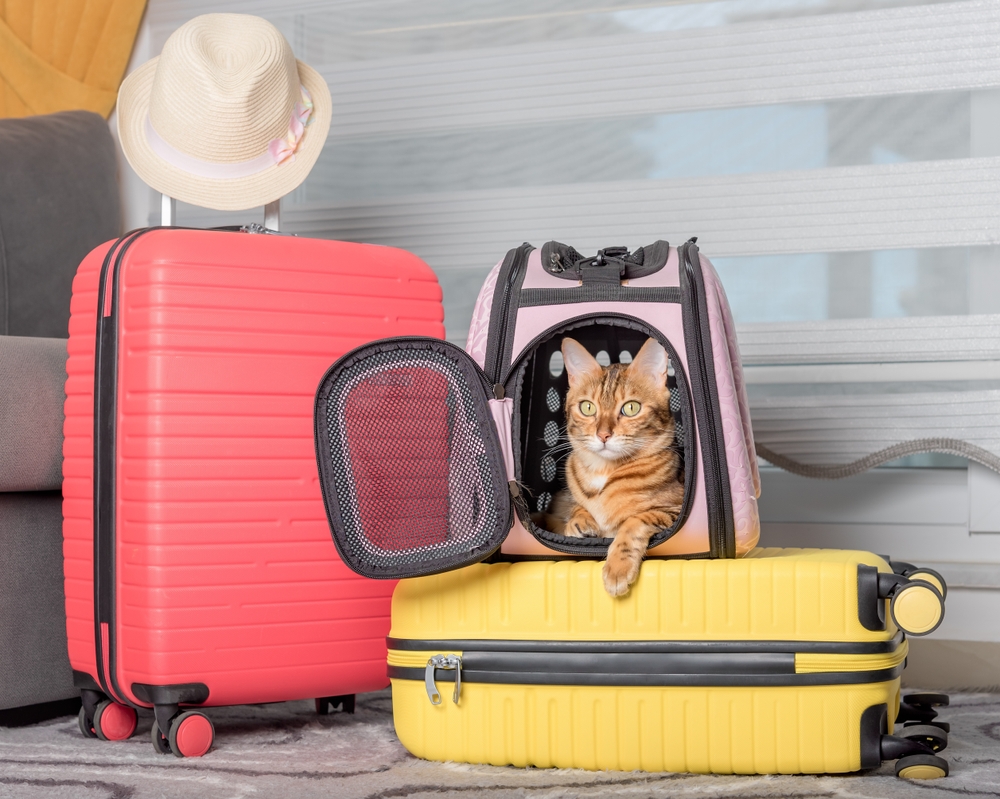
Image Credit: Svetlana Rey, Shutterstock
Last Updated on April 19, 2024 by Catster Editorial Team
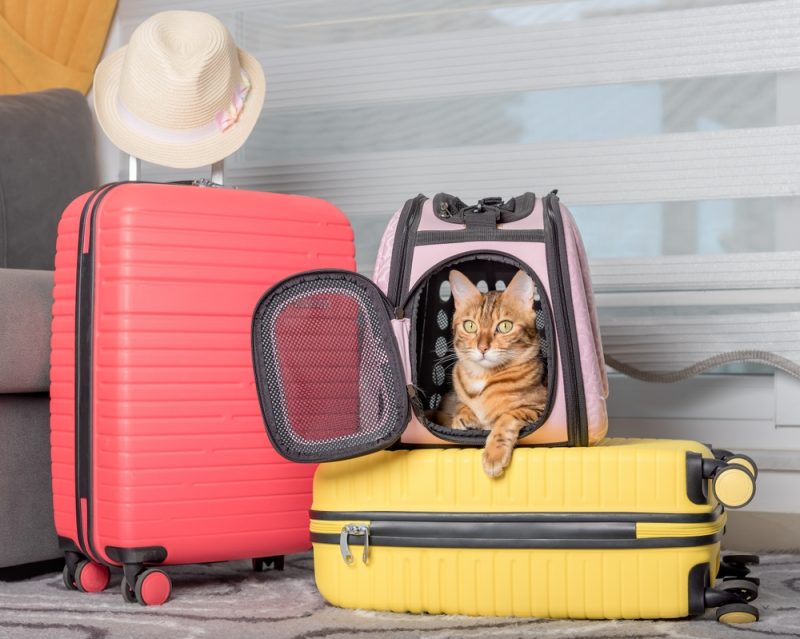
VET APPROVED
REVIEWED & FACT-CHECKED BY
Dr. Amanda Charles
BVSc GPCert (Derm) MRCVS (Veterinarian)
The information is current and up-to-date in accordance with the latest veterinarian research.
Traveling with a cat can be rewarding, but it requires thorough planning. Whether you’re getting ready to drive a short distance and hang out with family or fly somewhere for a relaxing vacation, there are a few factors to consider when traveling with your cat.
Make sure to start the planning process early, particularly if you’re traveling internationally or are going to stay in a hotel during any part of your journey. Below, you’ll find 14 tips and tricks to make your journey with your cat successful.

- The 14 Tips to Travel with a Cat
- 1. Invest in a Good Carrier
Cats should always be restrained when riding in cars, and airports require them to stay in their carriers at all times (except during the security screening process). Airlines have several rules and regulations regarding traveling with pets, including guidelines regarding the size of carriers.
Make sure the carrier you use meets the airline’s regulations and requirements. If you’re driving, the sky’s the limit when it comes to the size of your cat’s mobile palace. Carriers should be sturdy, well-ventilated, secure, and easy to clean. Plastic carriers are usually the best options.
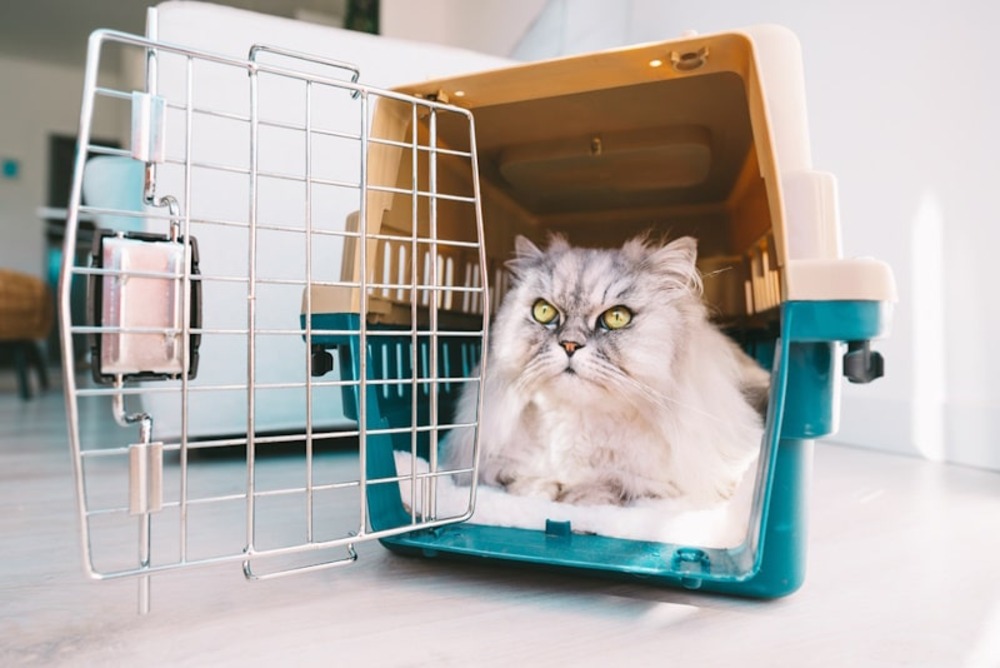
- 2. Give Your Cat Time to Get Used to Their Carrier
Because cats spend so much time in their carriers when traveling, they must feel comfortable in them. Consider leaving your cat’s carrier out so they can get used to it before your trip.
Letting your cat have dinner in their carrier a few times may encourage them to develop positive associations with their traveling home.
- 3. Invest in a Good Harness and Leash
If you visit a rest stop during a road trip, your cat should be harnessed and leashed when they’re away from their carrier to ensure they can’t run off and get lost if they become scared.
Make sure the harness you choose fits properly, and give your cat time to get used to wearing it so they’re ready to do so when you hit the road.
Are you looking for the perfect cat harness? We suggest Hepper's Cat Harness & Leash Set , which includes a nicely designed, machine-washable harness made from soft, sturdy velvet and mesh.

- Escape Proof - Cat leashes and harnesses for walking aren't all equally secure. Our double aluminium...
- Superior Comfort - Our cat harnesses are lightweight, made with premium velvet fabric, breathable...
- Free Extra Strength Leash - You don't need to worry about your cat escaping this harness. This cat...
This harness is easy to put on and take off and features reinforced stitching, reflective stripes, and quick-release buckles. This set also includes a great leash made from durable nylon climbing rope.
At Catster, we’ve admired Hepper for many years and decided to take a controlling ownership interest so that we could benefit from the outstanding designs of this cool cat company!
- 4. Practice Everything
No matter how you’re traveling, your cat must be comfortable entering and exiting the carrier. If you’re flying, you’ll need to take them out of their carrier during the security screening process in the airport.
You can practice taking your cat out of the carrier when you’re around other people to make them more comfortable during the security check. If you plan on driving, consider taking your cat for a few practice rides to get them used to spending time in the car. Make sure to reward them for their cooperation!
- 5. Ask Your Veterinarian for Advice
Some easily stressed cats may benefit from medication to help them stay mellow while traveling. However, sedation isn’t suitable for all cats, and most airlines won’t transport pets who have been tranquilized or sedated.

- 6. Have Cleaning Supplies on Hand
Pack a bag with cleaning supplies and plan to have it close at hand while you’re underway in case your cat has an accident and you need to do a bit of on-the-fly cleaning. It’s best to pack paper towels or cleaning wipes, gloves, and baggies for disposal.

- Gentle Care For All Pets - Infused with moisturizing hypoallergenic ingredients & enriched with...
- Deep Cleans From Head to Tail - Tackle the toughest dirt & messes with our extra strong pet wipes...
- Freshness On The Go - Each dog grooming wipes pack contains 30 counts of premium dog wipes that...
It's hard to beat the convenience of pet-safe wipes after a big adventure, between baths, or when cleaning sensitive areas. Our favorite option is Hepper's Wash Wipes, premium wipes designed to safely and gently remove grime from cats and dogs of all ages and sizes. These hypoallergenic wipes are made in the USA and feature moisturizing ingredients to soothe your pet's skin.
- 7. Pack Toys and Blankets
Take a few of your cat’s favorite toys and a well-loved blanket that smells like home to keep them comfortable while away from their territory. Putting a favorite blanket in your cat’s carrier may make being on the road less stressful.
A stuffed toy might look a little different than a traditional cat toy but many felines find them quite enticing. The Hepper Plush Whale serves a dual purpose, featuring a faux fur exterior that mimics prey and a soft interior for cuddling during long cat naps when playtime is over. The best part about it is it's an affordable option for ages, sizes, and conditions. Learn more about why your cat needs a plush here!

- Tailored size even for kittens - the compact size of the whale plush cat toy at 15cm long ensures...
- Catnip Free Cat Toys - Made with top quality plush exterior & cotton interior, it's perfect for cats...
- Peaceful Playtime - No more squeaky cat toys for indoor cats. This stuffed cat toy is perfect for...
At Catster, we've admired Hepper for many years, and decided to take a controlling ownership interest so that we could benefit from the outstanding designs of this cool cat company!
- 8. Consider Portable Litter Boxes
If you’re traveling by car , pack a litter box with some of your cat’s regular litter. Plastic poop bags and a scoop are also essential. If you’re staying at a hotel, check their pet policies thoroughly.
Most hotels that accept cats don’t provide litter boxes and litter. Collapsible litter boxes are ideal for shorter trips and can be folded down and packed.
- 9. Pack Food, Water, Treats, and Medication
If you’re traveling by car, bring enough of your cat’s regular food to keep them happy while you’re away from home. It’s also helpful (and usually mandatory) to pack food and water for your cat while flying, but some cats may be too nervous to eat until you land.
If your cat takes medication, pack enough to last them for your entire trip, and consider putting it in your carry-on luggage to ensure you have access to it even if your checked luggage takes a detour.
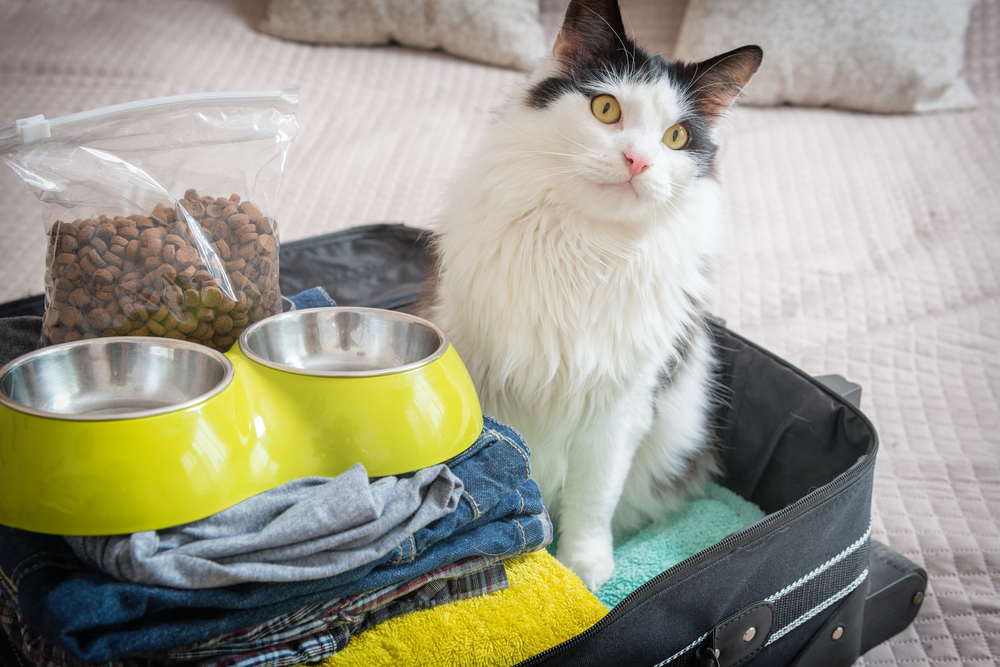
- 10. Consider Pheromones
Commercial synthetic feline pheromone products may help some cats stay calm while underway by reducing stress and creating a sense of safety and well-being. They’re available in sprays and wipes, so your cat can enjoy the benefits of calming pheromones while you’re on the road.
- 11. Check Your Cat’s Microchip Registration
Ensure that the registry where your cat’s microchip is registered has the right contact information. Losing your cat when you’re out of town is a nightmare, but an up-to-date microchip can significantly improve the chances of their return.
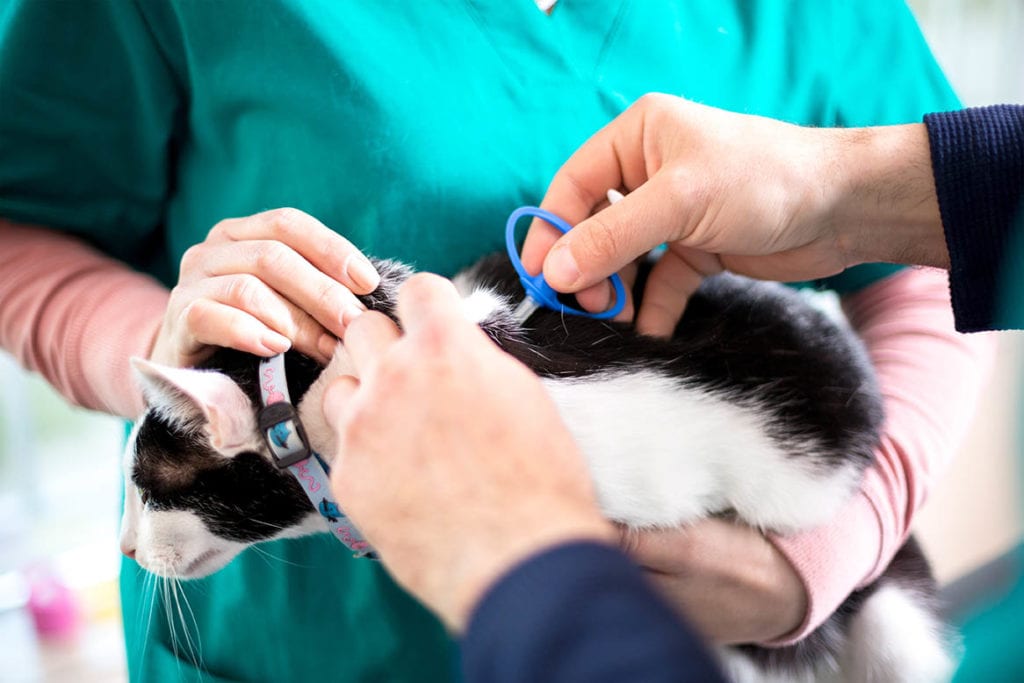
- 12. Collect Your Cat’s Medical Information
It’s vital to collect your cat’s medical information before you plan to leave and make sure you have a way to access it while you’re on the road in case they require veterinary care while you’re away from home.
Ensure you have all the documentation and certificates your cat needs to travel, including their vaccination status. Remember that the requirements vary based on where you’re headed and how you plan to travel.
- 13. Double Check Your Reservations
If you plan on staying in a hotel at your destination, contact the property ahead of time to ensure pets are permitted and get information about the rules and requirements that may apply. Don’t forget to inquire about the availability of litter boxes and food and water bowls.

- 14. Invest in Physical ID Tags
It’s best to attach an ID tag with your name and contact information to your cat’s collar. It will make it easy for people to reach out to you if your cat gets loose and makes a run for it.
Microchips are helpful , but lost cats need to be taken to shelters or veterinarians with scanners for their chips to be read. ID tags make the reunification process far more efficient; if your cat runs off, anyone who finds them can simply give you a call.

Traveling with cats can be stress-free with a bit of planning and preparation. Make sure to get started before you hit the road with your cat , particularly if you’re thinking about flying or staying in a hotel. Also, don’t forget to invest in an appropriate carrier and give your cat lots of time to get used to it.
- Hiking With a Cat: Is It Possible?
- Traveling With Kittens: Essential Tips
- https://vcahospitals.com/know-your-pet/flying-with-your-cat
- https://vcahospitals.com/know-your-pet/road-trips-and-car-travel-with-your-cat
- https://www.petmd.com/cat/care/8-tips-traveling-cat
- https://www.avma.org/resources-tools/pet-owners/petcare/traveling-your-pet-faq
- https://www.aa.com/i18n/travel-info/special-assistance/pets.jsp#:~:text=As%20recommended%20by%20the%20American,cardiovascular%20problems%20at%20high%20altitudes.
Featured Image Credit: Angels Relax CZ, Shutterstock
About the Author
Lorre Luther
Lorre Luther is a writer who is firmly convinced that cats are smarter than humans. She left her law career in the United States and moved to the Netherlands to follow her dream of becoming a writer. Lorre currently lives in Rotterdam, she enjoys traveling and greatly appreciates the beauty of nature. Lorre has a spot for animals and admires the intelligence of cats.

Zumalka Pet Supplement Review 2024: A Detailed Look

10 Pet-Friendly Hotels in St. George, Utah (2024 Update)

Does Health Monitoring Cat Litter Work? Vet Reviewed Facts & FAQ
Get catster in your inbox.

Here Comes the Sun: Is It Alright? Dangerous Things Cats Like

Cat Dogs: Cats for People Who Think They Don’t Like Cats

Strange Places That Cats Hide: Olga’s Preferred Spots
© pangolia pte. ltd. all rights reserved..


IMAGES
VIDEO
COMMENTS
The Golden Week holiday period is between late April and early May, and is one of Japan's busiest travel periods. With major tourist destination packed, May is a good time to explore lower-key options. The giant carp streamers you can see around rural Japan in May are koinobori, traditional decorations for Children's Day (May 5)
The next easing on the anti-Covid measures in Japan has been confirmed on Friday March 10, with an implementation first announced for May 8, 2023, but finally starting from Saturday April 29, 2023. Some excellent news for international visitors, who were allowed in Japan for sightseeing since October 11, 2022, but with specific entry procedures.
When Japan reopened borders to independent foreign travelers on October 11th, 2022, there was another item to add to that list - either three doses of an approved COVID vaccine, or a negative PCR test within 72 hours of travel. Understandably, these extra requirements have seen some potential visitors hold off from solidifying plans. There's ...
Japan will end all COVID-19-related border restrictions on May 8, making it one of the last remaining countries to drop pandemic-era rules for visitors. "Notice: All border measures to prevent ...
When Japan reopened borders to independent foreign travelers on October 11th, 2022, there was another item to add to that list - either three doses of an approved COVID vaccine, or a negative PCR test within 72 hours of travel. Understandably, these extra requirements have seen some potential visitors hold off from solidifying plans.
Last updated: Wednesday, May 31st, 2023. Get ready for your dream trip to Japan! Japan is now open to travelers from all countries or regions! Those who enter Japan on or after April 29th 2023 are not be required to present a valid vaccination certificate or a Covid-19 negative test certificate.
Kyodo. Apr 3, 2023. Japan will end the current border control measures on travelers from overseas on May 8 in line with its decision to categorize COVID-19 as a common disease the same day, the ...
With Japan moving to downgrade the classification of Covid-19, however, it looks like we're reaching the end of this 'new normal'. According to Kyodo News, those entering Japan on or after May 8 ...
Kaila Imada. Monday 30 January 2023. Just last week, Prime Minister Fumio Kishida confirmed that Japan would be downgrading the Covid-19 disease classification status to the same level as the ...
Weather. May is the last month of spring in Japan, and temperatures throughout the country are fairly warm. While the northernmost island of Hokkaido remains quite cool—Sapporo has an average May high of just 63° F (17° C)—most southern places are much hotter.Tokyo, Osaka, Kyoto, and Fukuoka have average May highs of 74° F (24° C), and by the end of the month are likely to be quite hot.
Tokyo weather will feel like a mild summer. The humidity in May is nowhere near what it becomes in the following months, so it's a great time to enjoy the city. Even though the temperatures are not going to be too high, though, remember that you will likely be walking around a lot, so you may feel a little hotter than you expect if you don ...
Central and Eastern Japan in May, including Tokyo, Kanagawa, and Nagano, experiences a delightful transformation in May. The weather is comfortably warm, with average temperatures hovering between 15°C (59°F) and 22°C (72°F), providing perfect conditions for sightseeing and outdoor activities. This region, known for its mix of modern urban ...
One of Kyoto's three greatest festivals, Aoi Matsuri is also held in mid May, featuring a traditional parade with people in Heian-era costumes. Related article Japan's 3 Biggest Festivals in May. 6. Pink Moss. Pink Moss (Shibazakra in Japanese) is popular spring flower along with cherry blossoms.
1. Re: New entry procedure after May 8, 2023. I was planning to fill out VJW forms in a few weeks. But since my arrival is post May 8, I went ahead to see if it would work. Got blue screen for customs, yellow for immigration and my vaccination card was confirmed in a matter of minutes (blue screen). I did print screen for all but I imagine the ...
Completing the scene are the serene reflecting pool and traditional Japanese gardens that contain lush foliage, manicured trees, and scenic walking paths. 1 Kinkakuji-cho, Kita-ku, Kyoto-shi, Kyoto, +81 075-461-0013, shokoku-ji.jp. Open daily 9am-5pm. Admission is 500 JPY. Admire Ryoan-ji Temple.
When: May 1-5, 2024. Website: Fujiwara Festival. 9. Mikuni Festival. 藤谷良秀 (Fujitani Yoshihide) , CC BY-SA 4.0, via Wikimedia Commons. The coastal town of Mikuni in Fukui was once one of the most important ports in Japan, and every year this is celebrated with a cheerful festival that is full of fun.
The net, which measures eight feet (2.5 meters) high and 66 feet across (20 meters), will be erected early next week. The town of Fujikawaguchiko is in Yamanashi prefecture, to the north of Fuji ...
1 Why May Gets Overlooked by Foreign Visitors to Japan. 2 My Favorite Reasons to Visit Japan in May. 2.1 The "new" green of spring. 2.2 Warm days, mild nights. 2.3 Calm before the storm (literally) 2.4 Lack of sakura pressure. 2.5 (Mostly) light crowds. 3 Where Should You Go in Japan in May?
Where: Yamagata City Hall, Yamagata Prefecture. When: 22 - 23 May, 2021. Summary: The Tohoku Kizuna Festival started in 2011 in memory of the Great East Japan Earthquake and the recovery efforts carried out ever since. It features 6 major festivals from the Tohoku region. Official website: Tohoku Kizuna Matsuri.
Below are some sample budgets for the itinerary, excluding airfare. Find out more about the sample budgets and about the current yen exchange rates. Single Traveler. Two Travelers. Low Budget. 71,000 - 97,600 yen. 142,000 - 195,200 yen. Medium Budget. 97,600 - 176,000 yen.
Two big cities in eight days may seem a bit rushed, but we still have time to explore some neighbourhoods outside of the top sights. So I believe this itinerary is suitable for first timers to visit Japan. In this 8-day Japan itinerary that covers Osaka, Kyoto, Tokyo, Nara and Hakone, I will share from my own experiences and added some ...
At Tokyo Tower, a special arrangement for Children's Day (May 5th) will feature a colorful display of koinobori, or carp streamers, traditionally used to wish for the healthy growth of boys. In honor of Tokyo Tower's height of 333 meters, 333 vibrant carp streamers will be hoisted in front of the main entrance on the first floor, creating a spectacular sight as they "swim" energetically in the ...
1. Plan as far in advance as you can. As frequent readers of this website know, we're avid travelers and have been all over the world - sometimes hopping countries on just a few days' notice ...
Planning a Trip to Japan? Share your travel photos with us by hashtagging your images with #visitjapanjp. COVID-19: Practical Information for Traveling to Japan Explore and discover with peace of mind. All information here is gathered from the relevant authorities. Due to the regularly changing situation, it is essential for you to always check ...
3 Min Read. A charming town in Japan is taking drastic action to address the issue of overtourism as travellers flock a bustling convenience store to get the perfect photo spot of the iconic Mount Fuji. Fujikawaguchiko, nestled at the base of the Yoshida Trail leading to Mount Fuji, has been overwhelmed by the influx of foreign visitors vying ...
Mr. Biden's statements on Wednesday fit into a long history of American presidents declaring that the U.S.-Japan relationship was the most important bilateral alliance in the world.
However, visitors can avoid crowds by choosing to visit in May, which is also when temperatures are most comfortable. Cable Beach, Gold Rock Beach, Half Moon, and Pink Sands Beach are some of the most gorgeous beaches in the Bahamas to enjoy at this time of the year. Average temperature. 78°F.
The 14 Tips to Travel with a Cat. 1. Invest in a Good Carrier. Cats should always be restrained when riding in cars, and airports require them to stay in their carriers at all times (except during ...